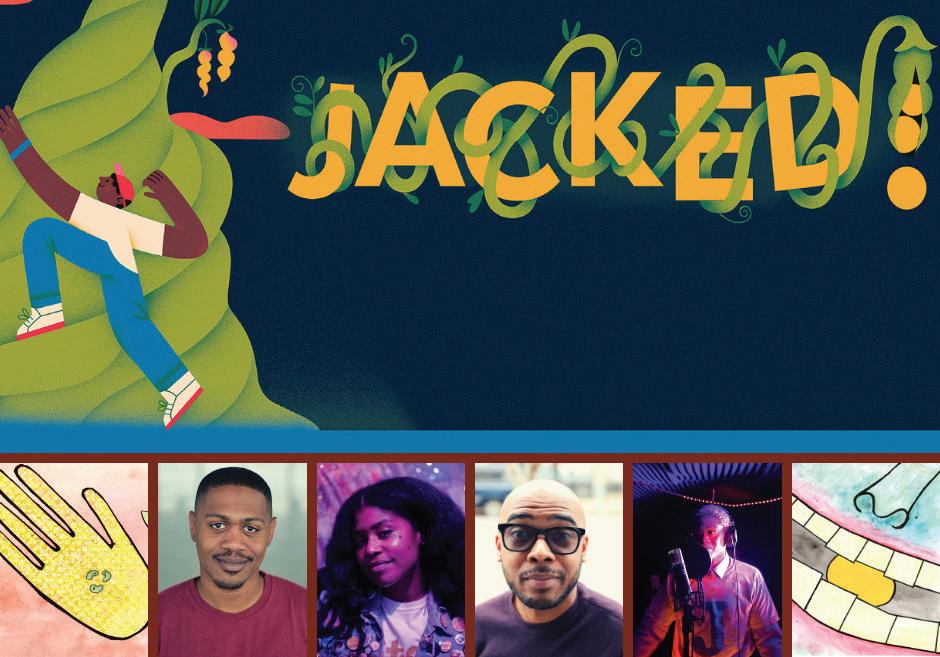
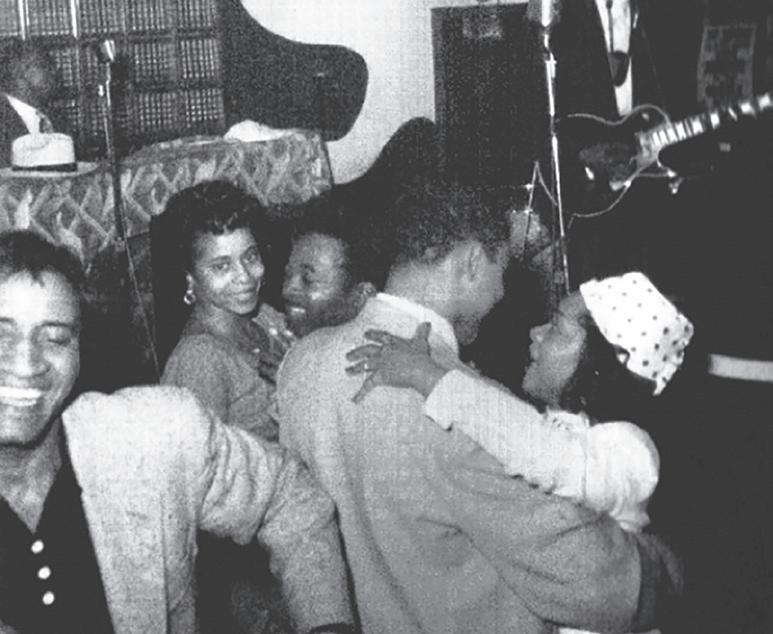
East Boogie Livin’ for the weekend for more




East Boogie Livin’ for the weekend for more

By Dana Rieck
Like a scene from a movie, inmates on Saturday morning took over two units on the fourth floor of the City Justice Center. As they stood at a row of broken exterior windows, throwing flaming objects onto the sidewalk below, they did exactly what many said they were trying to do — draw attention to their cause. The online comment sections of every local news outlet covering the uprising illustrated one major theme — the people of greater St. Louis are hotly-divided when it comes to the city’s incarceration rates and its treatment of inmates during the coronavirus pandemic.
n “So this was a bunch of folk that were defiant, this was a bunch of people who decided that they were going to engage in criminal mayhem and that’s exactly what they did.”
— Jimmie Edwards, Public Safety director
“I think what we saw today was a buildup of deep frustration and process around the human rights of folks being detained in our local jails,” Kayla Reed, executive director of Action St. Louis, said on Saturday afternoon.
Public Safety Director Jimmie Edwards, in a briefing Saturday morning as the uprising was brought under control, laid out the counter argument to Reed’s perspective.
“So this was a bunch of folk that were defiant, this was a bunch of people who decided that they were going to engage in criminal mayhem and that’s exactly what they did,” he said. “And they should be held accountable for what they did.” Edwards went on to say that the most violent people were held at the Justice Center, even though almost all inmates there are being held while awaiting trial.
When asked Monday about his language used to describe the inmates, he said all inmates should be respected, but then doubled-down on his stance.
“But if you’re charged with homicide, or you’re charged with assault on a police officer,
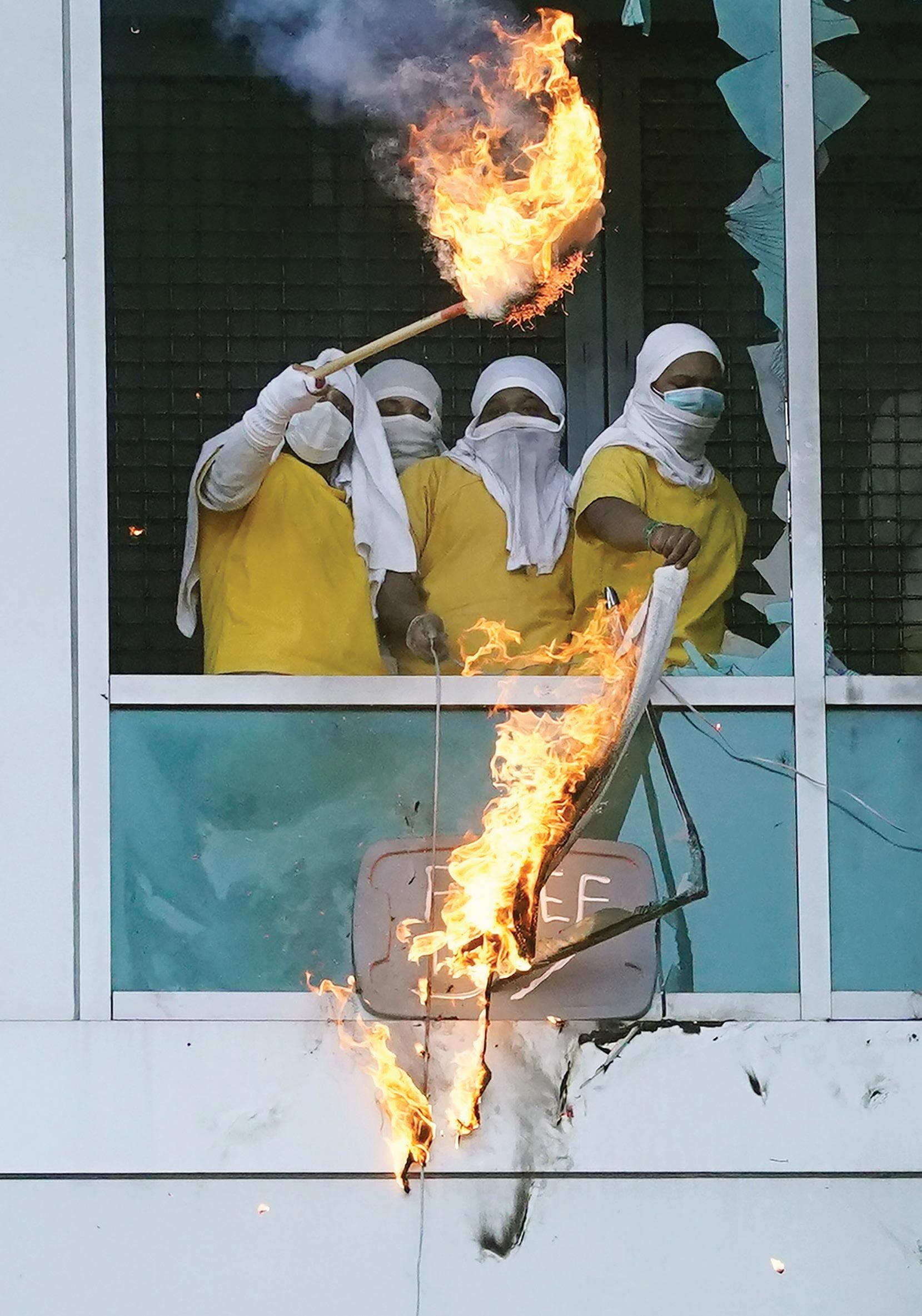
2021 St. Louis mayoral candidates respond
What do you see as the biggest challenges to public transit needs and what would you do to address them?
Ahead of the St. Louis Primary Election on March 2, The St. Louis American is asking a series of questions of the candidates for mayor of the city of St. Louis. Following are their responses.
Cara Spencer
Our biggest challenge to public transit was really underscored by the recent tragic killing of security guard James Cook at the Delmar MetroLink station. We need a safer transit system with coordinated, collaborative security. The recent WPS study commissioned by East West Gateway outlined 99 recommendations, most of them related to safety and security. As mayor, I will be committed to putting these recommendations into place. That includes consistent
and
By Sophie Hurwitz Of The St. Louis American
Last month, the St. Louis Public Schools Board of Education voted to close six schools due to declining enrollment numbers.
When Superintendent of Schools Kelvin Adams called for the schools to be closed, he asserted that this plan should come with establishing a city-wide plan for what the education system will look like going forward. No such plan exists, meaning that according to SLPS Board Chair Dorothy Rohde-Collins, “a lot of services … are duplicated.”
“All the decisions about school openings are being made in isolation, and that’s coming at a detriment to kids, because there isn’t a cohesive plan for where those schools are going to be located, or how to make sure that children in every neighborhood have access to schools,” Rohde-Collins said.
The St. Louis metropolitan area’s system of dozens of municipalities, each with their own municipal services, leads to certain services being replicated. This dynamic of redundant services is replicated in SLPS, where the 103 district schools and charter schools in St. Louis are not working under any unified plan means that, according to
By Sophie Hurwitz Of The
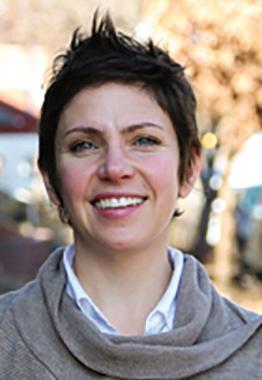
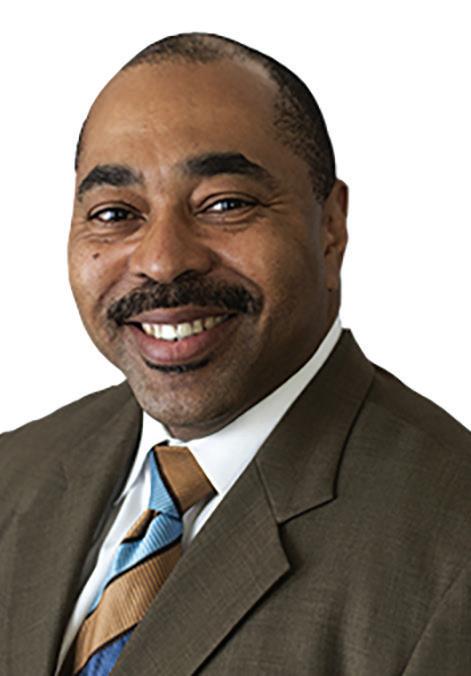

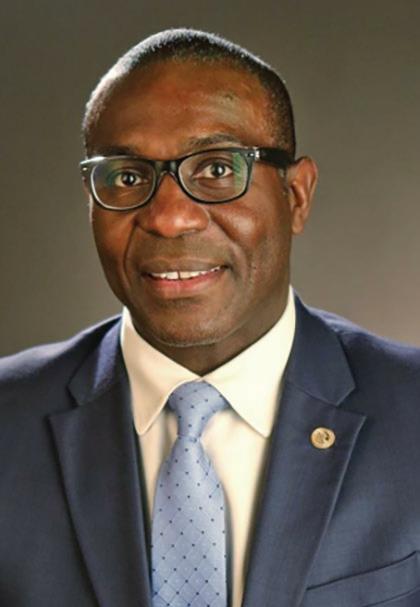
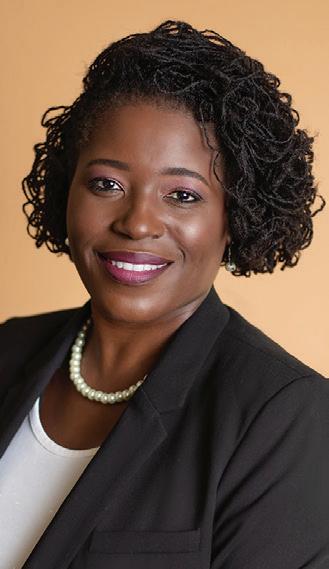

Pilot disorientation cited in deadly helicopter crash that killed Kobe Bryant
On Tuesday, Feb. 9, the NTSB said an episode of spatial disorientation by the pilot in heavy fog caused the helicopter crash that killed retired Los Angeles Lakers star Kobe Bryant, his daughter Gianna Bryant, the pilot and six others on January 26, 2020.
NTSB Chairman Robert Sumwalt said, “the probable cause of this accident was the pilot’s decision to continue flight under visual flight rules into instrument meteorological conditions which resulted in the pilot spatial disorientation and loss of control.”
The NTSB also determined Island Express Helicopters Inc.’s inadequate review and oversight of its safety management process contributed to the crash.
“Unfortunately, we continue to see these same issues influence poor decision making among otherwise experienced pilots in aviation crashes,” Sumwalt stated. “Had this pilot not succumbed to the pressures he placed on himself to continue the flight into adverse
weather, it is likely this accident would not have happened.”
‘Gorilla Glue Girl’ goes to LA to unglue her hair
Tessica Brown is flying from Louisiana to La La Land on Wednesday, Feb. 10 to try and unseal the deal she made on her head by using Gorilla Glue adhesive spray to hold down her tresses.

Her nightmarish saga blew up on Tik Tok last week when Brown reached out for help, saying her hair had been glued down for a month and would not move.
Multiple washings, home remedies and even a trip to the ER did not fix the sticky situation, although a friend was able to cut off her ponytail.
Los Angeles Magazine reports that Beverly Hills plastic surgeon Dr. Michael Obeng believes he can remove the Gorilla Glue. TMZ reports Obeng is doing the procedure for free, using medical-grade glue remover, and the process could take two or three days.
Ali
A simmering beef with Nelly and Ali of the St. Lunatics over who actually started the
group, along with other issues bubbled and spilled over into the national spotlight. The public feud was triggered by IG post from Ali accusing Nelly of hustling the group and abandoning the St. Lunatics to advance his solo career.
“1993 I started the Group, taught them how to Rhyme, from writing to teaching them what 16 bars was & how to count bars…” Ali posted on Instagram.
Nelly responded on during an interview with local WatUpDoeRadio, saying Ali signed on as a manager, not a performer. Nelly said that himself, City Spud and Kyjuan are the group’s only original members.
Nelly claimed Ali became a member following a showcase presented by Jive Records in the mid to late 1990s.
“When they said the Lunatics was doing all the legwork and talent shows and all of that, that was us. He didn’t do that,” Nelly said. “When we was (sic) going around town making a name for
ourselves, doing the car wash, performing at the talent shows at [colleges]—that was us, that wasn’t Ali. Ali did not perform with us. Either he thought he was too good, or he didn’t perform with us. … Just factuals. Actual factuals. (sic)” Ali took to Instagram to respond to the allegations.
“Nelly Would Create the Lie … then 20yrs later blame us and try and embarrass us like it was our idea,” Ali said, teasing an Instagram Live where he promised to respond to the interview. “I ’m going clear my name and show you EVERY LIE that he put on us !!!”*

During the Instagram Live, Ali said, “90 percent of what he [Nelly] is saying is true, but it’s that 10 percent…” The Live went on for more than an hour and included a back and forth with Nelly’s nephew Lil Shawn, a member of the rap group JGE. Shawn told Ali that the dispute should be handled privately. *Spelling and grammar is as it appeared in the original post.
Sources: HotNewHipHop, Instagram, Los Angeles Magazine, NTSB, Smart News, TMZ






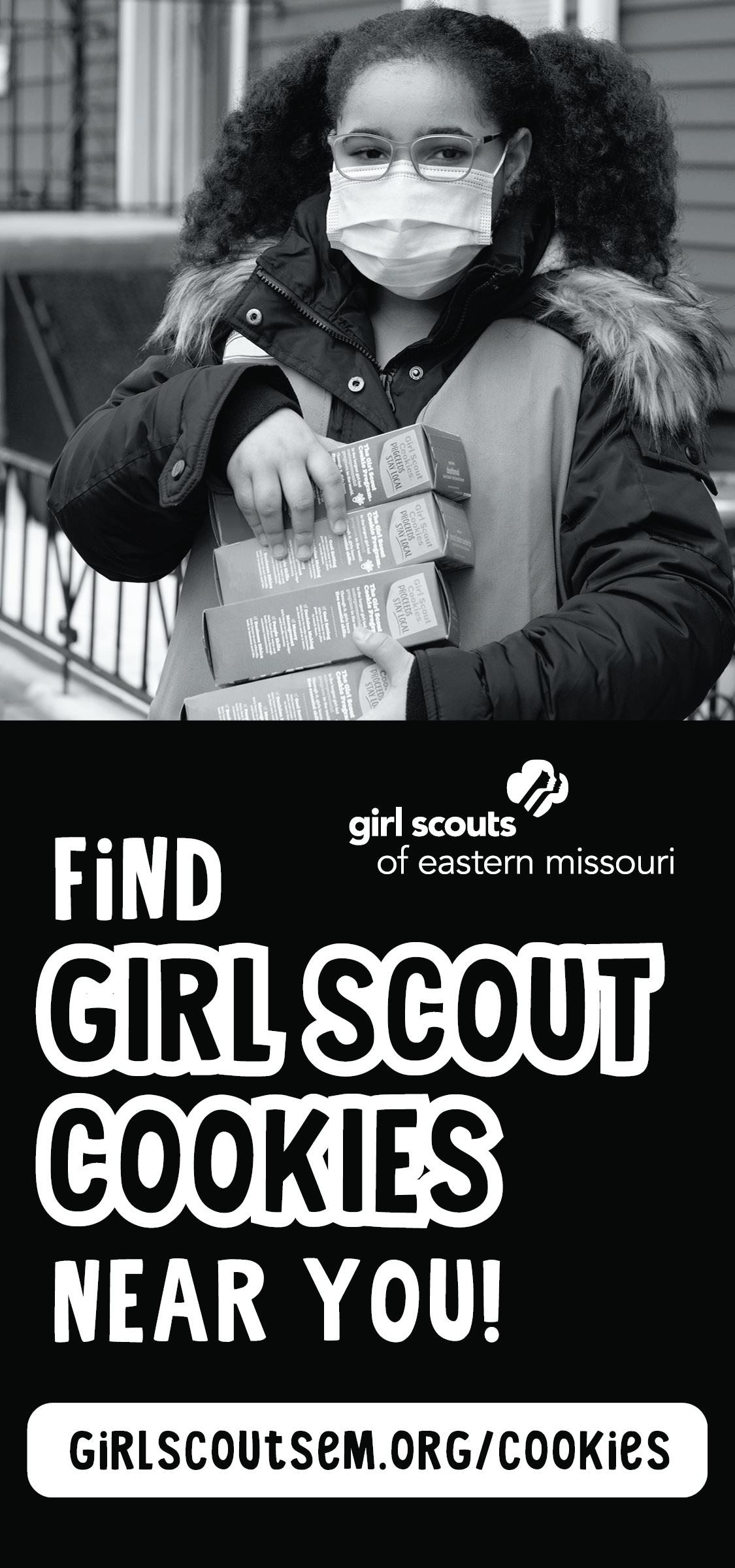

By Dana Rieck Of The St. Louis American
A Black St. Louis County police lieutenant colonel on Wednesday sued the county for discrimination after he said he was passed over for a promotion to chief of police, a position instead given to a white woman.
Lt. Col. Troy Doyle has been with the department since April 1992. In that time, he has received promotions to the ranks of sergeant, lieutenant and captain. He has been a lieutenant colonel since 2014.
He filed a complaint of discrimination against St. Louis County with the Missouri Commission on Human Rights on July 24. On Jan. 22, the commission issued a notice of his right to sue in the matter. Following is Doyle’s account of what happened, according to his lawsuit, filed in St. Louis County Court on Wednesday:
In 2019, St. Louis County Executive Sam Page invited Doyle to his house, where Page told Doyle that he wanted him to be the next chief of police for the St. Louis County Police Department. Page also told Doyle that he was “the right person for the job,” that “it was the right thing to do,” and that it would be “historic.”
The St. Louis County Police Department has never had a Black chief.
Page assured Doyle he would appoint members to the Board of Police Commissioners who would support this.
Page then instructed him to meet with several people, including The St. Louis American’s publisher, Donald Suggs, for an endorsement for the position, as well as Page’s campaign manager Richard Callow.
By late November 2019, Page had successfully appointed four people to the Board of Police Commissioners: William Ray Price, former chief jus-

ate professor at Harris-Stowe State University and a scholar in residence at the University of Missouri-St. Louis; and Dr. Laurie Punch, an associate director of surgery at Washington University School of Medicine.
What followed those appointments were several instances in which Jon Belmar, then-chief of police, transferred Doyle and other Black police officers to lower ranking leadership positions within the department and replaced them with white officers.
Meanwhile, Page told Doyle in late January 2020 that he was getting “push back” regarding the appointment of a Black police chief and that he was now having difficulty “pushing this across the finish line.”
In particular, Page told Doyle he was “shocked” at what a few members of the St. Louis Police Foundation said to him, indicating they made racist comments in regards to appointing a Black police chief. Page also noted he was struggling to raise funds for his campaign.
The foundation is an organization that provides significant financial support to political candidates.
On Feb. 10, 2020, Belmar announced that he was retiring, effective April 30. Around that time, the Board of Police Commissioners changed the qualifications to allow candidates with the rank of captain or above to apply for the chief of police position; before then, only those with the rank of lieutenant colonel were qualified to become chief.
Doyle applied for the chief of police position March 10 and was given one 20-minute interview with the police board for the position.
A little over two weeks later, on March 29th, Captain Mary Barton, a white woman, was selected as the next chief of police.
reached for comment.
By Dana Rieck Of The St. Louis American
The St. Louis County government congratulated the dispatcher who used a racial slur over the radio on his recent retirement in their February newsletter.
Mark Peeler, who is St. Louis County Police Police Chief Mary Barton’s brother-in-law, was listed along with 17 other retiring county employees under the message, “We honor your passion and dedication to St. Louis County government.”
While the newsletter was dedicated to Black History Month, Peeler left the department after he was overheard using the n-word on the police radio. He is believed to have used it in reference to another employee.
Peeler’s last day was Jan. 19 — 10 days after he was heard using the slur on the radio, but it was never publicly clear whether he resigned or was fired.
The police department did not release Peeler’s name, however the St. Louis Post-Dispatch identified him in a story when the incident was initially reported on.
n The Ethical Society of Police called out Barton and the department for not taking quicker action and firing Peeler after he used the racial slur.
The Ethical Society of Police called out Barton and the department for not

taking quicker action and firing Peeler after he used the racial slur.
On Tuesday, ESOP released another statement regarding the newsletter.
“Peeler’s actions should have resulted in a swift termination, strong and public reprimanding, and meaningful action to prevent similar racists acts in the future,” ESOP wrote. “SLCPD failed on all three of these counts and the St Louis County government office now is irresponsibly following suit.”
The county’s HR director, Susan Daniels, sends out the monthly newsletter. She could not immediately be
Three days after Peeler was heard using a racial slur on the police radio Jan. 9, Millicent Williams sued St. Louis County for refusing to produce the police dispatch recording of the employee using the racial slur.
The 30-minute recording can be heard online at https://bit.ly/39TtiKE Approximately 19 minutes and 18 seconds into the recording a man can be heard whispering the f-word followed by the plural form of the n-word.
Over the weekend, there was an inmate uprising at the dystopically named City Justice Center in downtown St. Louis. Detainees threw chairs out the window, set fires and held signs with slogans such as “what about Anthony Smith” and “free 57” up to the broken windows. This was the third such protest by people held in the Justice Center in the past month, though the first in which any major jail property was damaged.
Public safety director Jimmie Edwards took this as an opportunity to instill fear. In his statement Feb. 6th, he said not once, not twice, but three times that, these are “very violent” men.
Rather than investigating what the conditions were that prompted this protest, he dehumanized those in the jail in his language. “These were just very angry, defiant, very violent people,” he said, saying nothing about the spread of the coronavirus in the jail, which prompted the uprising in the first place.
guilty’ out the window and serve every single person inside with a potential death sentence.
We know from city officials that there was a December surge in COVID-19 cases in St. Louis correctional facilities, and that at least 85 people in St. Louis’ two jails have tested positive since the beginning of the pandemic.
The City of St. Louis, in its failure to cultivate bare-minimum health and safety conditions in the jails, is in effect sentencing every single individual inside to the punishment of potential infection.
n The City of St. Louis, in its failure to cultivate bare-minimum health and safety conditions in the jails, is in effect sentencing every single individual inside to the punishment of potential infection.
If we look at this in context, though, we are forced to reckon with the fact that the real villain here isn’t the prisoner who broke some glass or threw some chairs out the window. It’s the criminal justice system that is still holding not one but two jails open unnecessarily — each with deeply inhumane conditions inside. This was the third uprising at the Justice Center this month, the first two less visible to those of us on the outside.
But as those clearly didn’t work to improve conditions, inmates chose a tactic they knew we’d be forced to listen to.
When the City of St. Louis chooses to maintain a jail environment in which people are not being kept safe from a deadly pandemic, they throw any pretense of ‘innocent until proven
Mayor Lyda Krewson’s announcement this week that the city would be establishing a task force to examine jail conditions was long overdue, though certainly a step in the right direction. It did not, however, go far enough. The task force will only examine the City Justice Center and not the Medium Security Institution, known more commonly as the Workhouse.
After this protest, as with the two that preceded it, dozens of people were moved from the Justice Center to the Workhouse. If the two jails are, as it seems, being used to house people more or less interchangeably, it is a useless gesture to investigate conditions inside one without even taking a peek inside the other.
In striving toward an ethical future for the St. Louis criminal justice system, listening to Edwards’ scare tactics about the supposed innately violent nature of the men inside won’t take us far.
Far better to listen to those who have been speaking up for the rights of incarcerated people all along, who have been warning us for months that conditions in the jails were unsustainable.
I See It - A Forum for Community
By Ben Jealous
Nobody needs to tell Black Americans that progress toward an inclusive democracy is often met with brutal resistance. We’ve learned the hard way that we can’t “let nobody turn us ‘round.” And right now, we need to send that message to the people we put in power in the White House and Congress.
Our democracy survived former President Donald Trump’s attempt to overturn the election. It survived the violent attack on Congress that Trump and his allies incited, which left five people dead and many more injured. We won great victories at the ballot box in Georgia, yet our progress –and our democracy – are still at risk.
We cannot let the forces of bigotry and backlash stop us from fixing the mess Trump left behind, giving people the help they need, and protecting our democracy itself.
Here’s what’s going on: After an election in which Black people’s votes made the difference in so many races, state legislators have already introduced more than 100 bills to interfere with voter registration, limit mail-in voting, and make it harder to vote. They want to turn us around and shut us out.
That’s why we need Congress to pass the For the People Act. It would strengthen and protect voting rights. It would limit big money’s ability to corrupt our politics. And it would stop state legislators from drawing lines on the map that give unfair power to the right wing and leave Black people and progressive voters underrepresented.
The biggest barrier to passing protections for voting and democracy is the same barrier
to getting relief money to hurting people, families, and small businesses: Senate Republicans and their intention to stop progress dead in its tracks.
And that’s why we need Congress to pass the John Lewis Voting Rights Advancement Act. It would put some teeth back into the Voting Rights Act that conservatives on the Supreme Court knocked out just after former President Barack Obama’s reelection.
impeachment trial that would hold Trump accountable for the deadly insurrection he incited with his lies about Black voters. They don’t want us to learn more about what happened and who energized the anti-democratic forces that tried to overturn the election. So they tell us to forget about it and move on.

Guest Columnist Ben Jealous
One reason people were so motivated to elect Sens. Raphael Warnock and Jon Ossoff was to keep Sen. Mitch McConnell from having the power to stop President Joe Biden and Vice President Kamala Harris from doing what they were elected to do. When Georgia voters elected Warnock and Ossoff, it gave Democrats control of the Senate—50 votes with Vice President Harris as the tiebreaker. But McConnell refused for days to relinquish control, and it took weeks before he stopped holding up the vote to recognize the shift in power and put Democrats in charge of Senate committees.
McConnell operates in bad faith. Senate Democrats need to act quickly to do away with the filibuster rules that let him get away with it. Our country’s needs are too urgent to let McConnell and his unprincipled power plays stop us from taking action.
Don’t forget that McConnell and his Republican colleagues are also trying to sabotage the
By Benjamin F. Chavis Jr.
As we reflect on the 55th NFL Super Bowl in Tampa, Florida, amid the continued national spread of the coronavirus, I believe that the time has come for the close-knit group of team owners in the National Football League to take the necessary steps to open the door to African American business leaders who hope to join that exclusive club of owners.
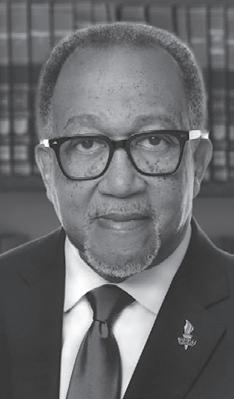
Given the large number of outstanding African American players today on NFL teams and the growing racial and ethnic diversity of NFL fans and supporters in all the cities where NFL teams are located, the ownership of NFL teams should begin to become as diverse as its fan and support base.
Today, nearly 70% of NFL players are African American but there are no African American NFL owners. I see this as an opportunity for the leadership and owners of the NFL.
I speak not only as a fan of professional football but also as someone who has a direct interest in helping the NFL fulfill its laudable and historic commitment to building a diverse and equitable league for players, coaches, owners and the thousands of others who make professional football one of the most popular sports in the world.
Indeed, the NFL recently became a trusted partner and sponsor of the National Newspaper Publishers
Association (NNPA), which represents 230 African American-owned newspapers that deliver news to our communities across various platforms, including print, digital and social media formats. Our member publications cover the news, sports, entertainment and culture pertaining to our excellence of performance in all aspects of human endeavor in the United States and throughout the world. And the NFL’s sponsorship will help enable our media properties to continue serving our communities at a tumultuous and confusing time when there is a great need for honest and accurate reporting.
For that support, we at NNPA are profoundly grateful.
But there is more that could be done to advance the
n Today, nearly 70% of NFL players are African American but there are no African American NFL owners.
cause of social justice, particularly on the question of opening the NFL’s Owners Club to African Americans. We have a unique opportunity to address this matter, given that America is focused on the inequalities in our culture — from economy to the delivery of health care — that the pandemic has laid bare for all Americans to see. In this context, the NFL, a sports business giant, should begin taking steps toward diversifying the ranks of NFL team owners. More than that, the league should leverage the current debate about social justice to ensure greater diversity
Celebrating Dr. Solomon Fuller, psychiatrist, researcher
“The Beloved Community” is a term that the Rev. Dr. Martin Luther King popularized to foster a deeper desire to spread goodwill to all people.
We know better. The history of lynching and other racial violence is clear. Active participation or complicity by law enforcement and politicians protected those who carried out the violence. And when no one was held accountable, the violence continued.
We know that the far-right forces energized by Trump’s lies about a stolen election are planning more violence. And we know that right-wing politicians are using those same lies to justify attacks on our voting rights.
Don’t believe people who say that holding Trump accountable will prevent us from focusing on the other work that needs to be done.
We can and must do both. We must hold Trump responsible for his attacks on democracy. And we must move forward with all the urgency our situation demands.
Ben Jealous serves as president of People For the American Way and People For the American Way Foundation. Jealous has decades of experience as a leader, coalition builder, campaigner for social justice and seasoned nonprofit executive. In 2008, he was chosen as the youngest-ever president and CEO of the NAACP. He is a graduate of Columbia University and Oxford, where he was a Rhodes Scholar, and he has taught at Princeton and the University of Pennsylvania.
The Alzheimer’s Association is committed to honoring and cherishing the relationships of all the communities we serve. This is a lofty goal, but yet one that speaks to our noble angels to serve. The Association leads strategic initiatives to support diversity and a culture of inclusivity to all, providing communities with resources and support to address the Alzheimer’s crisis.
In honor of Black History Month, I would like to hold up the name of Dr. Solomon
Carter Fuller, the first African American psychiatrist. A grandson of slaves, Dr. Fuller was a researcher of degenerative brain diseases and worked closely with Dr. Alois Alzheimer in Germany.
Let us celebrate Dr. Fuller and his role as a pioneer in Alzheimer’s research. To that end, it would be a great tribute to Dr. Fuller for us to continue our full involvement and support of Alzheimer’s support, education and programs.
You are welcomed and wanted to be a part of this Beloved Community.
Steve Wulff Richmond Heights
We’re all in this together
This is a response to a letter
and inclusion in all aspects of American corporate life.
It does appear that the NFL is slowly making some progress on the hiring of African Americans and other persons of color in the top executive positions of NFL general managers and head coaches.
I know, for example, that Rod Graves, former general manager of the Arizona Cardinals and current executive director of the Fritz Pollard Alliance, is working hard on this issue of inclusive executive hiring. Brother Graves is to be saluted for his consequential work.
I am also aware that overall, Troy Vincent, the NFL’s executive vice president, and NFL Commissioner Roger Goodell have stated their resolve and commitment to social and racial justice, and as well to leading the NFL forward on the issues of diversity and inclusion. We wish them well.
Yet, if I have learned anything during my long 60-year career in civil rights and in the freedom struggle in America, it is that the issue of equity requires ownership and investment in order to sustain social transformation.
But there are plenty of other capable African Americans whom the NFL can tap for those positions. The point is that if the league makes this a priority, the opportunity is here to open the doors of this elite club to people from historically underrepresented groups.
Benjamin F. Chavis, Jr. is president/CEO of the National Newspaper Publishers Association and executive producer & host of The Chavis Chronicles on national PBS TV network. He can be reached at dr.bchavis@nnpa.org
All letters are edited for length and style.
from Barbara Hill in the Feb. 4-10 paper. I would like to invite Barbara Hill, from West Plains, to visit St. Louis. We could stop at the city and county boards of elections to show all the precautions taken to ensure only legally registered electors are allowed to vote only once. And all the votes are counted. As a former poll worker, I can assure her that the system is very, very secure. We could also sit down with some good food and discuss how rural and urban lifestyles are different, but with common needs such as good education and social safety nets for those in need. We are, after all, together in this great American odyssey.
The Rev. Edmund Lowe Florissant





When the spring 2021 semester started in January, St. Louis Community College made the decision to transition some on-campus classes to live virtual lecture for at least four weeks. The adjustments were made to minimize health and safety risks for students, faculty and staff because of increased COVID-19 cases in the area.
After Presidents Day, between Feb. 16-19, the college will welcome students who chose to take face-to-face and hybrid classes back to campus. Safety protocols remain in place, such as requiring all students, faculty, staff, and visitors to wear a mask or face covering while on campus, maintaining social distance and completing a daily health screening.
The campuses will have fewer than 1,000 students per day; some campuses may have fewer students depending on the class schedules. The maximum number of students in a face-to-face or hybrid class depends on the size of the classroom to allow for 6-feet social distance. Classrooms are cleaned regularly based on guidance from the Centers for Disease Control and Prevention.
Students can expect a safe environment, the opportunity to interact with their peers and faculty, access to student services and more.
“Our students are the heart of our campuses, and things have not been the same without them. We are looking forward to the gradual return of some students and the life they bring to campuses,” said Christine Davis, Ed.D., vice chancellor for student affairs.
“We’re happy to get some students back on campus for face-to-face classes. We know students have reasons for desiring this format. We are working hard to safely meet their expectations,” said Andrew Langrehr, Ph.D., vice chancellor for academic affairs.
The College will continue to monitor the impact of the COVID-19 pandemic in the region and will make changes as necessary for the health and safety of students, faculty and staff.
• Key Points •
Face-to-Face and Hybrid Courses
STLCC students who are taking full-semester face-toface or hybrid classes that started in January should plan to return to campus for scheduled sessions after Presidents Day, the week of Feb. 16-19. Students are encouraged to check their course schedules to confirm classes and their location.
Online and Live Virtual Lecture Courses
Classes that are scheduled to meet fully online or as live virtual lecture will remain as scheduled.
Daily Self-Health Screenings are Required
STLCC requires daily self-health checks to help maintain safety. All students and visitors who need to be on campus must complete the health screening using an app by Healthfully. The screening must be completed before arriving at any STLCC location.
Students who have questions about spring 2021 classes are asked to contact an academic advisor









that’s how you are described,” Edwards said.
Saturday’s protest was the third — and most destructive — one at the jail in the last six weeks. The other two protests occurred just before and on New Year’s Day.
Each time, the inmates refused to return to their cells in protest of what they said was inadequate protections against COVID-19 for those being held.
The uprising this past weekend began in the early morning hours of Saturday when an inmate assaulted a correctional officer and was joined by several other inmates who were able to force open locks because they “don’t necessarily lock,” according to Edwards.
From there,117 inmates were freed from their cells and took control of two units on the floor for several hours. They were eventually taken out of the unit peacefully, one-by-one.
The correctional officer who was attacked was removed from the floor early on and taken to a hospital. He was treated and released the same day. No one else was injured during the uprising.
While Edwards said the inmates did not make demands during the protest, the men could be seen holding signs out of the window during the uprising with phrases such as “FREE 57” and “What about Anthony Smith?”
Kayla Reed and Blake Strode, executive director of ArchCity Defenders, said the former could be referring to the 57 inmates transferred to solitary confinement at the center on Dec. 29 after a similar protest.
The latter is believed to be a
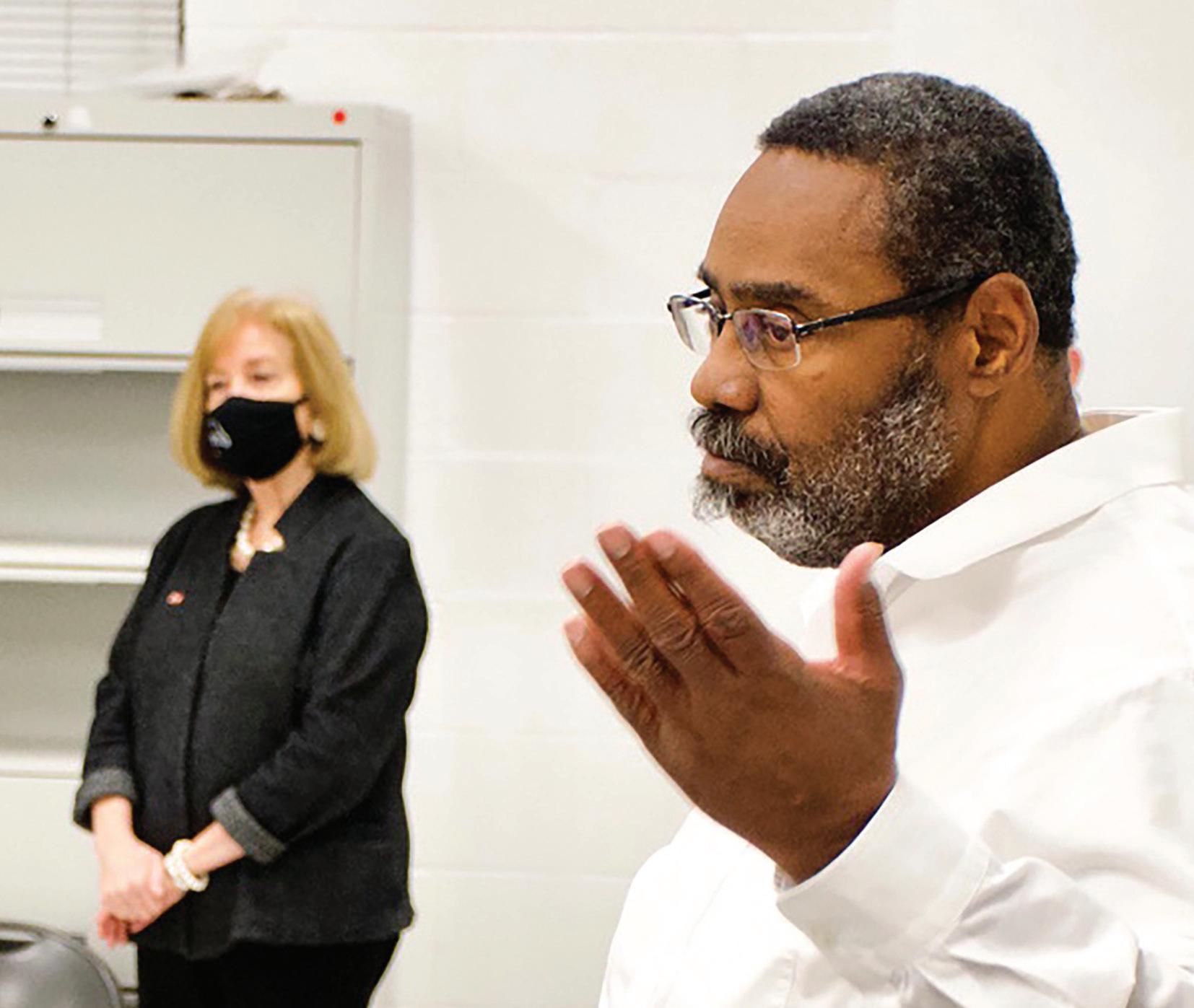
n “I think what we saw today was a buildup of deep frustration and process around the human rights of folks being detained in our local jails.”
— Kayla Reed, executive director, Action St. Louis
reference to the shooting death of Anthony Lamar Smith in 2011, in which former St. Louis police officer Jason Stockley was found not guilty of first-degree murder.
Both Reed and Strode assert they inmates were protesting the conditions inside the jail.
Many outside the jail echoed that sentiment, arguing the inmates were protesting a lack of COVID-19 precautions. That is something Edwards refuted, adding there were no cases of COVID-19 at the jail Saturday.
However, the Close the Workhouse campaign said it has received reports of more COVID-19 cases at the Justice Center and the Workhouse than authorities have reported. There is not yet any public, city-level data available regarding transmission of the virus in St. Louis’ jails.
Investigations
Several St. Louis officials held a media briefing Monday
afternoon regarding the uprising, in what seemed to be an attempt to place primary blame for the issues surrounding the jail on the courts.
St. Louis Mayor Lyda Krewson also announced that Michael Wolff, former Missouri Supreme Court judge and chief justice, will head a task force to investigate the claims made by the inmates.
“I understand that the public and maybe even some of the media might not believe what we tell you, so let’s have a very
well-respected, quick-moving task force to confirm that or not,” Krewson said. “I think that’s the reason we need to do this, otherwise detainees say one thing and the jail and corrections say another thing.”
Krewson said she hopes to have the task force hold its first meeting within a week.
The other members of the task force include: Adolphus Pruitt, president of the City of St. Louis NAACP; Jamilah Nasheed, retired Missouri state senator, 5th District;
Alderman Joe Vaccaro, chair, Board of Aldermen Public Safety Committee; Alderman Jeffrey Boyd, vice chair, Board of Alderman Public Safety Committee; Dr. Pamela Walker, Public Health Executive; Rev. Charles Norris, pastor, St. James AME Church; Brad Hompe, MPA, Criminal Justice Systems and Jail Operations consultant.
A few hours after that announcement, St. Louis Circuit Attorney Kimberly Gardner announced that her office had opened an investigation into any public health or other human rights violations committed against detainees. It will also seek to determine how those may have contributed to the unrest.
“Violence of any kind, particularly against law enforcement officials, is unacceptable,” Gardner wrote. “We will ensure there is full accountability. But while some are calling for the immediate prosecution of the detainees involved, this situation demands further scrutiny.”
Protest support
Two days after inmates took over units on the fourth floor of the CJC, about 30 people gathered to protest the conditions at the jail.
Christopher Winston, an organizer with For The People — STL, said the group was out there showing solidarity with the inmates.
“We’re out here today saying this is unacceptable,” Winston said. “St. Louis taxpayers’ money should not be used to commit violations of the Geneva Convention and every other human rights law that has ever been passed, and we are not going to stand for it, and nobody else should.”
St. Louis
How we vote is changing and AARP is fighting to make sure that the voices of voters 50+ are heard.
In November, St. Louis City voters passed Proposition D, creating a two-part election system for this Spring’s elections for mayor, comptroller and 16 aldermanic seats.
• Under the new system, all candidates for the March 2nd election will appear on a single, nonpartisan ballot.
• You can vote for all of the candidates who you approve of for each office.
• After the March primary, the top two candidates for each office will compete in a general election run-off on April 6th.
For more information about this Spring’s elections, including how to request a ballot, register to vote, and locate your polling place, visit aarp.org/stlouisvotes. facebook.com/aarpmissouri @AARPMissouri | aarp.org/stlouis
psychology from Walden University and a master of business administration degree from Florida International University. Bolton comes to Washington University from Tulane, where she has served in her current role for the past year. Prior to that, she was Tulane’s first vice president for human resources and institutional equity.
While serving as such, she transitioned the university to a self-insured health plan which “positioned us to better leverage our clinical footprint, diversify and expand benefit offerings.” In her current role, she leads Tulane’s COVID-19 return-to-work plan, oversees daily university operations, and works to promote a culture of diversity and leadership development. In particular, she has focused on promoting equity in hiring, focusing on traditionally underrepresented groups. Outside of her work at Tulane, Bolton is still focused on equity. She serves as vice president for administration and membership for the American Association of Blacks in Higher Education; serves on the Society for Industrial and Organizational Psychologist Anti-Racism Grant Subcommittee; and was appointed by New Orleans Mayor Latoya Cantrell to the New Orleans Workforce Development Board.
“We are delighted to have recruited a talented leader like Shantay Bolton to this critical role at Washington University,” Martin said. “She brings to the position a wealth of experience in some of the most important aspects of university operations. In addition, she is a smart and talented leader who knows how to develop and motivate teams. We could not be more pleased to be welcoming her back to St. Louis.” Bolton called this a “oncein-a-lifetime opportunity to do the work I love in a place that means so much to me,” in a Washington University news release.
“This is a time of transformative change for Wash U and for the St. Louis region, and I cannot wait to embark upon the important journey that lies ahead.”
education system one of the most heavily charter-based in the country.
Rohde-Collins, special education, transit and food systems for different schools are working in a redundant capacity.
The district operates 110 schools, serving 49,939 children. In 2007 there were fewer schools — 103—serving a student population that was higher by over 10,000. At Tuesday night’s board of education meeting, a resolution calling for a moratorium on the construction of new schools passed unanimously, with a 7-0 vote. Some Charter school advocates in St. Louis, however, see this move as a strike against the development of the school-choice movement.
Charter schools in St. Louis have grown to encompass 40 percent of the student population of the St. Louis Public Schools, making the St. Louis
Continued from A1 Mayor
Continued from A1
the delivery of optimal service to residents. The three primary challenges involve safety, declining ridership and optimal routing. The general welfare of drivers and passengers is put in danger when riders either don’t pay or harass fellow passengers. In some instances, guns have been displayed. The ramifications are numerous and broad.
I will coordinate with Bi-State and the city’s Public Safety director to boost our security presence on vehicles. The concentration should be focused on routes with the highest frequency of problems. We will explore options with
Tuesday’s resolution declared that a moratorium on new school construction was necessary because “the local, state, and federal support for school choice programs continues to create a system of schools and programs that fight over a declining population of children.”
Board of Aldermen to consider
Next, the resolution will be delivered to the St. Louis Board of Aldermen.
Some charter school advocates have opposed the measure. A statement from the Missouri Charter Public School Association stated that the moratorium “isn’t the solution.”
Further, they suggested that, “When it comes to education, research shows that families don’t leave cities because there are too many options,
they leave because of a lack of quality options. If education improves, enrollments increase, benefiting families and the entire St. Louis community as a whole.”
While the moratorium passed in St. Louis, a bill that could have major implications for what education in St. Louis looks like in the coming years is in committee in the Missouri House and Senate.
The bill, HB 137 in its House iteration, and SB 218 in the Senate, was developed by the same charter school advocates who opposed the new-schools moratorium. This bill would change the way funding is assigned to charter schools, meaning that a greater percentage of the overall SLPS budget would go to these schools, compared to the district schools.
Charter schools are funded based on property values as they were in 2005, rather than based on current property values as district schools are.
This leads to charter schools being funded less per student than district schools, though that funding is supplemented to varying degrees by philanthropic money.
“As time has gone on, property values have increased, which is a good thing, but the portion of property tax dollars that the charter schools receive is locked in 2005,” Doug Thaman of the Missouri Charter Public School Association, said. “It has not held true as we have gotten more and more years away.”
Though this bill would mean less money goes to district schools, Thaman said, “public tax dollars are not the possession of an institution. They are tax dollars that belong to the taxpayer, to the family. And so, if the family is making a choice to place their child in a charter public school, then those tax dollars should go to that charter public school.
“If they’re making the choice to place their child in a St.
Louis Public School, a district school, then their tax dollars should go to the St. Louis Public School District.”
Angie Banks, budget director for SLPS, said at Tuesday’s board meeting that, if the proposed charter funding legislation is successful, it could have a “significant impact” on the district’s budget, which is currently in a relatively stable place due to the school consolidation measure passed last month.
A unified plan
Some signs of a unified plan between charter and district schools are present. As announced Feb. 8, SLPS has agreed with some charter leaders to form the “St. Louis Schools Collaborative.”
Candice Carter-Oliver, CEO of Confluence Academies and co-chair of the collaborative, said, “The best way to get ahead of these challenges is to work together, combine our
experience, our thinking and, where appropriate, our resources. This approach will better address the problems of today and plan for the future.”
The Collaborative said in a news release that they are beginning an 18-month process of developing a plan to address resource distribution in a school system that was designed to accommodate many thousands more students than it currently serves.
As Rohde-Collins put it, this all comes down to St. Louis not having a plan for what we want education to look like.
“Ultimately, St. Louis has to decide what we believe about education — what purpose we want it to serve in our city and in our community. Because the way that we’re going, without an overarching plan we all commit to, we run the risk of waking up in five years, in 10 years, with an education system we don’t recognize.”
Bi-State to best utilize funds made available through opportunities like the Economic Development Sales Tax authorized by voters in 2017.
Tishaura O. Jones
Currently, there are too many in our city who do not have access to the reliable public transportation that they need to get to work, the grocery store, or the doctor’s office. We must work with partners at the state and federal levels to bring back more funding for Metrolink expansion and the expansion of our bus routes.
I have tackled this issue headon as treasurer and worked to fund the North-South Metrolink study so that we can get back in the pipeline for federal funding. I have been in various fellowships with Transportation
Secretary Pete Buttigieg, and I look forward to working with him, and our partners in St. Louis County and other regional leaders, to improve transit. Reliable public transit is also strengthened by equitable development planning. We have to build grocery stores and other neighborhood necessities in places St. Louisians can easily access by public transit or walking. You should have access to quality public transit no matter the neighborhood you live in, and as mayor, this will be one of my top priorities.” ‘
Lewis Reed
One challenge is funding a quality service at an affordable price. Accumulating the funding necessary and the implementation time needed to build the mass transit infrastructure
sometimes takes so long that the design plan being funded becomes outdated.
For example, Metrolink expansion could be great for the city. Currently, there is no source pinpointed to pay for it in its entirety and it would take years to build. By the time it could be built, will this be the smartest option then? Or should we consider an option that may be implemented faster, like more and better bus routes?
In the end, we need fast, frequent, affordable service that ties into the bike lane system and allows people to get to work, access medical care, or shop for essential needs without owning a car. I will work with the community and our service providers to build that type of system.

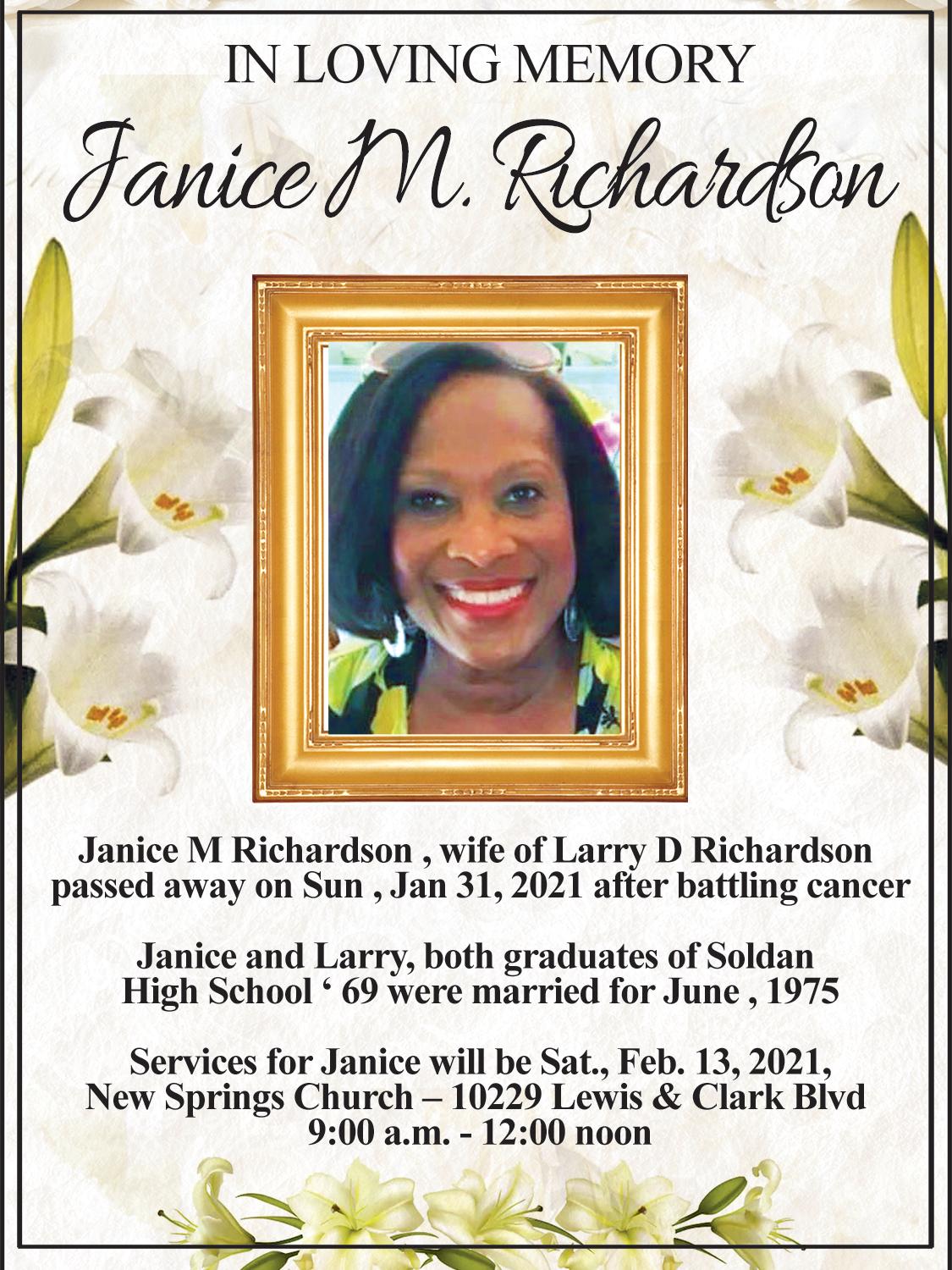
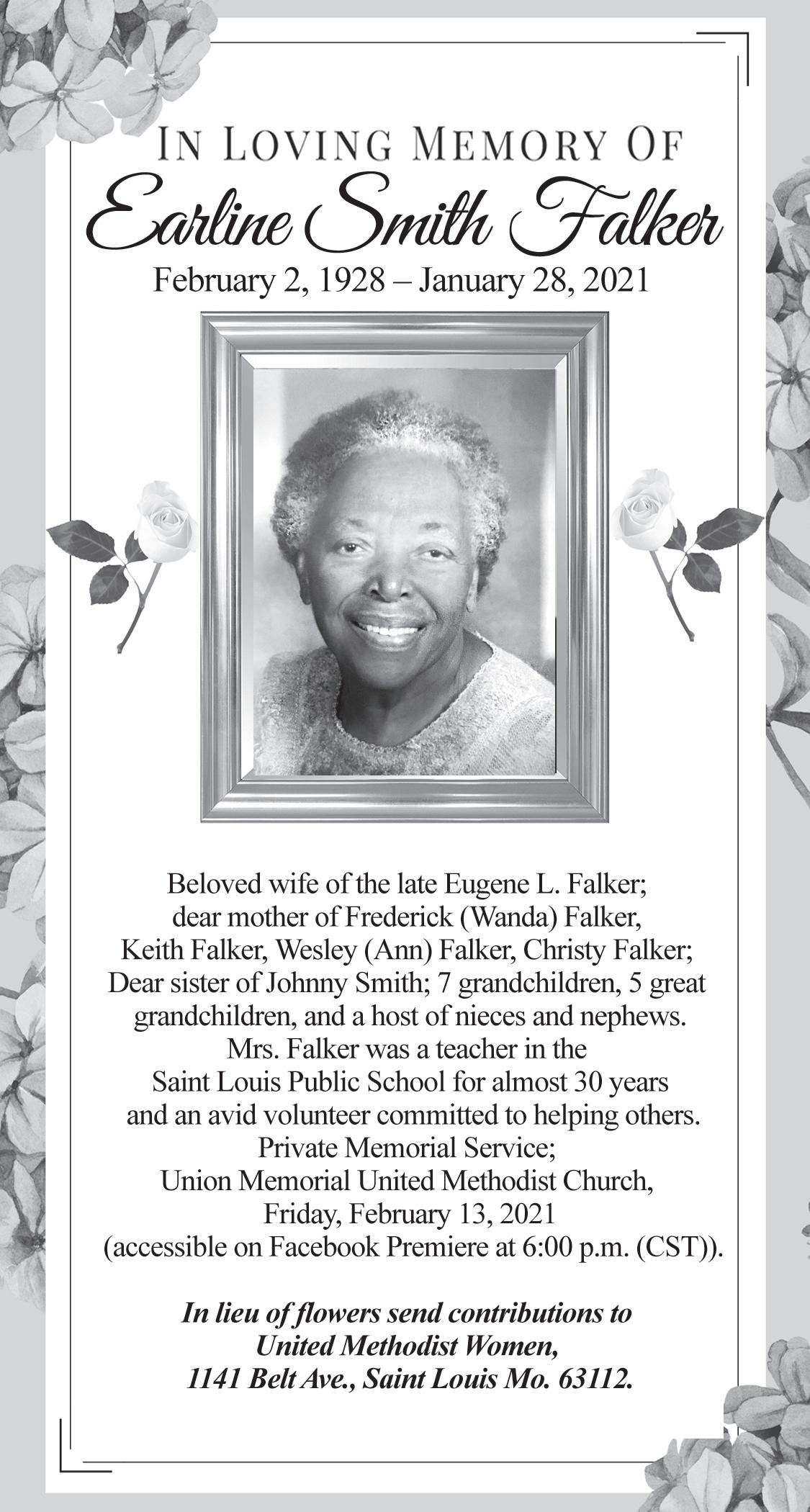

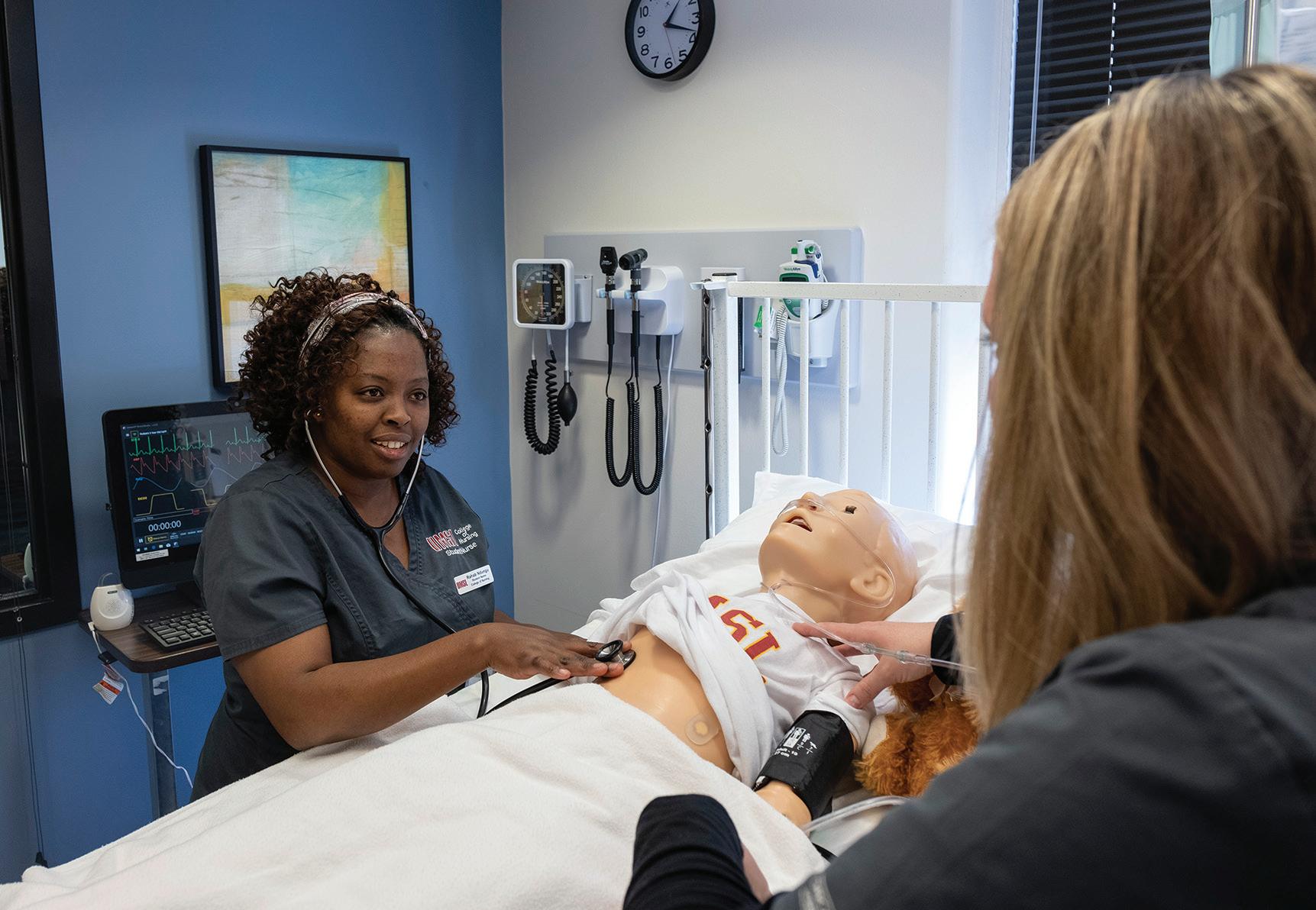
Above: This 2019 photo shows then-nursing student Rahab Ndungu, working in the Nursing Learning Resource and Simulation Center. Students in the newly established will be receiving similar training.
Right: LaVeasey Carter is assistant director of academic affairs at Lewis and Clark Community College’s East St. Louis Higher Education Center and Justine Patterson is an academic advisor in the University of Missouri–St. Louis College of Nursing. They are working together to help minority students pursuing Bachelor of Science in Nursing degrees.
For The St. Louis American
The University of Missouri–St. Louis College of Nursing has an important role to play in helping alleviate the nursing shortage in St. Louis by equipping students with the skills they need to serve patients in hospitals, clinics and physician’s offices. It also shares a commitment with the wider university to develop a diverse workforce across the region.
An agreement between UMSL and Lewis and Clark Community College’s East St. Louis Higher Education Center in Illinois serves both goals by providing support for 15-20 minority students each year as they begin pursuing their Bachelor of Science in Nursing degrees through the new Bridge to BSN program.
“The field of nursing lacks representation in some areas,” said Justine Patterson, an academ-
See Nursing, A10

For The St. Louis American
The COVID-19 pandemic has exacerbated the uncertainty and worry college students annually feel about focusing on the right career and finding their dream job. The job market for young people is down, many schools have switched to remote learning, and many school resources aren’t available.
As a result, some students are concerned that their majors won’t lead to a job in their field, and they’re wondering whether they should change majors or their definition of a dream job. But on the bright side, a changing world gives college students the opportunity to fully explore exciting new options, their potential, and end up on a path better than they previously planned, says Vince Thompson (www.meltatl.com), founder and CEO of the marketing agency MELT and author of Building Brand You: How To Use Your College Experience To Find And Win Your First Job. “Sometimes the path we planned takes a turn,

but rather than leading to a dead end, it opens a whole new world to us,” Thompson says. “While this is a challenging time, it is also an exciting time if young people approach it the right way.
“The best opportunities can come out of times rife with great change, disruption, and uncertainty. Take the time to consider all options that interest you. With a will, there’s always a way to
get there.” Thompson offers college students these steps to take when rethinking their dream job:
• Switch your major. “Students who want to change their career path should look at the curriculum of those majors they have interest in and decide whether it has what they’re looking for,” Thompson says. “Meet with an academic advisor before making any changes, and if necessary, reach out to the financial aid office to see how a change in major could affect your aid.”
• Launch a startup – while in college. A global crisis has made some college students and recent grads realize that perhaps the best path to job stability and career fulfillment is starting their own business. “Sometimes the best fit with your passion is starting your own business, even if it’s on a shoestring and part-time,” Thompson says. “You could take entrepreneurship classes to augment your business, gaining classroom education and making connections at the same time.”
• Do your homework. “It may be one of the toughest job markets in decades, but you can find opportunities faster than ever before because of the internet,” Thompson says. “If you’re thinking of changing career paths, Google everything
See Jobs, A10
SLATE’s Hayes joins United Way board
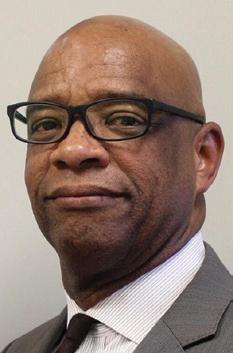
The St. Louis Agency on Training and Employment Missouri Job Center announces that Howard Hayes, SLATE executive director, was elected to serve on the United Way of Greater St. Louis’ 2021 Board of Directors. As a board member, Hayes will be part of the United Way’s efforts to unite people and organizations that want to help others, raise funding through donations and grants, and help as many people as possible to satisfy their various needs. In his role, Hayes plans to assert his expertise in business administration, talent diversity and inclusion in the workplace, and corporate partnerships that will help minority and disadvantaged people eliminate barriers to employment, successfully transition to self-sufficiency, and move toward overall life success.
Mason is branch manager for Central Bank of St. Louis
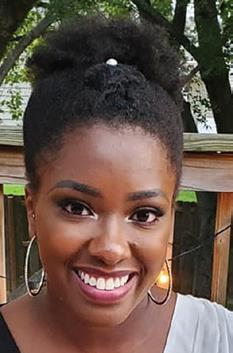
Central Bank has named Alexis Mason as branch manager at one of its 140 locations rooted in communities across the Midwest. Through mentorship, Mason said she plans to inspire young professionals to excel in the banking industry. She is an alumna of Hazelwood Central High School in Florissant. She holds a Bachelor of Arts degree in business with an emphasis in finance from the University of Missouri – Kansas City.
Historical Society hires Taylor to lead diversity
Dara Taylor joins the Missouri Historical Society team in a newly created senior leadership position, managing director of diversity, equity, inclusion and accessibility. In this role, Taylor will work with Frances Levine, president, and the executive leadership team to build on the Historical Society’s diversity efforts.

Taylor will work with staff to design and implement actionable, and measurable initiatives that bring meaningful change through a culture of diversity, inclusion and accessibility.
She received a Bachelor of Arts in Psychology and Africana Studies from Wellesley College, and a Master of Health Science in Policy and Management from The Johns Hopkins Bloomberg School of Public Health. She serves as the chair of the Governance Committee for the Board of Forward through Ferguson
Continued from C1
ic advisor in the College of Nursing, who has been involved in establishing the partnership.
“This is a great opportunity to help change that by expanding our network and allowing these students a smoother path to a career in the field. I think it’s going to be great for the field of nursing and the overall St. Louis community.”
LaVeasey Carter, Lewis and Clark’s assistant director of academic affairs at the Higher Education Center, was the first to recognize the need for this type of agreement and act on it. He noticed there were already pathways for students to become certified nursing assistants or licensed practical nurses through Southwestern Illinois College, which also operates a satellite office at the center. But nothing existed to help students who wanted to pursue a BSN.
“That piece seemed to be missing, so I was thinking of ways in which we could really be intentional and provide that opportunity to students in the area,” Carter said.
He knew Patterson from their time together at another
Jobs
Continued from C1
you can on that career. Then go after it like someone has assigned you to write a thesis on this new career. And it’s also a big help to look up people in that field on LinkedIn.
• Stay motivated, show flexibility. Your dream job might be out of reach right now, but Thompson says it’s vital to shift from the disappointment
institution, and the two of them began the dialogue that led to the eventual agreement between UMSL and Lewis and Clark. Carter said UMSL has proved to be an ideal partner because of the cooperation and flexibility the College of Nursing provided in mapping out an academic plan for students preparing to transfer to the university. UMSL also offers in-state tuition, had support systems in place to help ensure student success and had a location along MetroLink’s red line that made it accessible to students needing transportation from the other side of the Mississippi River.
Under the terms of the agreement, Lewis and Clark is creating the Bridge to BSN program and will ensure that students successfully complete early math and English classes, so they have a stronger foundation when they begin work at UMSL.
The university will assist the Bridge to BSN students with the application process to UMSL and, upon their admission, will give them each a renewable $1,000 Community Partnership Scholarship, provided they maintain at least a 2.5 GPA.
UMSL will also provide each student a coach in the Office of Multicultural Student Services,
and discouragement you feel to focus on the opportunities available for working – especially remote working.
“Building a new narrative,” Thompson says, “and producing a brand story about how you turned this time of great challenge into a great opportunity will speak volumes to future employers.”
• Develop new skills.
“Developing a diverse skill set can expand your appeal to a larger number of employers,” Thompson says. “Nowadays, you’ve got lots of opportunities
and the students will also have access to tutoring, professional development workshops and other academic support through Student Academic Support Services.
“We’re going to do our best to make sure that they have everything they need to be successful, particularly in their science and math courses, once they come to UMSL,” Patterson said.
Stephanie Tate-Patterson, a nurse practitioner and the CNA program coordinator for East St. Louis School District 189, is excited about the agreement and the opportunities it will provide to students she works with.
“It levels the playing field for minorities who are underrepresented in professional health care fields such as nursing,” Tate-Patterson said.
“The coaching that is implemented in the curriculum is imperative for increasing the success of these students. Far too often students spend excessive years trying to complete prerequisite classes necessary to apply for nursing programs and give up or change majors.
“Allowing the students to begin the program in their own community for the first year gives them a sense of belonging and security.
By Shula Neuman St. Louis Public Radio
To help explain how systemic racism seeps into people’s brains, I like to refer people to Isabel Wilkerson’s analogy.

“When people live in an old house, they come to adjust to the idiosyncrasies and outright dangers skulking in an old structure,” she writes in “Caste,” her recently published book. “The awkward becomes acceptable, and the unacceptable becomes merely inconvenient. Lie with it long enough, and the unthinkable becomes normal. Exposed over the generations, we learn to believe that the incomprehensible is the way that life is supposed to be.”
Let me explain how systemic racism and its partner, white supremacy, have shown up in St. Louis Public Radio:
• We’ve written articles that take anthropological approaches to reporting on communities of color. Our stories have sounded akin to David Attenborough observing the behavior of blue whales rather than actually allowing people from those communities to talk about their experiences from their perspectives.
• We’ve catered our coverage to our traditional audience of white, upper-middle-class, well-educated, middle-age people. We have done this by seeking out stories that won’t rattle their worldview or venture out of the “mainstream” culture, because we have feared those are stories that the audience won’t understand or appreciate.
• We’ve inadvertently forced the reporters of color on our staff to filter their story pitches and reporting through a white lens. In other words, we’ve put the burden on our Black, Latino and Asian journalists to only propose stories that will be palatable to the aforementioned white audience.
These are just a few ways in which we, as a journalism organization, have been complicit with the systemic racism that pervades our society. As a result, we’ve failed to live up to our aspirations as journalists: holding the powerful to account, illuminating complex issues and accurately reflecting the diversity of our community in our work.
to learn online at your own pace, either taking individual courses or enrolling in certificate programs for different trades.”
“The most important thing to remember is that your career is your own,” Thompson says. “It will be a big part of your life, and ideally, it will embody your passion, your best skills, and define your professional success. The path you take isn’t as important as it is to keep moving down the road toward your preferred destination.”
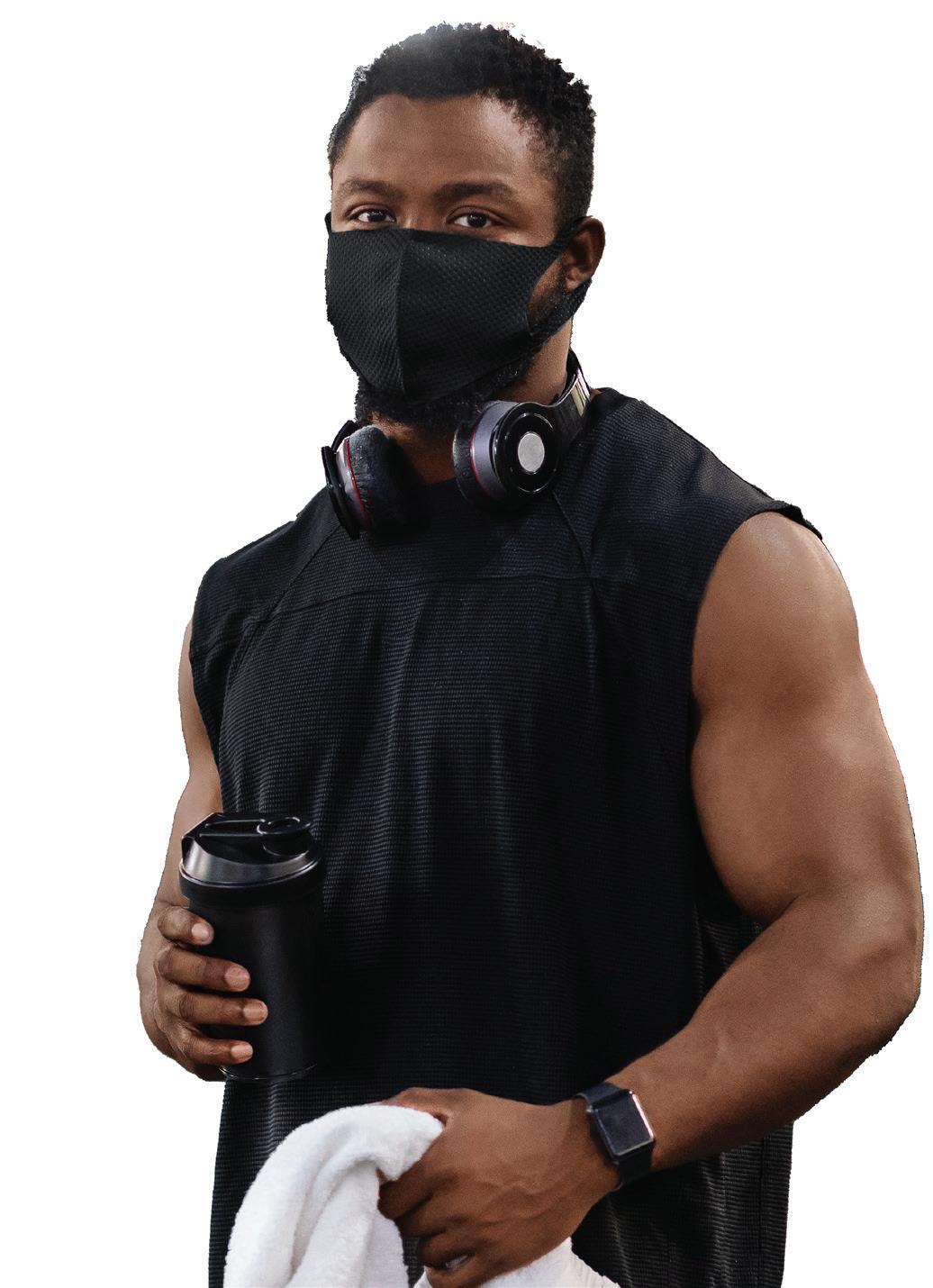
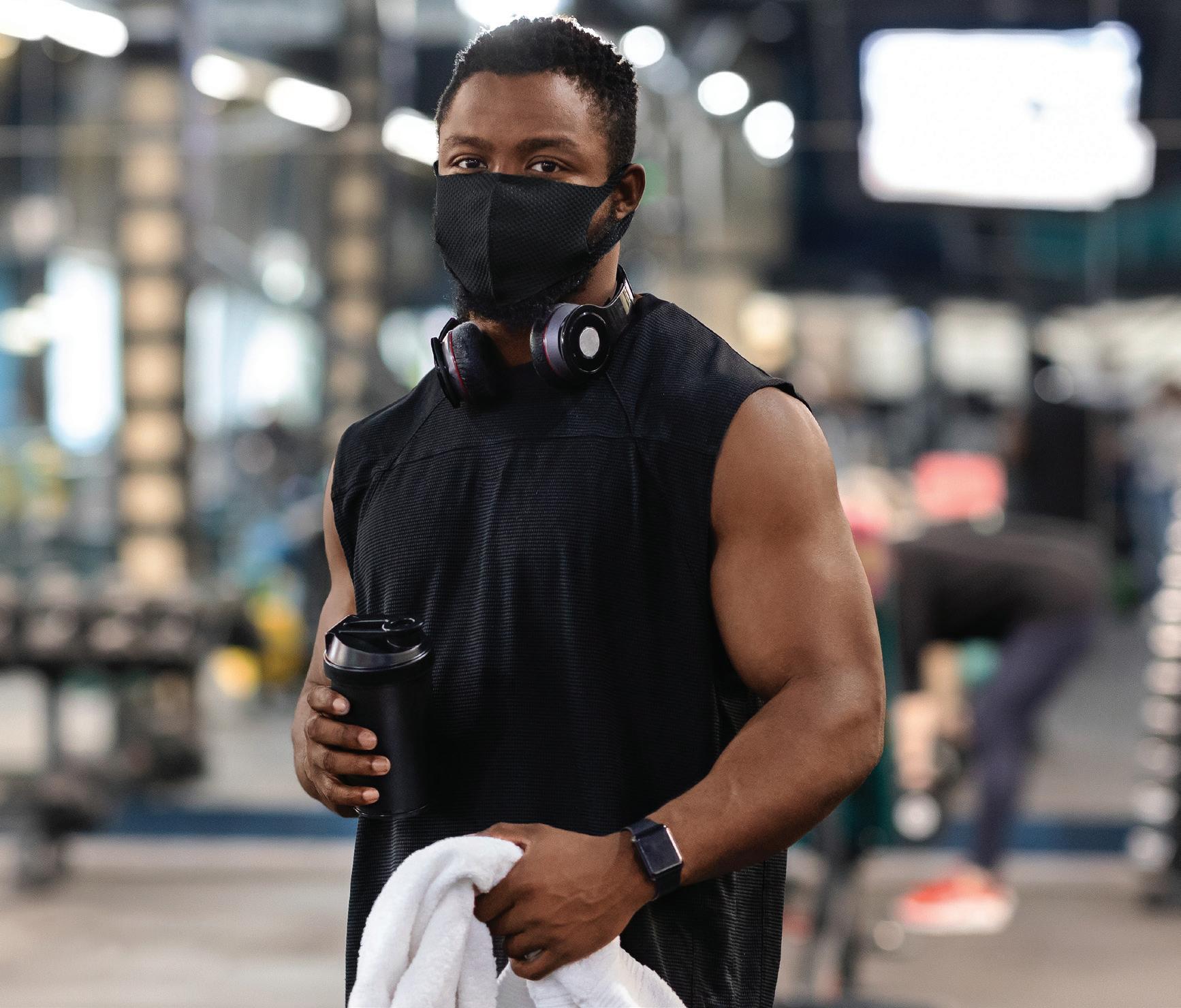








I love that analogy. It helps explain the deeply entrenched problem of systemic racism in our society. It explains how systemic racism has been part of the structure of our country for so long that white people don’t see the inherent disparities that exist around us. What’s more, many people don’t recognize the assumptions and systems that work to prevent Black people and people of color from being equal. Journalism and news organizations that have historically been run by white people aren’t immune.
For the past half-year or so, white-run news organizations around the country have come under fire. Some are calling it a “moment of reckoning” journalism is facing for its part in systemic racism. But to me, I don’t think reckoning is enough. White editors and newsroom leaders need to recognize the role that we’ve played in that systemic racism and actively work to dismantle it.
Though long overdue, it is now time for St. Louis Public Radio to recognize its racist history and talk about how we can begin to undo the system.
I know there are people who will decry the fact that I’m writing this. Some will call me a hypocrite and a fraud. They will point to errors I’ve made, things I’ve said, decisions I’ve come to as proof that I am not qualified to be talking about systemic racism.
Maybe. But I’m the person in charge of the St. Louis Public Radio newsroom and, because of that, I’m the one who has to take ownership for what has happened in the past and commit to changing how we do things in the future.
• We’ve neglected to include the perspective of people of color when reporting on issues that affect everyone in this St. Louis region, not just white people. Too often, when we have included the perspective of people of color, we’ve treated those individuals as if they represent the entirety of their community and ignored
n Though long overdue, it is now time for St. Louis Public Radio to recognize its racist history and talk about how we can begin to undo the system.
the subtleties of opinions that exist across any ethnic or racial group.
• We have overlooked journalists of color when hiring because they don’t “have the right sound.” We’ve made the excuse that those same reporters — especially Black reporters — don’t have enough experience, even though we’ve given white reporters with equivalent experience the benefit of the doubt.
• Over the past six years, we’ve made the push to hire journalists of color, but we haven’t made the organization uniformly welcoming. We said we wanted to hear what they think of how we are doing, but didn’t listen when they told us about the inhospitable conditions.

I will pause here to give St. Louis Public Radio a bit of credit. Since covering the killing of Michael Brown Jr. in 2014, and the Black Lives Matter protests that followed, we did get better at seeing race is part of the stories we cover. We’ve worked harder to make sure that our sources include people of color. We became more deliberate about how we represent various communities, which topics we cover and whom we hire. We started tracking our sources to make sure we were including voices of people who reflect the larger community.
But those are just the first steps.
Next steps
Moving forward, we are committing to practicing journalism that is anti-racism at its core. This means that we will tell stories about communities adversely affected by systemic racism from their perspectives. It means we will be more mindful of recognizing and calling out racism in ourselves and others. It means we won’t indulge in a misleading sense of balance by including perspectives that are patently disproven, false or biased. It also means that we will continue to expand whom we talk to for our stories and whom we consider our audience.
Within our newsroom, it means we are committed to hiring more journalists of color so that, at a minimum, our newsroom reflects the population of the St. Louis area.
It means that part of our onboarding and review process will include learning individual journalists’ goals and working with them so that we can support their career paths either within our station or in other organizations. It means we will provide training and opportunities to all of our reporters to help people develop the skills they need to achieve their professional aspirations.
As a station, we are already exploring how to hold ourselves accountable on our promise to become an anti-racism news organization. We’ve created a Diversity, Equity and Inclusion committee and are taking direction from its members to address station-wide policies. The Friends of St. Louis Public Radio board has created its own Diversity, Equity and Inclusion committee, and we are hoping to work with it. We will regularly publish the results of our diversity source surveys. The newsroom has just started to rewrite its social media ethics policy and will turn to an overall journalism ethics policy that uses the benchmarks laid out in An Anti-Racist Future: A Vision and Plan for the Transformation of Public Media. We are at the beginning of this journey. I wish I could promise a linear and swift progression to fulfilling our vision. But I recognize that change never comes that easily. My hope is that publishing this article, owning up to our mistakes and talking publicly about how we can do better as a newsroom will keep the station on track toward instituting systemic change.
Neuman is the executive editor at St. Louis Public Radio, a media partner of The St Louis American.
By Gloria S. Ross St. Louis Public Radio
Johnetta Randolph Haley, a music teacher who, over the vehement objections of white parents, helped integrate a Kirkwood middle school after the U.S. Supreme Court struck down school segregation in 1954, has died. She was 97.
“Fifteen hundred people signed a petition [saying] they didn’t want me or the other three (teachers) only because we were Black,” Haley said in a 2018 awards program video. “But after one year, they wanted their kids in my class.” In fact, she told the Webster-
in 1945, she began teaching in East St. Louis at Lincoln High School, from which she’d graduated four years earlier. Several years later, she married real estate broker David Haley, whom she later divorced, and began teaching at J. Milton Turner Junior High School in Meacham Park, the predominantly Black enclave that later merged with Kirkwood. When schools were desegregated in 1955 by federal decree, Haley was one of four African American teachers to be hired at Nipher Junior High, over the concerted objections of most of the white parents. In short order, she changed
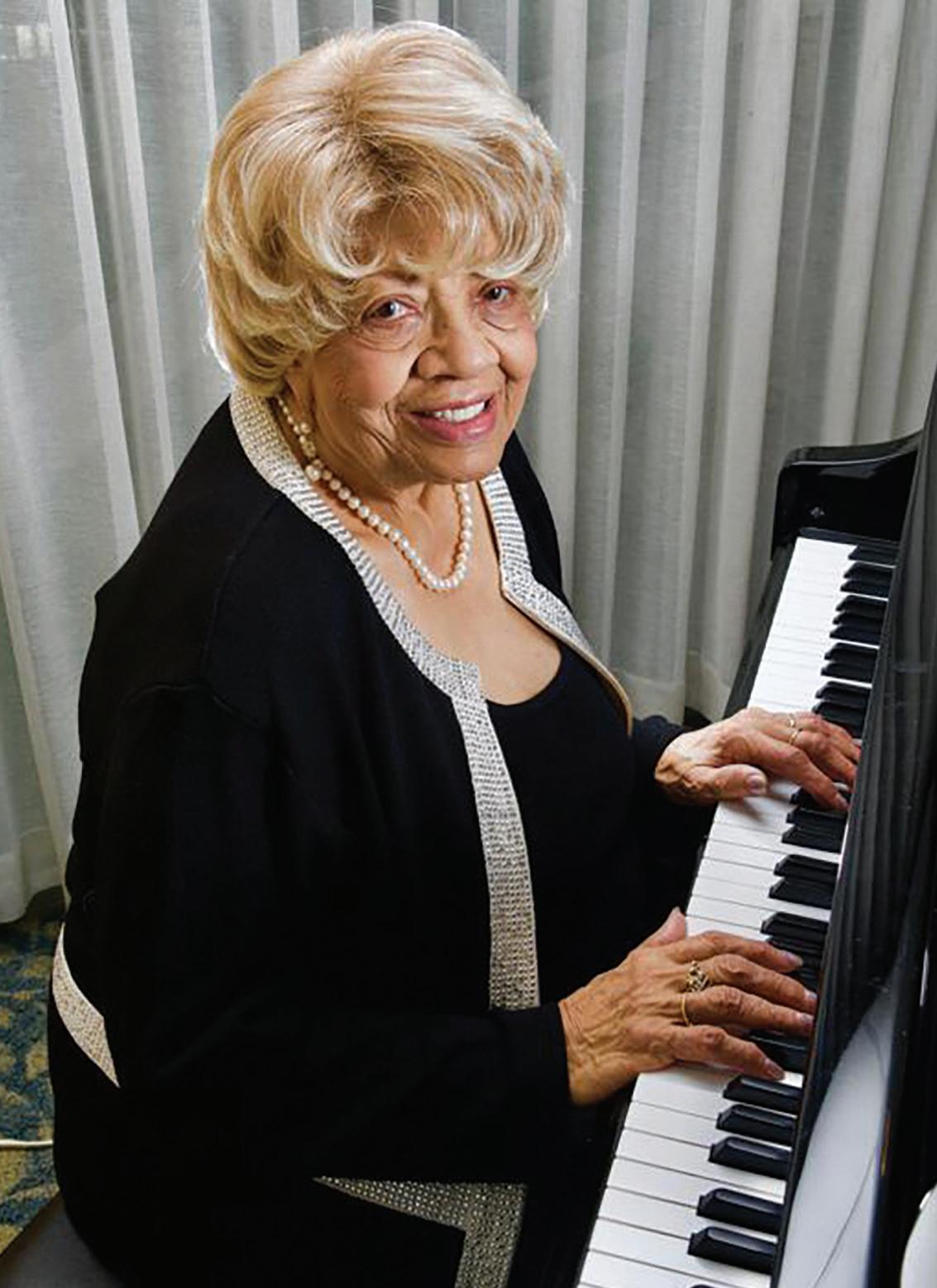
of a local Alpha Kappa Alpha Sorority chapter, delivered the full $11,000. Haley retired in 1994, but her community work continued. In addition to AKA, she served on numerous other local and national boards, including The Links Inc.; Lincoln University, where she served as the first female board president; Stillman College; the Association of Governing Boards of Universities and Colleges; the St. Louis Metropolitan YWCA; and the Artist Presentation Society. She served as chair of the Illinois Committee on Black Concerns in Higher Education. Numerous honors attested to
college graduates. Her father’s education came through a “privilege” of birth: He was the offspring of a black mother who worked on a Louisiana plantation and the white man who owned it. Her mother was a teacher before she got married, and her father was an itinerant minister with the African Methodist Episcopal Church. Even though the family moved frequently throughout Illinois, she told the NewsDemocrat they often took in black travelers who weren’t allowed to stay in local hotels. She never forgot the lessons of selflessness or the importance



By Sandra Jordan
Of The St. Louis American
Missouri’s troublingly slow COVID vaccine delivery to the state’s hardest affected areas coexists with COVID vaccine hesitancy among African Americans and other people of color. They are among the populations that have been hardest hit with illness and deaths from the SARS-CoV2 coronavirus during this pandemic.
“The state has the authority and is providing the guidance on us getting the vaccine, but it’s our plan and infrastructure we’ve built to be able to deliver the vaccine,” said Damon Broadus, director of Health Promotion and Public Health Researchm for the St. Louis County Department of Public Health.
“We can do 5,000 vaccines a week right now to be able to get to the penetration we need in St. Louis County.”
To increase COVID vaccine acceptance in north St. Louis County, the Health Department tapped Broadus, and Rochelle Walton Gray as the vaccine community outreach coordinator, to talk about the COVID vaccine rollout in the community. They are trying to encourage residents to at least pre-register to receive the vaccine when it becomes available.
“We want to make sure we tell everyone to please get registered,” Walton Gray said. “The registration, you’re not making an appointment, you’re just getting on the list, and then when your time comes, you can decide yes or no. We hope you decide ‘yes.’”
By Sylvester Brown Jr.

By Brittany Ferrell For The American
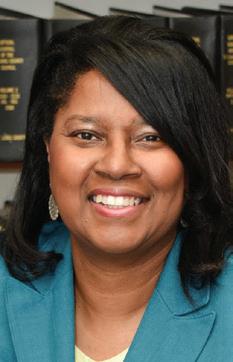
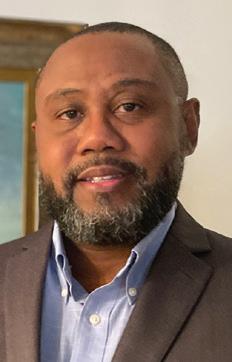
She said even if you don’t want to take the vaccine immediately, you should pre-register because, as the county receives more doses of vaccine from the state, some time will pass before the Health Departmet calls to make the vaccine appointment. Then, she added, you can declare your decision at that time.
“But you don’t want to not get on the list, and then it will take you even longer” to get the vaccine, Walton Gray said.
A graphic provided by the Health Department shows individuals pre-registered by ZIP code as of Feb. 1, revealing low participation in several areas of north St. Louis County. Preregistration is as low as 3% in some north county communities and as high as 39% in the central part of the county.
“The pre-registration trends are consistent with pre-existing racial and socio-economic disparities,” stated Dr. Sam Page, St. Louis County executive. “With our pandemic response, we are working aggressively to reverse these trends.”
For some people, hesitancy in taking the vaccine is a matter of historic mistrust of a health system that has not always been fair or equitable to Black people. Some people are leery because
they feel the vaccines were created too quickly.
Others are aware that the COVID vaccine is being made available, but they are waiting to see how others who look like them fare after taking the vaccine before they attempt to get it themselves.
“I know several people who did not want to take the vaccine just yet, but they went ahead, and they’ve done it, because they see people that they trust getting the injection,” Walton Gray said.
“If you have some misgivings about it, find someone you trust in the medical field and talk to them. Even if you want to wait a month or two, that’s fine, but don’t have those misconceptions about a ‘black dose’ vs. a ‘white dose’ or, ‘they are doing testing on us.’”
Broadus received his second dose of the vaccine last week. With both doses, he experienced some soreness where the vaccine was administered in arm. He also had a headache with the second dose.
“I’d rather take that pain and the shot, because of the risk,” Broadus said.
Walton Gray has not received her first COVID vaccine yet. “I’m at the bottom of the list of tiers,” she said.
Broadus and Gray are regularly meeting with a group of at least 20 community leaders to disseminate accurate messages about the vaccine and how it can be beneficial to individuals,

Over the last few years, Jamaa Birth Village has instilled new hope for pregnant Black women across the St. Louis region, where the county’s maternal death rate is 37% higher than the national average. Based in Ferguson, the epicenter of today’s civil right movement and the movement for Black Lives, Jamaa Birth Village does the sacred work of providing life-giving care to pregnant women who are often subjected to the compounding environmental stressors and health system bias that drives the St. Louis region’s maternal health disparities. The birthing village is a literal dream come true for Brittany “Tru” Kellman, certified professional midwife and the founding executive director of Jamaa Birth Village. After Tru endured two traumatic birthing experiences, during which she was dismissed and disregarded by her doctors, she was determined to build a safe space for Black women to receive respectful, compassionate, and culturally congruent care.
Established in 2015, in the living room of her Ferguson home, Tru provided birth education and doula training to women who were looking for tools to support and advocate for themselves and others when it came to receiving care for their preg-
“A little nudge or encouragement won’t hurt…”
local African Americans are publicly promoting COVID-19 vaccines
“Why Are 1/3 of Black Americans Suddenly Anti-Vaxxers?”
This was the question Amber Ruffin asked her audience on her self-titled talk show last month. Anti-Vaxxers are people who disagree with the use of vaccines for a variety of reasons. Although the term has been used lately in regard to the coronavirus vaccine, the anti-vaxxer movement dates back to the 18th century, when mostly religious leaders in the U.S. described vaccines as the “devil’s work.” The movement is so pervasive that the World Health Organization (WHO), in 2019, named the anti-vaccine movement as one of the top health threats globally. Ruffin’s question was prompted by a Kaiser Family Foundation (KFF) study in December that reported “35 percent of Black adults would probably or definitely not get vaccinated even if it was determined to be safe by scientists and available for free.” Before giving a brief but sordid history of
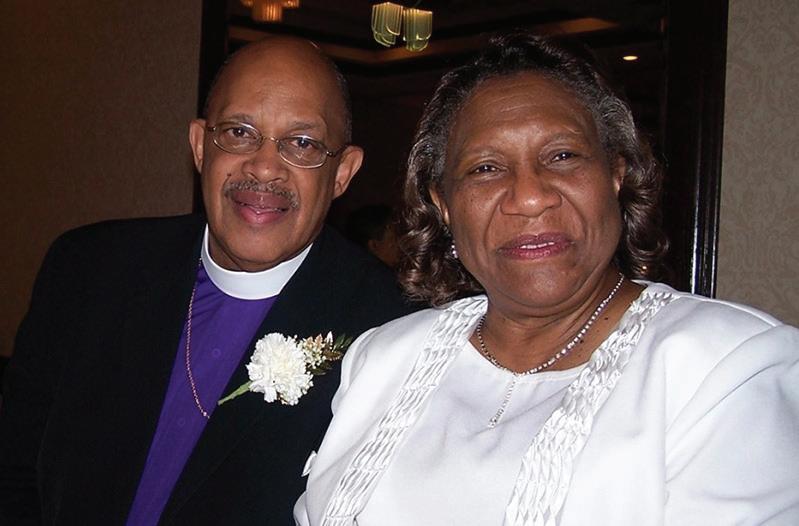
Arthur and Maggie Kelley of St. Louis died 30 days apart. Maggie died of complications of dementia in November. Arthur, who had moved into her nursing home to be with her, died a month later of covid. Their family held a double funeral.
crimes committed against African Americans, in the name of “science,” Ruffin answered her own question:
“(It’s) because there’s a long history of doctors experimenting on Black people to figure out ways to help white people.”
With Black and Hispanic Americans dying at nearly three times the rate of whites from the coronavirus, according to the Centers for Disease Control, prominent people of color are making it their mission to not only get vaccinated but to publicly encourage other black people as well.
A who’s-who list of notables, including Tyler Perry, Al Roker, radio personalities Tom Joyner and Monica Pearson, former President Barack Obama and Vice President Kamala Harris, have all vowed to publicly encourage others to get immunized. Apparently, the movement has gone mainstream with prominent St. Louisans using Facebook to spread the message by posting pictures of
by Erma Moore See Brown, A13
For The St. Louis American
JEFFERSON CITY — Following the recent White House announcement regarding the launch of the Federal Retail Pharmacy Program for coronavirus vaccine administration, Missouri’s Department of Health and Senior Services has learned that federal partners have selected 102 retail pharmacies to join Missouri in the effort to effi ciently make vaccine available to any eligible Missourian.
“We welcome the opportunity to work with our federal partners and provide an additional avenue for Missourians to receive a COVID-19 vaccine,” Gov. Mike Parson said. “This partnership will be a great help in expanding vaccine access and getting more doses into arms as quickly and efficiently as possible.”

future. According to the Centers for Disease Control and Prevention the federal program is being implemented incrementally based on the available vaccine supply, with select retail pharmacy locations providing COVID-19 vaccine to eligible individuals. As vaccine availability increases over time, the program will expand to ultimately include all 40,000+ pharmacies across the nation.

Eighty-one Walmart and Sam’s Club pharmacy locations will begin receiving vaccines from a federal allocation (not out of the state’s weekly allocation), and vaccinations will begin Friday, Feb. 12 at participating locations in Missouri.
The Walmart locations in the St. Louis are at 10741 West Florissant Ave., in north St. Louis and 7437 Watson Road, in Shrewsbury. Additionally, 21 Health Mart independent pharmacies across Missouri will also soon begin receiving and administering vaccinations in the
“We are grateful to soon begin seeing these additional doses from our federal partners available to Missourians,” said Dr. Randall Williams, director of the Missouri Department of Health and Senior Services.
“In conversations with the White House and our federal partners, these pharmacies were selected by them in the designated areas because of their accessibility for many Missouri communities and the trust pharmacies have built with their patients.”
Separate from the State’s limited weekly allotment, the 102 Missouri retail pharmacies are scheduled to receive a total of more than 18,000 doses per week. Eligible customers can schedule a vaccine appointment via the Walmart and Sam’s Club websites once appointments are available, making it convenient to get vaccinated while allocation lasts. To learn more about COVID-19 vaccines in Missouri, visit MOStopsCovid.com
Eligible Missourians can now receive a COVID-19 vaccine through Walmart and Sam's Club locations across the state.
Why should I get vaccinated?
To
Is the vaccine safe?
Yes! The vaccine is safe and more than 90% effective in preventing COVID-19 after two doses*. When you receive your first dose, we will schedule your appointment for the second dose. It is absolutely necessary that you receive both doses. The COVID-19 vaccine cannot give you COVID-19.
To check availability and schedule an appointment, visit: www.walmart.com/COVIDvaccine and www.samsclub.com/covid
Before scheduling an appointment, please verify your eligibility through your State Health Department's website.
* According to Phase III data from Pfizer BioNtech and Moderna
To check availability, see a complete list of Vaccination sites or schedule an appointment, visit:www.walmart.com/COVIDvaccine and www.samsclub.com/covid.
Continued from A12
themselves getting inoculated.
“Take that SARS-CoV-2!”
That succinct message was posted by Dr. Ericka Hayes, a pediatric physician with St. Louis Children’s Hospital. She included a photo of herself with a pink band-aid on her arm holding a sign that read: “Not throwing away my shot.”
“I did it to encourage others, especially knowing the vaccine hesitancy that can exist in my community,” Hayes said.
Dr. Kendra Holmes, Senior Vice President and COO for
Continued from A12 Brown
nant bodies and their babies. From there Jamaa moved into a temporary home until a former Ferguson physician had donated his building to the birth village ushering in new possibilities for the facility.
On Juneteenth, 2020, what started as a vision for better care for pregnant Black women became a groundbreaking reality for the region as Jamaa Birth Village opened its doors as the first Equal Access Midwifery Clinic in St. Louis.
Continued from A12
families and the community at large who desperately want to get back to whatever “normal” will be after the pandemic.
Affinia Health Care not only posted a photo of herself getting vaccinated, she’s gotten permission from other wellknown St. Louisans to use their photos as well. For Holmes it’s about trust-building: “When we started off with the pandemic in St. Louis, we lost a huge opportunity to build trust by not having testing in the black communities from the beginning. I knew the vaccines were coming and we had to be in those communities getting them tested.”
Holmes made it a point to publicize Affinia’s testing efforts in black communities. Apparently, the health agency’s hard work is paying off: “I have received feedback
The success story of Jamaa Birth Village does not end there. This Black History Month, Jamaa Birth Village is entering a partnership with Generate Health, which focuses primarily on advancing racial equity in pregnancy outcomes, family wellbeing, and community health.
Together, the partnership is launching the St. Louis 360 Doulas Initiative.
Doulas are trained, nonclinical support persons who provide physical, mental, and informational support to people in various stages in their pregnancy. The role of the doula is ancient but in recent years has become a trending topic as the
from folks on social media who say they will go ahead and get it (vaccinated). Our waiting rooms are full of Black people wanting COVID-19 vaccines. That’s because health equity was a buzzword at Affinia long before it was with other health institutions,” Holmes explained. Holmes said she’s purposely posting photos of black men getting their shots:
“It’s because we have difficulty getting them engaged in primary care in general. So, it’s always a plus if we can show a black man making his health a priority.”
Former St. Louis Comptroller, Virvus Jones, was a willing participant in Holmes’ unofficial social media inoculation
United States’ maternal and infant mortality rate for Black women steadily increases.
Research shows that doula care improves childbirth outcomes, quality of care received, and promotes cost savings. In a state that has the sevent highest maternal mortality rate, the St. Louis 360 Doulas Initiative is long overdue.
This initiative scales up the local doula movement by training 360 culturally congruent doulas and increasing wraparound support capacity available to pregnant women.
The St. Louis Doula of Color Collective will bolster the efforts of the St. Louis 360 Doulas Initiative by provid-
campaign.
“I did not go to get a shot with the purpose of making an issue out of it,” Jones said. “I went to get the vaccination because I believe in science. I assumed Kendra was going to use it (the photo) to encourage people to get the vaccination and I’m fine with that.”
Donn Johnson, the retired KTVI & KMOV broadcaster, like Jones, is a believer in science. Since posting a photo of himself receiving the COVID-19 shot, Johnson said he’s heard from several fellow veterans who have done or will do likewise. Jones has had no qualms about the vaccine. He defined himself as “a product” of the 1950s and the “Salk (po-
ing mentorship and continuous professional development to support the newly trained doulas who will be working in the community.
The project, funded by Merck for Mothers and Yellow Chair Foundation, will designate St. Louis a “Safer Childbirth City” by closing the divide between communitycentered solutions and medical system services and restructuring the entire maternal care ecosystem to center the needs of Black women and birthing people during prenatal, perinatal, and postpartum periods.
In addition to changing the maternal health care landscape, the project seeks to change the
lio) vaccine days.” Johnson said he posted publicly to convince others:
“I wanted to show people that I got the shot and convince them to get theirs. I didn’t fall out, I had no convulsions, I didn’t break out in a rash,” Johnson said, adding: “I suggest that if you have a chance to get the shot, go get it, man!” Beverly (Bev) Payne is semiretired. She works part-time in the county as an assistant court clerk. Payne, who contracted the virus in July, has no time for Anti-Vaxxers. The photo she posted with her sleeve rolled getting injected, included a curt message: “Don’t come on my page talking s**t, until u had CO-
VID, you won’t understand?” Payne said she respects everyone’s opinion but stressed: I’m not going to argue with them about their choice and I would appreciate the same respect.”
Payne said her family’s onboard regarding vaccinations. Although she’s not interested in debating the topic, she did have rational for her Facebook post:
“A little nudge or encouragement won’t hurt anyone who may be a little skeptical or unsure.”
Sylvester Brown Jr. is The St. Louis American’s inaugural Deaconess Fellow.
way support and care is provided to different populations. Jamaa – which means “family” in Swahili, is committed to training doulas who truly reflect the community in which it serves. This includes making the intentional effort to train doulas from the LGBTQ communities, particularly prioritizing trans populations as they are often overlooked when considering pregnancy-related disparities and birth in general, and Indigenous doulas. Indigenous populations have a maternal death rate that exceeds that of Black women yet is often not included in national data.
This approach to caring for the community once again demonstrates the lengths in which Black women go to save our community and a sector of our public health out of a commitment to self-preservation, and our region is better because of it.
The North County Outreach group on vaccine acceptance is chaired by Bishop Lawrence Wooten Sr., Williams Temple Church of Christ. Members include Cordell Whitlock, Community Action Agency of St. Louis County; John Bowman, St. Louis County NAACP; Mike McMillan, Urban League of Metropolitan St. Louis; Karen C. Nelson Warren, Legal Services of Eastern Missouri; Dellwood Mayor Reggie Jones; Ferguson Mayor Ella Jones; Chris Krehmeyer, Beyond Housing; Bishop Elijah Hankerson, St. Louis Metropolitan Clergy Coalition; Erica Williams, A Red Circle; Rebecca Zoll, North County Incorporated; Geoffrey Soyiantet, Vitendo 4 Africa; Dr. Monique Williams, Mound City Medical Forum; Kendra Copanas, Generate Health STL; Monsignor Mark C. Ullrich, Archdiocese of St. Louis North County Deanery; Dr. Rance Thomas, North County Churches Uniting for Racial Harmony and Justice; Angela Pinex, Spanish Lake Community Development Corporation; Alex Fennoy, Heartland St. Louis Black Chamber of Commerce; and Yolanda Lockhart, National Panhellenic Council — St. Louis.
Doula training will begin in April and will carry on once a month over the next two years. There will be a limited number of scholarships available each month for applicants who need financial assistance. For more information or to register for one of Jamaa Birth Village’s doula trainings, visit the website or contact them directly at 314-643-7703.
“This group of community leaders will help us reach our most vulnerable and the historically underserved,” Page said. “We must engage communities that are under-represented to ensure everyone has access to the vaccine.”
To pre-register for the COVID vaccine, go to stlcorona.com. People who do not have internet access may call 314-615-2660.
The St. Louis American’s award winning NIE program provides newspapers and resources to more than 8,000 teachers and students each week throughout the school year, at no charge.
Questions or comments? Contact Cathy Sewell csewell@stlamerican.com or 314-289-5422

Ivan Bailey and Marcus Levant use on-line resources to complete a science lesson building a roller coaster out of cardstock. The St. Louis American’s e-edition STEM page provides many science activities for students to complete.




Water pollution is the contamination of water from foreign objects, such as chemicals from factories, or trash from people. Water pollution kills many waterbased animals due to an unsanitary habitat. This also disrupts the food chain. When water is polluted, it affects not only rivers, lakes, and oceans, it also affects drinking water. According to the Environmental Protection Agency (EPA), 1.2 trillion gallons of untreated sewage, storm water, and industrial waste are found in U.S. water each year. The World Health Organization reports more than 250 million cases annually of water-based diseases.
To prevent water pollution, remember to always put trash in the proper trash can. When you litter, trash often ends up in water. Use water conservatively. For example, don’t leave

In this experiment, you will observe the density of different liquids.
Materials Needed:
• A Tall, Clear Glass
• Turkey Baster
• Different Juices (suggested: pomegranate, orange, grape, apple, etc.)
Procedure:
q Before you begin, form your hypothesis. Which of the liquids is the densest?
w Use your turkey baster to measure the juices. Place the first type of juice in the glass.

the water running while you brush your teeth. Choose environmentally safe cleaning products, fertilizers, and pesticides. These products interact with your local water supply. And finally, do not dispose of chemicals, oils, paints, or medicines in sinks or toilets. Contact your local authorities to see where you can drop these materials off so that they can be disposed of properly.
For more information, visit: http://www.ducksters. com/science/environment/water_pollution.php.
Learning Standards: I can read nonfiction text for main idea and supporting details. I can make text-to-text and text-to-world connections.
e Next, fill the turkey baster with the second kind of juice. Will it have the same density and mix with the current juice? Will it have a higher density and settle on the bottom of the glass? Or will it have a lighter density and rise to the top? Slowly add the new juice on top of the juice already in the glass.
r Repeat step 3 until you have used all flavors of juice.
Analyze: Sugar increases density. Observe the labels of the juices. Which juices have a higher sugar content?
Learning Standards: I can follow sequential directions to complete an experiment. I can form and test a hypothesis.
REMEMBER: 1 gallon = 4 quarts • 1 quart = 2 pints • 1 pint = 2 cups • 1 cup = 8 fluid ounces
z ½ pint = ______ quart
x _____ cup = 2 fluid ounces
c _____ quarts = ½ gallon
v 128 fluid ounces = ________ quarts
b Amelia needs 3 cups of milk to make a vanilla milkshake. Should she buy a pint, a quart, or a gallon of milk? Explain. _______________
DID YOU KNOW?

For more information on recommended math apps, visit: http://www. parents.com/kids/ education/mathand-science/ best-math-appsfor-kids/.
Learning Standards: I can understand the importance of math fluency. I can make text-to-self connections and text-to-world connections.
In developing countries, 80% of illnesses are caused by poor water and sanitation conditions. According to the World Health Organization, for every $1 invested in water and sanitation, there is an economic gain of $3 to $34.

Ludwick was born in Motetema, Limpopo, South Africa, in 1990. He always had a mind that loved to problem solve and create new things. In ninth grade, he created a form of biodiesel. The following year, he created a mobile dictionary and began creating a national security magazine. In eleventh grade, he began developing DryBath, a gel that can be used to take a bath without water. He wrote a 40-page business plan and applied for a patent at just 17 years old. Marishane was the youngest South African to ever file for a patent. One year later, he founded his business, Headbody Institutes. He earned a Bachelor of Science degree in Accounting and Finance from the University of Cape Town.
DryBath gel has many uses. Campers find it handy and many hotels and gyms carry it for their customers’ convenience. Most importantly, it is used in developing countries, such as remote areas of Africa, which lack access to clean water. When the water is unsanitary, it can cause irritation and rashes on the skin. It can cause intestinal issues when it is absorbed through the stomach. When this type of water comes in contact with the eyes, it can cause infection and even blindness. Citizens can use the individual packets of DryBath gel to bathe.
Marishane has received many awards, such as the Global Student Entrepreneur of the Year Award in 2011. This award came with $10,000 to start his business. He also won the Lee Kuan Yew Global Business Plan competition. In 2013, he was one of Time Magazine’s 30 People Under 30 Changing the World. In 2015, he appeared in Forbes Magazine in the 30 Under 30 African Young Entrepreneurs. He was nominated for “African Young Person of the Year.” He received the Frost & Sullivan Growth Leadership & Innovation Award and was named one of the City Press “100 World Class South Africans.”
In an interview with Peter Horsfield on thextraordinary. org, Marishane gave the following advice, “Find what you love doing, and exert all your effort on pursuing it. Do as much as you can on your own, and always ask for help when you need it. Embrace failure, because you will only ever experience it if you give up, not if you try & fail to succeed.“
To watch Marishane’s Ted Talk about his product, visit: https://www.ted.com/speakers/ludwick_ marishane
Learning Standards: I can read about a person who has made contributions in the fields of science, technology, engineering, and math. I can make text-to-world connections.

Enjoy these activities that help you get to know your St. Louis American newspaper.
Activities — Verb Forms: On the front page of the newspaper, circle in red all forms of the verb “to be,” and in blue, all forms of the verb “to have.”

Tone/Mood: Look at a feature article closely to see what words and sentences help to make you have strong feelings about the article. Make a list of these words and sentences.
Learning Standards: I can identify verb forms. I can analyze tone/mood in an article.


By James Ingram For The St. Louis American
I’ve often and very fondly referred to East St. Louis, in my columns, as “East Boogie” because of its 80-year history and reputation as the vibrant party central to the St. Louis and metro-east area, once populated by blocks of popular nightclubs, lounges and juke joints.
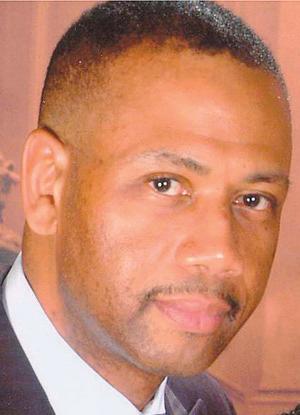
And if East Boogie had a theme song it would be The O’Jays classic “Livin’ for the Weekend.” That’s because from the days of my grandparents, my parents, my generation, to the current group of party people, all looked for a weekend diversion in our region, and East Boogie was their destination. Immediately after St. Louis night spots closed, caravans of eager Missouri partiers and out-of-towners headed across the Mississippi River to the town with a reputation for parties that didn’t stop until the sun came up. My grandparents and parents bragged about the safe, “good old days” in which they spent their weekends at spots like The Cosmopolitan Club, The Vets, Club Paramount, Pugee’s, The Blue Note and Ruby’s Lounge.
This was the same era in which East St. Louis Lincoln High student, Miles Davis fell in love with jazz and his horn; where Tina (Anna Bullock) met and resided in East Boogie with Ike Turner, and where a young Chuck Berry frequented the Cosmo on a regular basis. Meanwhile, a young Michael McDonald learned the meaning of soul at the Blue Note lounge and crooner Phil Perry refined his vocal skills.
Years later, my older cousins, friends and neighbors spent their weekends in clubs like the legendary Blue Swan, Zodiac Club, Coleman’s Plaza and London House East. Listening to their party tales made me restless for the days in which I was legally of age to party the night away,

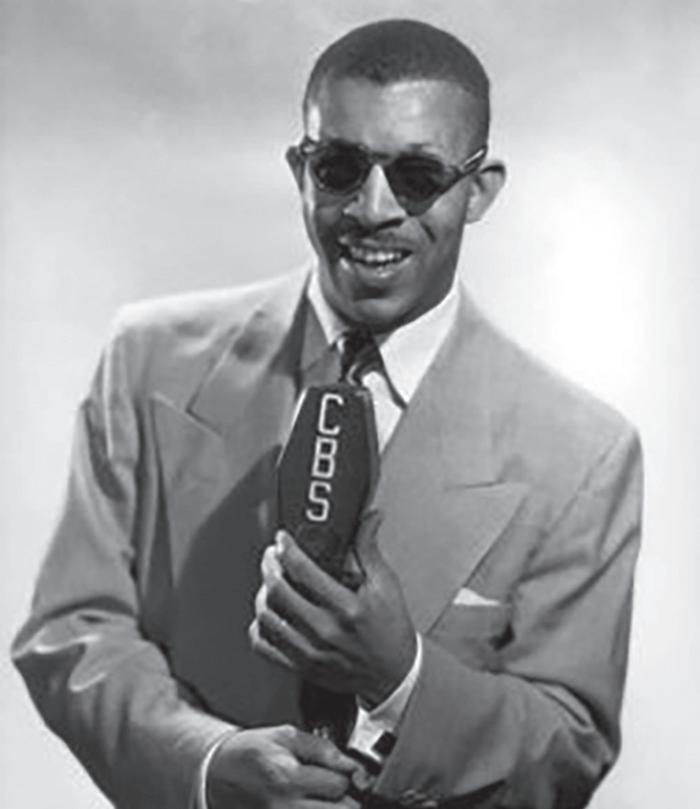
without having to sneak in as I did on more than one occasion.
My time came during the days of the Regal Room, The Wiz, Club Broadway, The Max, St. Louis Nites, The Avenue, The Terrace and Club Celebration. My friends and I would club hop through as many as three or four spots on a Friday and Saturday. Often we would go straight from these venues to breakfast and, half-asleep,
to church, nodding from exhaustion. Even the LGBTQ and gay-friendly crowd had their spot; the legendary Faces, which showcased its own drag show and had a national reputation.
Today, the club scene in East Boogie is not so vibrant due to safety concerns and an increased
By Earl Austin Jr.
Louis American
Of the St.
The St. Louis American celebrates the 50th anniversary of the 1971 Vashon Wolverines basketball team that won the Missouri Class L state championship.
The Public High League was on a serious state championship roll, with O’Fallon Tech winning the state title in 1968 and Sumner following up in 1969. The Wolverines made it three state titles in four years with its great postseason run in 1971. Vashon was not a deep team as head coach Ron Coleman used basically a six-man rotation. However, the Wolverines packed about as much talent and athleticism in that six-man rotation as any team did in the history of the Public High League.
The starting forwards were Roscoe Simmons, a high-scoring 6’4” senior forward and 6’5” George “Schoolyard” Wilson, who was a dominant rebounder. In the middle was 6’7” junior Lamont Turner, a freakishly athletic pivot man who could dominate the action at both ends of the court. The starting backcourt featured steady point guard Ernest Poe and 6’3” do-it-all performer Jimmie Clark.
“It was a great team,” said Hall of Fame coach Marvin Neals, who was an assistant coach on
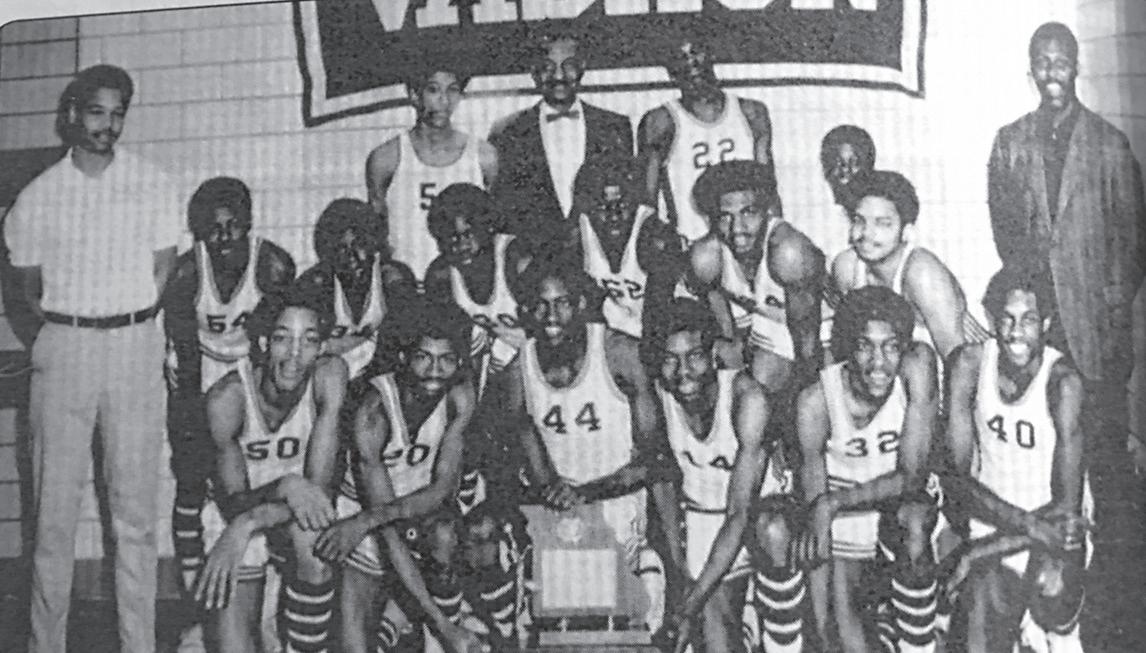
that 1971 team. “We had size, outside shooting and great guards. I wouldn’t mind playing any other team in PHL history with this group.”
Simmons averaged 19 points a game, mainly on long-range jumpers. Turner averaged 16 points
By Bernie Hayes For The St. Louis American
When naming heroes and heroines of the modern civil rights movement you know of the Rev. Dr. Martin Luther King, Rosa Parks, John Lewis and the many others who marched, protested and, in some cases, gave their lives. The list is endless, and the stories of heroes are a source of inspiration to today’s generations. In some ways, they also provide a goal for others to strive to reach.
n Hibbler became a prominent figure in the civil rights movement.
People need heroes because these remarkably brave people save or improve lives and because heroes are inspiring. It never hurts us to remind ourselves who our heroes are and what they represent for us, and to ask ourselves whether we are doing all we can to live up to these ideals. But there is one brave man that is often forgotten. Al Hibbler, the first blind entertainer to gain national prominence. He sang with the Duke Ellington Band for eight and a half years before he left to make five recordings as a solo artist, three became Billboard pop hits.
In 1929, Hibbler’s parents sent him to the Arkansas School for the Blind in Little Rock. He was a soprano in the school choir and developed into a baritone with perfect pitch. He was the first Black singer to have a radio program in Little Rock.
In 1943 Hibbler joined the Duke Ellington band, where he recorded “Do Nothin’ Till You Hear from Me.” His other hits include “Unchained Melody,” “After the Lights Go Down Low,” “11th Hour Melody,” “Never Turn Back,” “He” and “Trees.’
But Al Hibbler was a hero we seldom hear or read about, and during the turbulent 1950s and ’60s, he was on the front line with Dick Gregory, Harry Belafonte, Sammy Davis Jr. and the others. Hibbler became a prominent figure in the civil rights movement. He marched with Martin Luther King Jr. and
from B1
was arrested for civil disobedience in New Jersey in 1959 and in Birmingham, Alabama, on April 10, 1963, where he was picketing in front of the Trailways Bus Station.
Hibbler became a prominent figure in the civil rights movement. With the marches and protests concerning the deaths of George Floyd, Rayshard Brooks, Breonna Taylor and countless others, we need heroes first and foremost because our heroes help define the limits of our aspirations, but we must research and gain and retain information about them. We largely define our ideals by the heroes we choose, and our ideals, such as courage, honor, and justice. Our heroes are symbols for us of all the qualities we would like to possess and all the ambitions we would like to satisfy and Al Hibbler was a true male protagonist. He must not be forgotten.
Continued from B1
reputation for violence, shootings and melees.


Da Beno seems to be the club of choice on the “IL side” for the younger crowd, while Club Illusion, Joe Man’s and The Red Door attract a slightly older crowd, although shootings and violence, even during the current pandemic, have curtailed crowd sizes.
The current generation has no concept of what they missed — the innocent fun, the ability to go out as young adults in a safe atmosphere, and return home with the reasonable expectation of not being assaulted or even killed.
They also missed out on the era of East St. Louis radio, which put many of these clubs and even rap music on the map.
Long gone are the days of WESL Radio, once billed as the
Continued from B1
and 15 rebounds a game, while playing shut-down defense on the opponents’ top players.
After winning the alwaystough O’Fallon Tech regional, the Wolverines met PHL-rival Northwest in the sectionals playoffs. Vashon barely escaped with a 66-65 overtime victory as sixth man Anthony Byers saved the day with a game-winning jumper with eight seconds left in the overtime period. The game-winning shot was Byers only field goal attempt of the game.
After winning the heartstopper against Northwest, the Wolverines pretty much cruised the rest of the way to the state championship. They defeated DeSmet 55-44 as Jimmie Clark led the way with 18 points. In the state semifinals,
greatest station in the nation, led by a cadre of colorful DJ’s such as Rod “Dr. Jockenstein” King, “Gentleman” Jim Gates, “Sweet Charlie” Smith, Michael Tyrone Key, Curtis “Boogie Man”, Bernie Hays and Edie B. This was the era of personality driven radio. So much so that WESL was the first station in America to play the first commercially successful rap song, “Rappers Delight,” from the tiny, dilapidated station with a weak signal.
From that same station Dr. Jockenstein, who received his nickname from ParliamentFunkadelic leader George “Dr. Funkenstein” Clinton, turned high school kids, like me, into fans of party culture. Jockenstein’s “roll call show” was a gimmick designed to entice students out of bed and off to school by having them call in just to rap and brag about their school, favorite teacher, zodiac sign, etc. while
Vashon had little trouble in defeating Kansas City Rockhurst 75-57 as Simmons and Clark scored 24 points each, while shooting a combined 22 for 38 from the field.
The state championship game was an entertaining affair with the Wolverines defeating Kansas City Paseo 78-72 before a capacity crowd at Kiel Auditorium in the St. Louis. The final numbers were impressive as Simmons scored a game-high 22 points while grabbing eight rebounds.
Clark had 19 points while shutting down Paseo’s top player Otis Jackson in the process. Turner finished with 19 points and 15 rebounds while Wilson contributed 12 points and 16 rebounds.
As impressive as the talent that the Wolverines put on the floor every night, it may have been surpassed by the talent on the coaching staff. Head coach Ron Coleman was tabbed as the new head coach at Saint Louis
encouraging them to stay in school. Wednesday night gong show’s at the old Regal Room, were also hosted and masterfully plugged by Jockenstein. It was a launching pad for many successful area singers and comedians who sharpened their skills in front of a sometimes, ruthless audience. Will there ever be a resurgence of East Boogie’s nightlife? It is doubtful and, actually, impractical. In a community with depleted resources to police such activities becomes a low priority with more urgent needs, such as infrastructure improvements and attracting of employers
The challenges outnumber the need to party. But it makes me and others smile when we reflect on a nostalgic era which once put East Boogie on the map. Email: jtingram_1960@ yahoo.com Twitter@ JamesTIngram
University. He went on to be a successful coach and athletic director at Lincoln University in Jefferson City.
Assistant coach Marvin Neals went on to become the head coach at Soldan in 1974 to embark on his Hall of Fame career. He directed the Tigers to the Class 4A state championship in 1981 and Final Four appearances in 1985 and 1990. After an 11-year hiatus, he returned to the sidelines to become the head coach at Cardinal Ritter College Prep, where he led the Lions to three more state championships. When Coleman left for SLU, he was replaced by assistant coach Floyd Irons, who went on to lead the Vashon program to statewide and national prominence during his Hall of Fame career. He led the Wolverines to 10 state championships and numerous other Final Four appearances.


All
Let your spirit of giving heat up the homes of needy children, the elderly, and the disabled. VISIT HARDEE’S® DRIVE THRU FRIDAY MORNING, FEBRUARY 12
Buy a Sausage Biscuit or Egg Biscuit for $1.00 or drop off a donation.
We’ll donate all of the proceeds to Heat Up St. Louis for Missouri and Illinois charities. Donations accepted January 12- February 12.
Bulk biscuit orders will be taken now through February 9
See details at
February 8:
1944 Harry S. McAlphin became the first African American to be accredited to attend a White House press conference. McAlpin was born on July 21, 1906, in St. Louis, and studied journalism and advertising at the University of Wisconsin. He was a former Navy war correspondent and reporter for the National Negro Press Association and the Atlanta Daily World. When he attended his first presidential press conference, President Franklin D. Roosevelt shook his hand and said, “I’m glad to see you, McAlpin, and very happy to have you here.”
1986 — Oprah Winfrey becomes the first African American woman to host a nationally syndicated talk show.
February 9
1944 — Novelist Alice Walker was born in Eatonton, Georgia. Walker is perhaps best known as the author of “The Color Purple” and more than 20 other books and poetry collections
1953 - Author Ralph Waldo Ellison’s novel Invisible Man wins the National Book Award for Fiction The novel explores the theme of a person’s search for their identity and place in society, as seen from the perspective of the first-person narrator, an unnamed Balck man, first in the Deep South and then in the New York City of the 1930s.
1971 - Leroy “Satchel” Paige is nominated into the Baseball Hall of Fame. A pitcher. Was the first Negro League veteran to be nominated for the Baseball Hall of Fame. In August of that year, Paige, a pitching legend known for his fastball, showmanship and the longevity of his playing career, which spanned five decades, was inducted. He was on the roster of the St. Louis Browns

from 1951–1953.
1995 - Astronaut Bernard Harris became the first African American to walk in space during the second of his two Space Shuttle flights.
February 10
1927 Leontyne Price, who became an internationally acclaimed opera singer, was born in Laurel, Miss. 1964 — After 12 days of debate and voting on 125 amendments, the U.S. House of Representatives passed the Civil Rights Act of 1964 It passed in the U.S. Senate on June 19, 1964. After the House agreed to a subsequent Senate amendment, the Civil Rights Act was signed into law by President Lyndon Johnson on July 2, 1964.
1966 — Economist Andrew Brimer is appointed by President Lyndon Johson In 1966, to the board of governors of the Federal Reserve, becoming the first African American
in that position.
February 11
1961 Robert Weaver sworn in as administrator of the Housing and Home Finance Agency.
1976 Clifford Alexander Jr. confirmed as the first Black secretary of the United States Army.
1990 — Nelson Mandela is released from a South African prison after being detained for 27 years as a political prisoner.
February 12
Feb. 12, 1865 — Henry Highland Garnet, first Black person to speak in the Capitol, delivered memorial sermon on the abolition of slavery at services in the House of Representatives.
1909 — The National Association for the Advancement of Colored People was founded. The call

for the organizational meeting was issued on the 100th anniversary of Abraham Lincoln’s birth by 47 whites and six Blacks.
1948 — First Lt. Nancy C. Leftneant became the first Black person accepted in the regular Army Nursing Corps.
February 13
1923 — The first Black professional basketball team, “The Renaissance,” was organized.
1970 — The New York Stock Exchange admits its first Black member floor member and floor broker Joseph Searles
February 14
1936 - National Negro Congress was formed at Howard University as a broadly based organization with the goal of fighting for Black liberation.
Sources: America Comes Alive, Wikipedia
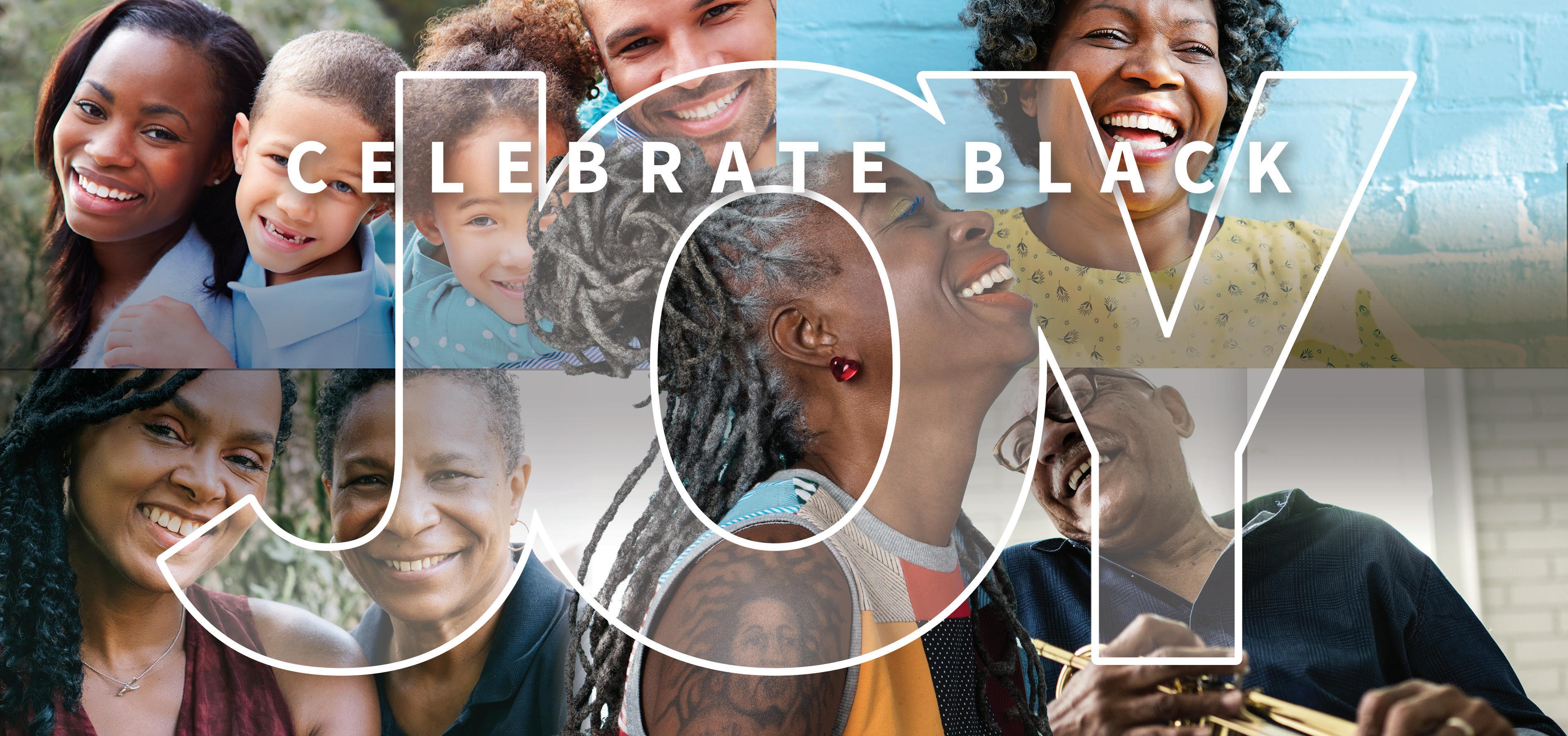
Pick up your free copy of “New Kid” and “Class Act” beginning February 10, at any St. Louis Public Library while supplies last.

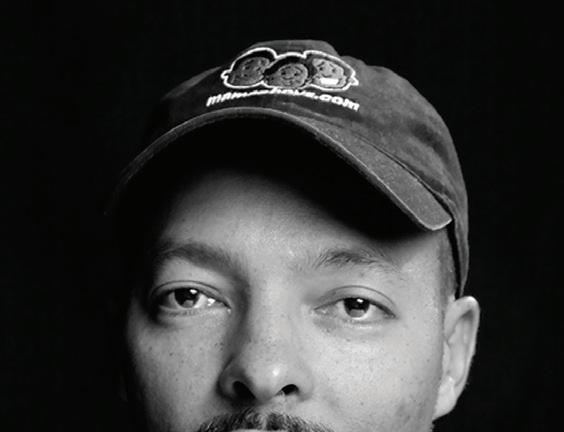
And join us virtually on March 10 at 5:30 p.m. for a discussion with Craft! Open to all ages, but ideal for kids Grades 2-5. Visit the Events Calendar at slpl.org to register for the discussion!



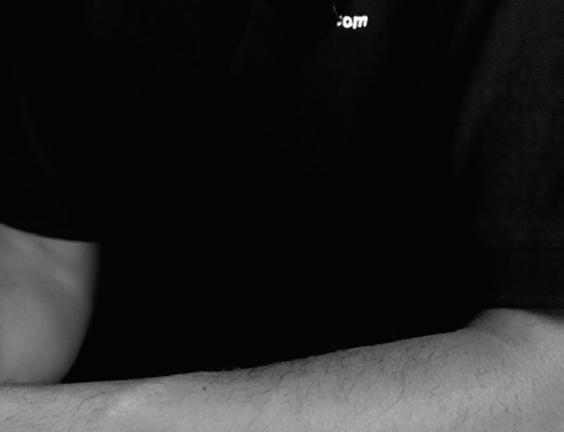
By Thomas Zimmerman
“When I joined the Navy, I barely saw African American officers. I believe that African Americans are now making positive strides in the officer ranks,” said Lt. Nana Bonsu, a Navy Supply Corps officer assigned to Naval Supply Systems Command Business Systems Center in Mechanicsburg.
“We’re still growing and breaking down barriers, but I feel lucky to be part of a group that is inspiring the next generation of Sailors.”
African American and Black men and women have a long history of distinguished service, dating back to the colonial days before the establishment of the Navy. Each February, the Navy honors their legacy of service, while recognizing the men and women who will secure the future for the next generation of African American and Black Sailors.
Bonsu, a Houston native, enlisted in the Navy to pay for college and see the world. From working the deck plates as a seaman to leading Sailors as a commissioned officer, he continues to lead logistics information technology solutions as a NAVSUP BSC Project Officer and promote positive command morale and quality of life as Command Managed Equal Opportunity
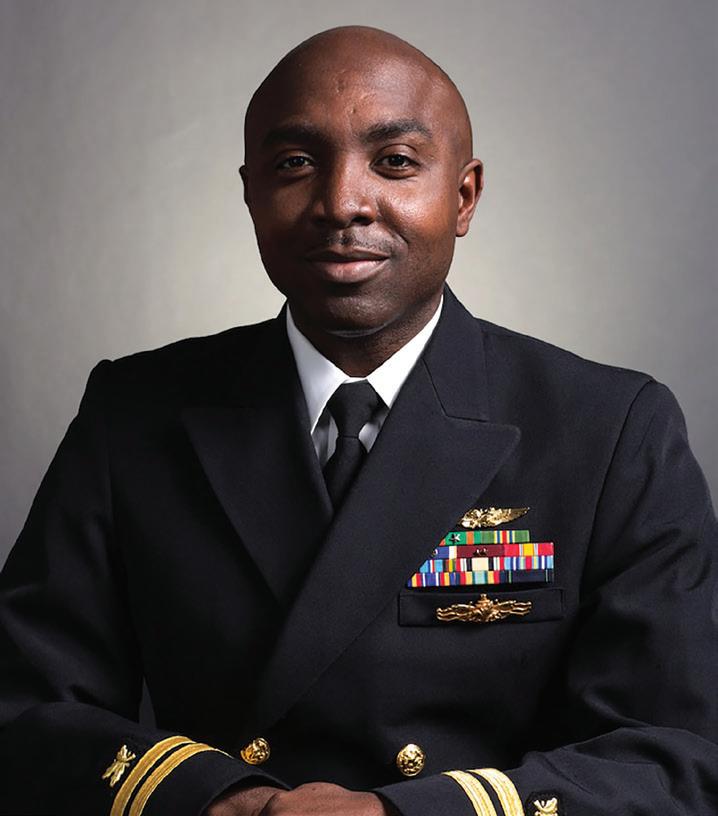
Manager.
“This position has allowed me to come full circle and leverage my supply chain and logistics experience,” said Bonsu. “The diverse team at NAVSUP BSC is always working towards a common goal, and that makes it fun to come to work.”
Bonsu’s journey to NAVSUP BSC began with his enlistment as a storekeeper. Following basic and “A” school training, he served aboard the guidedmissile cruiser USS Hue City (CG-66) and later aboard Military Sealift Command’s dry cargo/ammunition ship, USNS Robert E. Peary (T-AKE-5).
Aboard Peary, Bonsu was promoted to chief petty officer and reassigned to guided-missile frigate USS Hawes (FFG53). There, he applied for the Seaman to Admiral-21 (STA21) program, a highly-competitive full-time undergraduate education and commissioning program for enlisted personnel.
“My selection for STA-21 was very humbling. As an African American, it felt as if I was opening the door wider for more people like me,” said Bonsu.
After Bonsu’s STA-21 selection, he earned his Bachelor
“It means a lot to me to see that Navy leadership is taking diversity and inclusion so seriously.”
- Lt. Nana Bonsu
of Science degree in business management from Prairie View A&M University.
“I could have gone to any college, but it was important to me to attend an HBCU,” he said. “I learned a lot from those educators and their life experiences that I wouldn’t have anywhere else.”
After earning his bachelor’s degree and Navy commission, he completed his division officer tour aboard the amphibious assault ship USS Kearsarge (LHD-3); and served as Aviation Support Detachment Officer at Naval Air Station Oceana, where he provided aviation support to Super Hornet squadrons and 64 Fleet Readiness Center work centers before arriving at NAVSUP BSC.
As diversity and inclusion issues came to the forefront of our nation in 2020, Chief of Naval Operations Adm. Mike Gilday asked sailors to listen, and established Task Force One Navy to address issues of racism, sexism, destructive biases, and their impact on naval readiness.
“We must demand of each other that we treat everyone with dignity and respect. If you won’t do that, then our Navy
is not the best place for you,” Gilday said in a June 2020 news release.
“NAVSUP is committed to the principles of diversity, inclusiveness, and respect; these principles are integral elements of our command culture,” said Rear Adm. Peter Stamatopoulos, commander, NAVSUP. “We must constantly renew our commitment to foster an environment that appreciates individual perspectives and enhances our ability to develop effective solutions to today’s challenges. From senior leaders to frontline employees, we collectively share the responsibility to ensure diversity and inclusion are ingrained into the NAVSUP culture.”
“It means a lot to me to see that Navy leadership is taking diversity and inclusion so seriously,” said Bonsu. “They are sending a clear message that if you’re not on board with this, you are going to get left behind.
“There was a time when seeing a Black officer on a ship, earlier in my career, was a wow moment for me because it wasn’t that common. It motivated me,” he said. “Now it’s much more common. They helped open the door for me, and I hope that I’m able to do that and be an example for others.
“I let my work speak for itself and not concern myself with what someone may think of me based on a stereotype. At the end of the day, you want the best person in the job. No matter their skin color, religion, or sexual orientation. Diversity and inclusion are key to establishing an environment of dignity and respect. We all play an important role in that.
To learn more about the legacy of African American and Black men and women in the Navy, visit https://www.history. navy.mil/browse-by-topic/diversity/african-americans.html


By Charlene Rhinehart Black Enterprise
Mary T. Washington Wylie made history when she became the first Black woman Certified Public Accountant (CPA) in the United States. She was also the 13th Black CPA in the country.
Wylie’s CPA designation and accounting firm opened the doors for the next generation of Black CPAs. It became the learning laboratory that gave birth to many of the first 100 Black CPAs in the country.
“Ms. Washington was a perfectionist and expected high-performance. She was a taskmaster but she was also kind and nurturing,” said Lester McKeever, one of the first 100 Black CPAs and former chairman of the Chicago Federal Reserve.
“She was responsible for so many young men and women becoming licensed CPAs. Her firm was the only place where someone could get experience even after passing the CPA exam. She always wanted to help and encourage young people, introduce them to the profession, and guide them.”
It has been said that becoming a CPA is a more difficult task than conquering the bar exam for lawyers. Today, you need a Bachelor’s degree in addition to extra learning hours in specific subjects. Most obtain a Master’s Degree to fulfill the education requirements. Candidates also have to pass a series of exams and gain experience to obtain the license.
To maintain the CPA license, individuals must commit to continuing education.
As challenging as the process to become a CPA may appear, it was widely known that being a Black person presented an even greater barrier.
“Being Black limited your opportunities,” McKeever said, as he recalled his experience trying to find a job as a Black accountant in the 1950s. “But
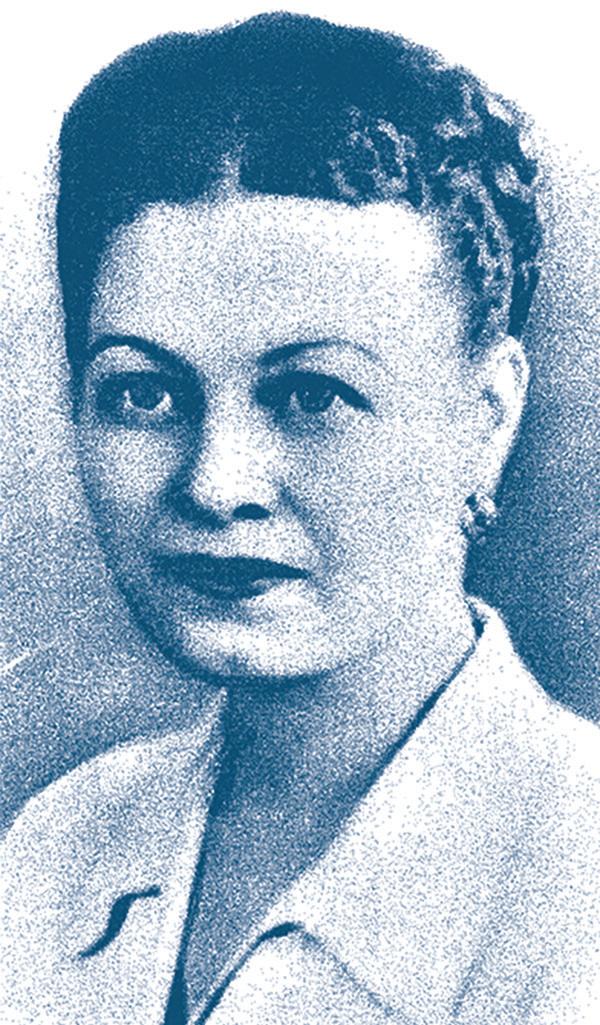
showing true concern for your client’s success and working to improve your community provides unexpected benefits. When you give to others, you gain more than you give in trying to help.”
Wylie expanded the opportunities in her community by creating jobs and providing services that were needed. In 1931, she opened her accounting firm in a basement on the south side of Chicago. Then she obtained her bachelor’s degree from Northwestern’s College of Business ten years later. Wylie’s exceptional commitment to her studies allowed her to complete her degree as the only woman in her graduating class.
Breaking ground
Wylie’s career journey began when she started working afternoons and weekends as a bookkeeper while in high school. Then, she landed a position at Chicago’s first privately owned Black bank, Binga State Bank. This space became a career launching pad for many African-Americans, including Wylie. While at the bank, she worked as an assis-
Mary T. Wylie expanded the opportunities in her community by creating jobs and providing services that were needed. In 1931, she opened her accounting firm in a basement on the south side of Chicago.
tant to Arthur Wilson who was the vice president of Binga Bank. Wilson was also noted as the second Black CPA in the country, playing an influential role in Wylie’s decision to pursue a career in accounting.
In 1943, Wylie accomplished her next goal: becoming a CPA. This moment was groundbreaking. It provided her with the education and experience needed to provide valuable services to Chicago’s Black-owned businesses. It also created economic opportunities for Black people on the south side of Chicago.
Hiram Pittman was hired by Mary T. Washington Wylie as a newly minted CPA. He once described Wylie’s firm as an “Underground Railroad” for Black CPAs. Many individuals would move to Chicago to work for Wylie in order to gain the experience needed to earn the CPA credential.
McKeever, one of the oldest Black CPAs still living in Chicago, credits Wylie for helping him to jumpstart his career. “When I graduated from college, the Big 8 accounting firms and large corporations did not hire African Americans,” Mckeever said. “My university forced one firm to give me the courtesy of an interview. They said they couldn’t hire me because their clients wouldn’t accept me.”
McKeever added, “Mary T. Washington Wylie gave me the

Maryville stands with our community.
It started as an informal meeting of two Black female staff members looking for community and professional support. The group grew and became Mocha Tea, now 50 Maryville women strong.
Faculty, staff and students find support and mentorship through Mocha Tea’s programs, events, book clubs, lunch ‘n learns and mental health forums. The organization became a bridge for three student groups: Latinas Unidas for Latinx students, Spilling the Tea for Black students and Boba Chai for Asian American students.
In April, Maryville’s Mocha Tea organization received well-deserved recognition, earning INSIGHT Into Diversity Magazine’s 2020 Inspiring Affinity Group Award.
To learn more about Mocha Tea, visit maryville.edu/mochatea


opportunity to work part-time with her during tax season,” McKeever said. “You needed to have one year of experience with a CPA or CPA firm
to meet the requirements to become a Certified Public Accountant. That was my only opportunity at the time to gain the experience needed to become a CPA.”
Wylie faced many obstacles as a Black woman CPA but it didn’t stop her from building a successful career. As her firm continued to grow, she added on partners. First, the accounting firm was Washington & Pittman. In 1976, McKeever advanced to the Board of Directors as a managing partner. The firm was later renamed Washington, Pittman, & McKeever. In 2018, Mitchell Titus acquired Washington, Pittman, and McKeever. Wylie died in 2005 at the age of 99. The power of her work still lives on today. The Mary T. Washington Wylie Opportunity Fund was created to provide scholarships and internships to the next generation of CPAs. The National Society of Black Certified Public Accountants is on a mission to bring awareness to the accounting profession. Currently, fewer than 1% of all CPAs in the country are Black.






By Jennifer Poindexter
Explore St. Louis

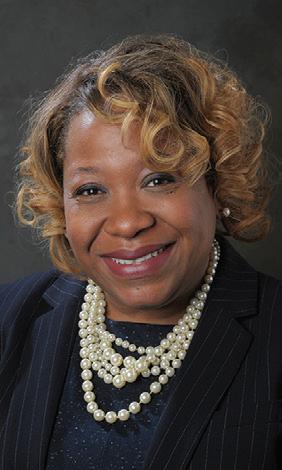
There are many historic sites to visit around St. Louis to help tell the stories of the past, both the struggles and achievements that got us here today. This month as you celebrate Black History Month, find ways to honor the rich culture and great achievements of African Americans in the Gateway City. Take a walk through history at these sites, events and attractions perfect for you and your family:
The St. Louis Walk of Fame is located along The Delmar Loop and honors notable people from St. Louis who made contributions to the culture of the United States. Visit the stars of notable African American figures such as Maya Angelou, Tina Turner, Chuck Berry, and Cool Papa Bell. All of the inductees were either born in the Greater St. Louis area or spent their formative or creative years here. It was designated as “One of the 10 Great Streets in America” by the American Planning Association. Head to the National Blues
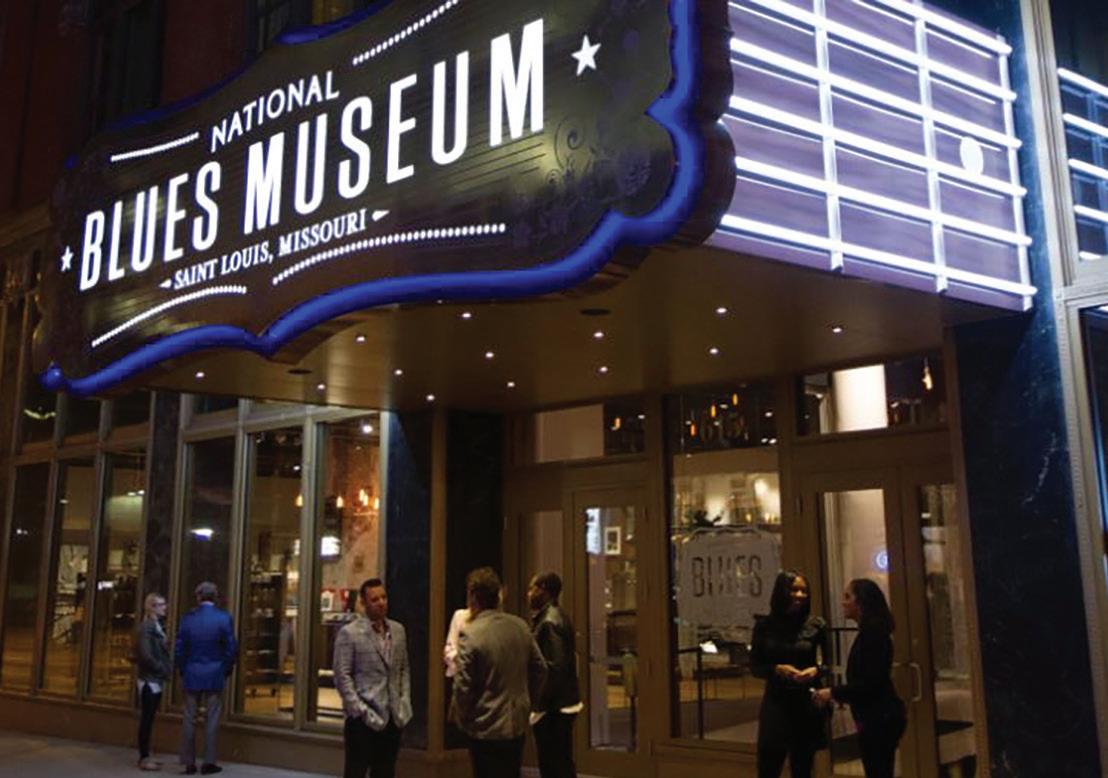
Museum located on Washing-
ton Ave between 6th and 7th streets and celebrate the genre as the foundation of all modern American music. Walk around and discover an entertaining environment that includes high impact technology driven experiences, a state-of-the-art theater, and artifact-driven exhibits.
Check out the St. Louis

County Public Library’s website for the 2021 Black History Celebration Enriching Culture with Hope and Healing, including a variety of online educational and inspirational events throughout February. All events will be held virtually via Zoom or on the Library’s Facebook page Scott Joplin was a famous pianist and composer who achieved fame for his ragtime compositions. He is known widely as the “King of Ragtime.” You can visit the house Joplin and his wife, Belle, lived in for some time. The Scott Joplin House State Historic Site plays some of his famous melodies as you walk through the modest flat on Delmar Boulevard. It is furnished and lit by gaslight as if it were 1902 when Joplin spent time there composing some of his famous songs. Take a stroll through the George Washington Carver Garden at the Missouri Botanical Garden. The inspirational garden honors the life and accomplishments of the famous scientist who greatly influenced 19th and 20th-century agriculture and education. The focal point of the garden is a life-size bronze statue of Carver sculpted by Tina Allen. The garden is one and a half acres and features inspirational inscriptions from Carver’s writings and speeches, a reflecting pool and is landscaped with viburnums, hydrangeas, and holly trees to give it an intimate feel.
Check out the Missouri History Museum for Black history programming throughout the month. Their newest addition of “See STL Walking Tours” includes a walking tour of “The Ville” which is home to several Grammy Award winners, rock and roll hall of famers, Kennedy Center honorees, one of the first Black woman millionaires, three Grand Slam titleholders, the founder of the first Black collegiate sorority, and a chemist who worked on the atomic bomb.
Take a walk through art at Black Nonpareil at the Angad Arts Hotel. The exhibit consists of a total of 29 pieces of artwork from 18 local Black artists. 10% of all sales from the Black Nonpareil exhibit will be donated to the All Black Creatives Foundation, which provides free classes, networking opportunities and job referrals to emerging Black leaders in creative and tech fields. Enjoy a night of music on Feb. 19 at Lift Every Voice: Black History Month Celebration performed by the St. Louis Symphony Orchestra. Starting at 7:30PM, the SLSO and IN UNISON Chorus will celebrate African American culture through reflective and soulful
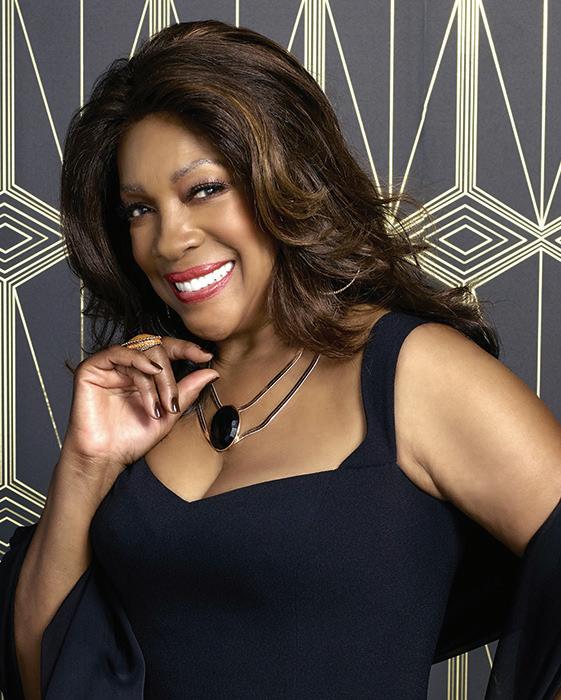
courtesy of ‘Dancing With The Stars’ Music legend Mary Wilson, a founding member of The Supremes, died on Monday, Feb. 8. She was 76.
By Kenya Vaughn
Of the St. Louis American
Less than a month after Mary Wilson embarked on her yearlong celebration of the 60th anniversary of the day her group The Supremes signed with Motown (Jan. 21, 1961), the world is mourning her death.
Wilson died on Mon., February 8 at her home in Henderson, Nevada, just outside of Las Vegas. The singer, best-selling author, motivational speaker, businesswoman, former U.S. Cultural ambassador, mother and grandmother was 76. A cause of death has not been released.
“I have so many memories of our time together,” fellow founding Supreme Diana Ross said of Wilson in a statement posted on Facebook, Instagram and Twitter.
Ross is now the sole surviving member of the original trio that helped Motown represent the soul of America when they delivered the first of an astonishing 12 No. 1 hits — five in a row in the span of 1964-1965.
n Mary Wilson was extremely special to me. She was a trailblazer, a diva and will be deeply missed.”
- Barry Gordy
“The Supremes will live on in our hearts,” Ross added.
Wilson, Ross and Florence Ballard (and later Cindy Birdsong and Jean Terrell) epitomized grace, elegance, glamour.
They were among the collective of artists under the groundbreaking Motown label that simultaneously combated racist stereotypes with their representation of African Americans and changed the landscape of popular music through unparalleled talent from both the performers and songwriters.
Urban League honor
“Today everybody wants to be a star, but in the 1960s as a Black person that wasn’t something that was on your mind,” Wilson told The St. Louis American in 2016, ahead of receiving a Lifetime Achievement Award from the Urban League of Metropolitan St. Louis’ Salute to Women in Leadership Gala. “You were just really trying to be considered a human being and a citizen.”
Born March 4, 1944 in Greenville, Mississippi, Wilson was the eldest of three children born to Sam and Johnnie Mae Wilson. The Wilsons were among the millions of Black families that migrated north to search for a better life and escape the racial terror that was the constant reality for so many in the south.
Wilson spent a brief portion of her childhood in St. Louis, and later Chicago, before moving to Detroit to live with her aunt Ivory “I.V.” Pippin and uncle John L. Pippin. She was reunited with her mother and siblings in Detroit at age 9. The memories Ross endearingly spoke of originated in Detroit’s Brewster-Douglass Housing Projects in the late 1950s. Back then, she and Wilson, like so many of their peers, were youngsters with a passion for music.
“As a young girl I never thought what we were doing was anything special,” Wilson said. “Now I know it had to be [special] for the world to still be appreciating it, enjoying it – and for us to continue to be honored for it.”
Before they were The Supremes, they were a teen quartet known as The Primettes. The group was created to be the female counterpart to a group of male singers known as The Primes. The original members included Florence Ballard, Betty McGlown, Ross and Wilson.
See Wilson, C6

Lewis’ Lace Gods opens sneaker museum, retail shop at N2EXISTENCE
By Amy Burger For The St. Louis American
Sneaker culture is more popular than ever, and St. Louis entrepreneur Karl Lewis’ Lace Gods brand has opened a sneaker museum on Cherokee Street as a part of Aaron Fowler’s ongoing N2EXISTENCE project with The Luminary, in collaboration with the STLMade movement.
Lace Gods is a sneaker brand that produces custom street wear, specialized sneaker paint jobs and accessories. The month-long shop, running through Feb. 22, will feature pop-ups with other sneaker artists and aficionados such as Brock Seals and R.Lamar, and will sell sneakers on consignment as well as offer sneaker cleaning.
Lewis is inviting these artists to paint original designs on the exterior of the shoes and is selling limited-edition sneakers that are difficult to find elsewhere, such as vintage Nike Air Jordans and other vintage designs. Lace Gods also produced
n Lace Gods is a sneaker brand that produces custom street wear, specialized sneaker paint jobs and accessories.
a line of custom apparel for the brand that is available in the shop.
“I have always had a passion for storytelling. I love to write in all forms. I self published a poetry book, Dreams & Schemes: America Behind The Scenes, and I’ve recently been working alongside my cousin on his autobiography,” Lewis said.
“He was born with one arm and is still an extraordinary athlete. I come from a big sports family. Shoes are where I combine my love for sports and storytelling.”
Lewis previously worked as an assistant manager at Kid’s Locker in the Saint Louis Galleria and served a vital role in the beginning of The Nike Factory Store at the St. Louis Premium Outlets in Chesterfield.
“I’ve always wanted to have my own store and tell my own stories and N2EXISTENCE is my first opportunity to have my own store,” he said. N2EXISTENCE is a project of The Luminary by yearlong artist in residence, Aaron Fowler, and made possible by STLMade.
The Cherokee Street shared storefront is the first part of the artist’s largest series of projects to date and the first solo presentation in his hometown. Fowler is picking up the practice of speaking a new future into existence, as an aspiration of hope, for himself, his family and his city. The storefront is a space in which a growing
‘Judas and the Black Messiah’ performances connect viewers to Hampton tragedy
By Kenya Vaughn Of The
St. Louis American
As the title implies, filmmaker Shaka King’s “Judas and The Black Messiah” opts to illustrate the systemic betrayal of Fred Hampton as opposed to a traditional biopic with his late 1960s period drama.
Through a meteoric rise as Chairman of the Illinois Chapter of the Black Panther Party, Hampton was on pace to ascend to the Mount Rushmore of Black social justice/Civil Rights icons and fill the void in leadership left by the assassination of Rev. Dr. Martin Luther King Jr. Instead, the following year after King’s death Hampton became yet another casualty of those determined by any means necessary to prevent America from pivoting towards racial equity. Inspired by true events, Shaka King and screenplay co-writer Will Berson (writers/ producers Kenny and Keith and Lucas helped
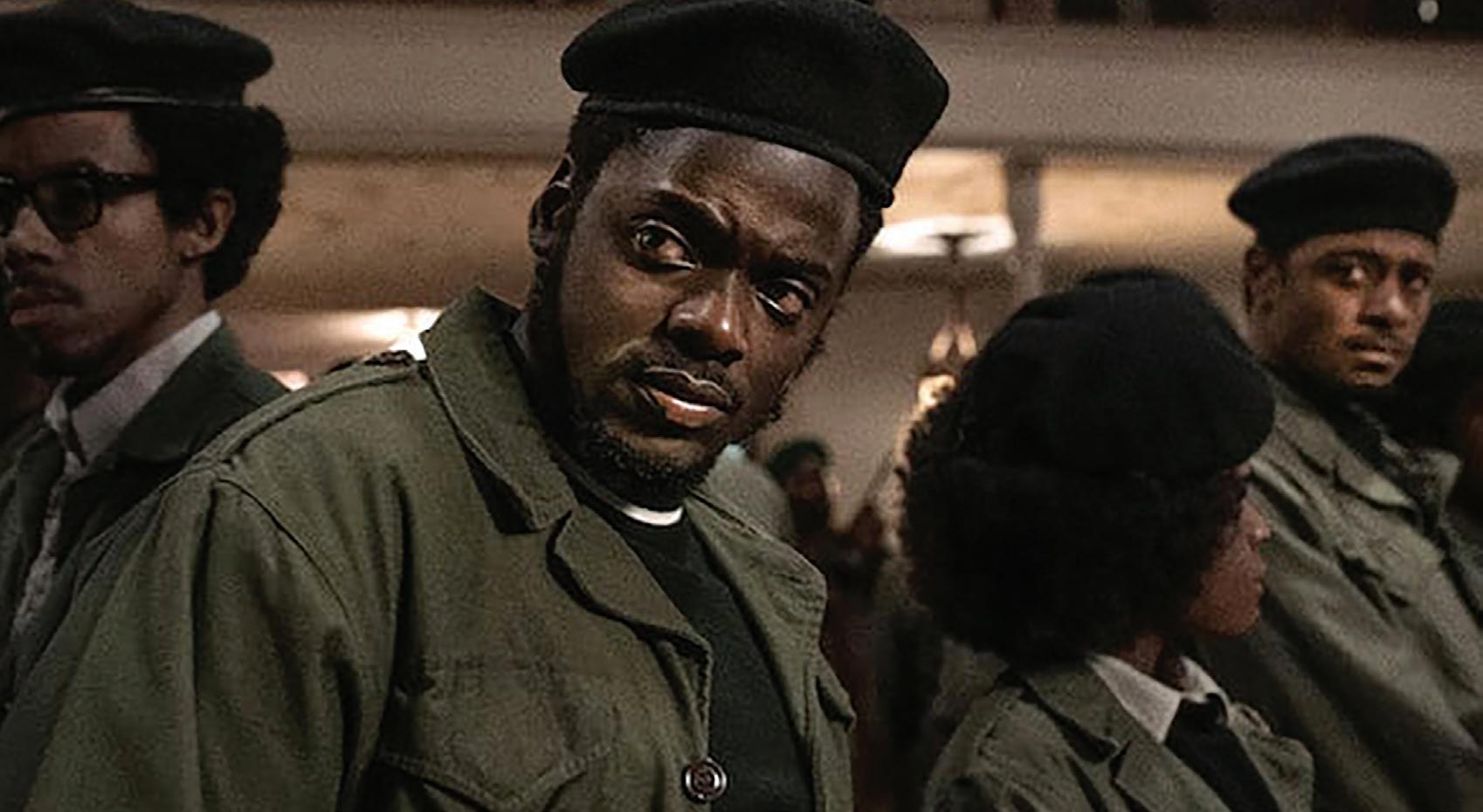
“It’s money on the line; it’s an opportunity to make more money, just putting money over health right now, pretty much.”
- Kawhi Leonard on the NBA’s Decision to have the Allstar Game
With Earl Austin Jr.

The Cardinal Ritter College Prep Lions added to their extensive trophy case last year by winning the Class 3 state championship in boys’ basketball.
It was a record-setting performance for the Lions as they defeated Charleston 88-32 in the state championship game. The 2021 Lions have their sights set on another state championship this season as then enter the week with a 12-3 record. Cardinal Ritter is currently ranked No. 1 in the current Missouri Basketball Coaches Association Class 5 rankings. The Lions will be competing in the postseason in Class 5 for the first time this season due to their past success at Class 2 and 3.
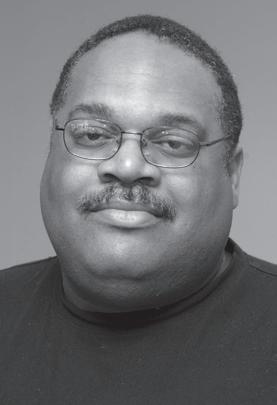
Led by head coach Ryan Johnson, Cardinal Ritter has continued its winning ways while battling its always-tough schedule, which includes Class 6 state contenders Springfield Kickapoo, Chaminade and CBC, Class 5 contender DeSmet and Class 1 state power South Iron, among others.
The leading scorer for the Lions is 6’3” senior Marion Fleming, a four-year starter who is averaging 20 points and four rebounds a game. Fleming is a versatile player who can dominate in the low posts like a forward or handle the ball and make jump shots like a guard.
A pair of juniors have also stepped in to become impact players in their first season with the Lions. Robert Lewis is a 6’8’ forward who is averaging 12.8 points and 6.2 rebounds a game. He is an excellent athlete who can throw down dunks, hit jump shots and crash the offensive boards. Braxton Stacker is a 6’4” guard, who transferred to Ritter from Belleville East, where he was one of the top young players in the metro east. He is currently averaging 11 points a game. The point guard is 6’0” senior Illyass “Biscuit” Harris, who averages six points a game while providing leadership on the floor. The Lions have had to adjust on the fly with the loss of starting guard Luther Burden, who recently transferred to East St. Louis. Burden was averaging 12 points a game at the time of his departure.
A trio of guards who are filling in the gap in Burden’s absence are junior Jordan Nichols and seniors Nyjahl Vaughn and Willie Davis. Providing more size up front is 6’8” senior forward Josh Robinson.
Metro East season is underway
After waiting on the sidelines for the past two months, the athletes on the metro-east Illinois side finally got a chance to begin their basketball season last weekend. The Covid-19 pandemic wiped out the 2020 IHSA state tournament as
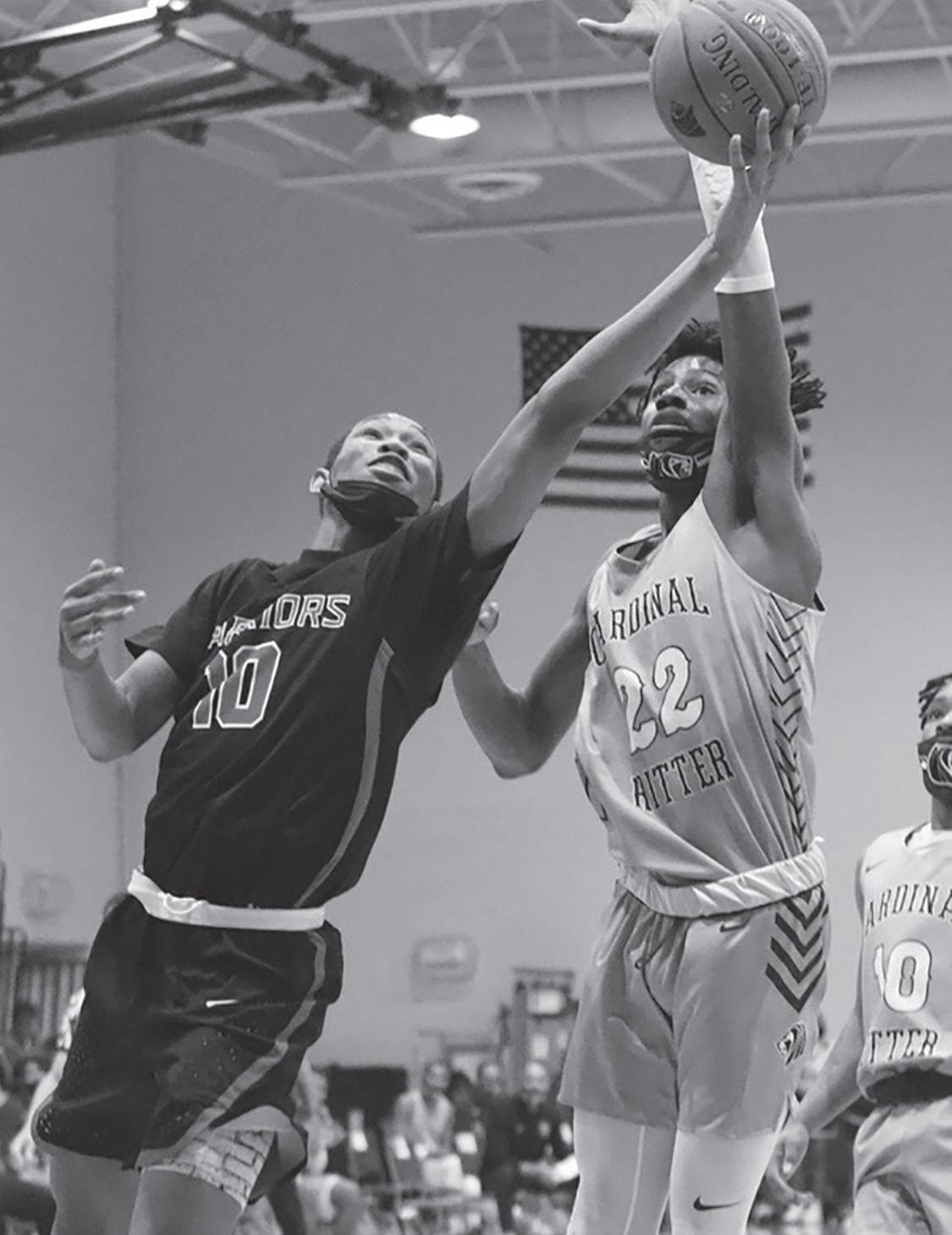
well as all of the fall sports in the state. With the season in the metro-east now officially underway, here are some of the top boys and girls basketball players to watch.
Boys
Tommie Williams (Belleville West): The 6’4” senior guard averaged 14.6 points and 6.4 rebounds as a junior.
Brennen Waller (Edwardsville): The 6’5” senior returns after averaging 19 points and five
rebounds while shooting 44 percent from 3-point range.
Macaleab Rich (East St. Louis): The 6’6” sophomore averaged 10 points and six rebounds during his impact freshman season.
Ethyn Brown (Belleville East): The 6’2” senior guard averaged 12 points, four rebounds, three assists and three steals a game as a junior.
Nate Hall (Collinsville): The 6’8” senior forward averaged seven points a game for a 31-win team
sports eye
Jennings Warrior DeMarion Shanklin (10) goes for a loose ball against Cardinal Ritter’s Robert Lewis (22) during game action Saturday, Feb. 6, 2021, at Cardinal Ritter College Prep. The Ritter Lions would defeat the Warriors of Jennings 52-43.
that won a regional championship last season. Girls
Sydney Harris (Edwardsville): The 6’0” junior guard averaged 15.7 points and shot 41 percent from 3-point range as a sophomore.
Elle Evans (Edwardsville): The 6’0” junior forward averaged 8.2 points and four rebounds a game as a sophomore.
Anaya Davis (Althoff): The 5’10” senior forward averaged 15.2 points and 7.5 rebounds as a junior.
Tyler Butler (Belleville East): The 5’10” senior forward averaged 12.6 points and 9.9 rebounds as a junior.
Amelia Bell (O’Fallon): The 6’0” senior forward averaged 12.2 points and 6.8 rebounds as a junior.
Shakara McCline (East St. Louis): The junior guard averaged 13.5 points a game as as a sophomore.
Big Games this Weekend
University City at CBC, Thursday, 7 p.m.
Webster Groves at Marquette (girls), Friday, 5:30 p.m Hickman at Vashon, Saturday, 3 p.m.
CBC at MICDS, Saturday, 3 p.m.
Cardinal Ritter at Lift for Life (girls), Saturday, 7 p.m.
Leon Spinks left us but St. Louis and the boxing world will never forget his biggest night
February 15, 1978.
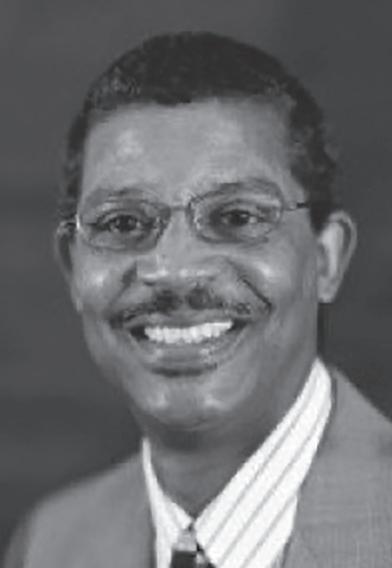
I was a senior at Kirkwood High School, had been accepted to all the colleges I applied to and the Pioneers were on a win streak that would carry us to the Final Four of the state tournament. Oh, and on this night, I was going to watch Muhammad Ali beat the heck out of local Olympic boxing hero Leon Spinks in a nationally televised championship bout on CBS. Do not get me wrong, I cheered on Leon and brother Michael Spinks throughout their careers. A mural I pieced together from Sports Illustrated photos in my bedroom during the mid1970s still features Leon and Michael on the podium after winning respective gold medals in the 1976 Summer Olympics in Montreal.
But on this evening after Valentine’s Day, I was – as always – all in for Ali. Spinks whipped Ali that night in Las Vegas. It was a 2-1 split decision and the judge who awarded the fight to Ali should have been investigated. It still stands among boxing’s greatest upsets and it sent me to bed a crushed young man. Spinks, 67, died on Feb. 6, 2021 after battling
prostate and other cancers as valiantly as he fought Ali to win the heavyweight title.
Spinks would lose a rematch to Ali in September. Spinks was the last man Ali beat in the ring. Both fighters probably should have retired that night.
Black powers
The Tampa Bay Bucs disman tled the Kansas City Chiefs 31-9 in the Super Bowl last Sunday. Bucs head coach Bruce Arians praised his Black offensive and defensive coordinators for the respective game plans that shred ded the Chiefs defense and stifled its powerful offense. Take bows, Byron Leftwich and Todd Bowles. In the two weeks between the NFC and AFC cham pionship games, Leftwich found ways to open pass ing lanes for quarterback Tom Brady that had not been exposed by any offense taking on the Chiefs.
As for Bowles, Chiefs head coach Andy Reid said it
best.
“Todd had a good plan,” Reid said. “Give credit to Todd for the job that he did. He got us.”
Birds of paradise
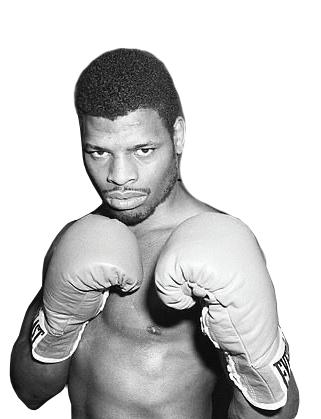
The Colorado Rockies should be prepared for irate fans to storm their stadium after trading star third baseman Nolan Arenado to the St. Louis Cardinals for pitcher Austin Gomber and a band of prospects that most folks have never
The Rockies also will send $50 million over the next several years to help cover Arenado’s new deal with the Cardinals. Post-Dispatch says the sever-year pact is worth $214 million – the highest in Cardinals history by a whopping
In an introductory press conference last week, Arenado said he plans to be in St. Louis for a long time. But he certainly does not have to. Arenado, a five-time All Star and winner of eight consecutive Gold Gloves for his stellar play at third base, can become a free agent after this season and again in after the 2022 campaign.
The Reid Roundup
It has been 16 years since Cory Spinks, the undisputed world welterweight champion, took on Zab Judah in a rematch at the Savvis Center in St. Louis on Feb. 14, 2005. More than 22,000 jammed the sold-out venue to see Spinks, a son of Leon Spinks, in the first major boxing bout in St. Louis in 40 years. Judah won by a technical knockout in the ninth round… With school board approval, former Kirkwood, Missouri and NFL star wide receiver Jeremy Maclin will be hired to lead the Pioneers football program… Britt Reid’s automobile accident in Kansas City on Feb. 4 – and the ongoing investigation to determine if he was impaired – shook the Chiefs. Reid, head coach Andy Reid’s son and linebacker coach, smashed into two non-moving vehicles on the shoulder of a highway entrance and left a 5-year-old Black girl hospitalized, unconscious and in critical condition. Alvin A. Reid was honored as the 2017 “Best Sports Columnist – Weeklies” in the Missouri Press Association’s Better Newspaper Contest and is a New York Times contributor. He is a panelist on the Nine Network program, Donnybrook, a weekly contributor to “The Charlie Tuna Show” on KFNS and appears monthly on “The Dave Glover Show” on 97.1 Talk.”


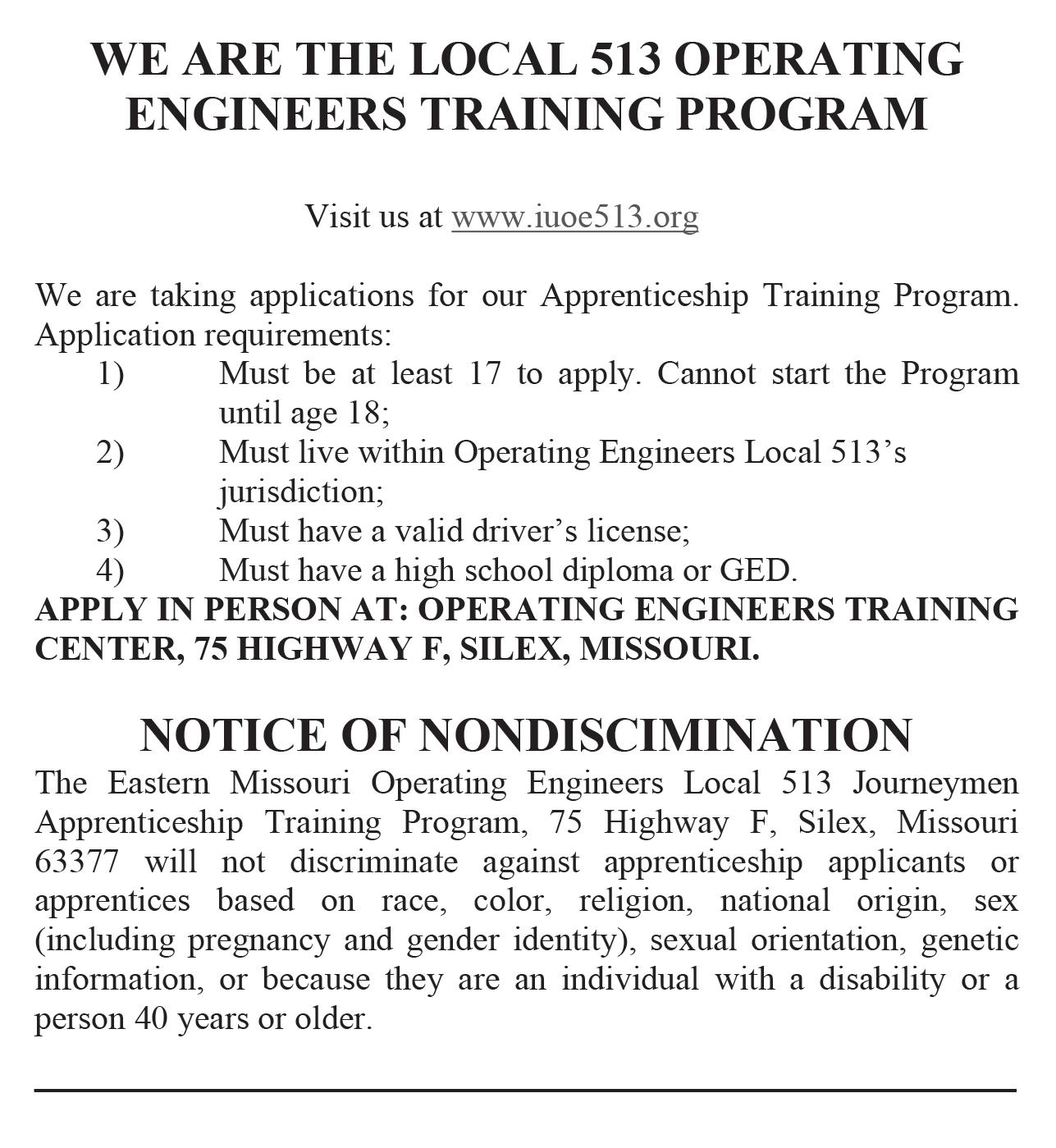
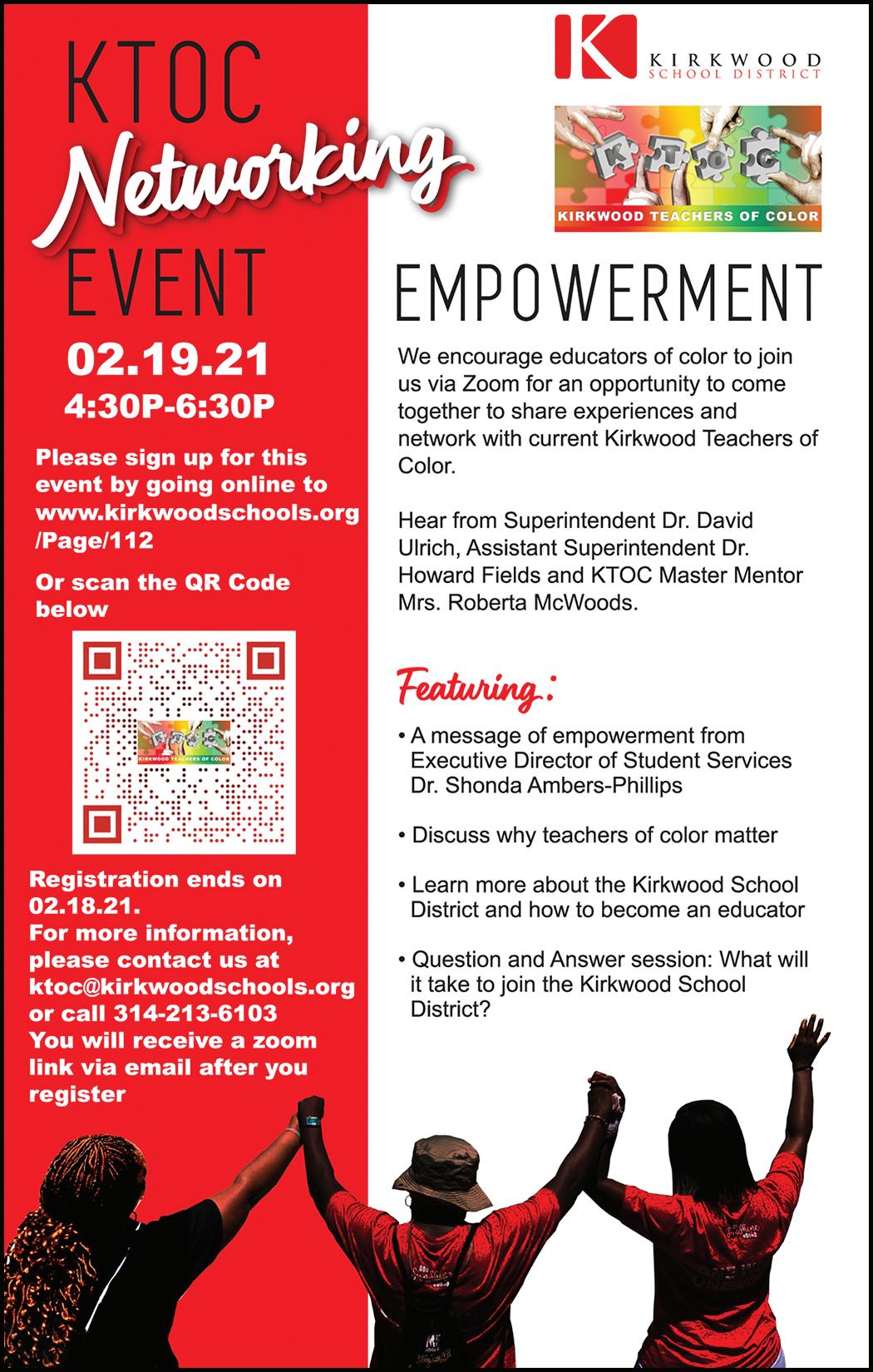
Nurses for Newborns (NFN) is an independent non-profit organization that serves families most at risk and works to save babies and strengthen families. If you are looking to make a difference in the lives of these families NFN is looking for you! NFN nurse provide in-home nursing visits to pre-natal, postpartum and newborn clients, assessing clients physical and social needs, providing early screenings and parenting tips and providing case management to families. The Nurses work with hospitals, physicians, managed care and community agencies to provide care for clients and make referrals for needed resources.
or zventura@vendev.cc
Qualified candidates must possess a current MO RN license and have their own vehicle, a current driver’s license and automobile insurance. 5 years experience in maternal/ child health OR 3 years of NICU/ Special Care Nursery experience is required as well as a Bachelor’s degree. Excellent computer skills a must! Please provide cover letter and resume to hr@nursesfornewborns.org
CLEAN-TECH
CITY OF CRESTWOOD
ST. LOUIS COUNTY, MISSOURI
NOTICE TO BIDDERS
Sealed proposals marked “Gym Floor Abatement” will be received at the Crestwood Community Center for the Crestwood Parks and Recreation Department. 9245 Whitecliff Park Lane, 63126, until 3 pm on Friday, February 24, 2021. A mandatory pre-bid meeting will take place at 3:00 pm, February 18, 2021 at the Community Center. Bidding documents and specifications may be obtained at the City of Crestwood website: www.cityofcrestwood.org. All bidders must register with Laura Ingold at lingold@cityofcrestwood. org. Failure to register may result in failure to



Positions: System Administrators, Data Analysts, Business Analysts, Application Developers, Innovation/Change Management Specialists, and Administrative Support role
The University Advancement Team at Washington University in St. Louis is seeking experienced professionals to join a team that will implement and manage the migration from our current alumni & donor system to a Salesforce platform. We are looking for individuals with experience in Salesforce Administration, Data Migration, System Implementations, Change Management. For a list of available positions, please visit jobs.wustl.edu and search for Alumni and Development Programs under “Location.”
Assistant Director - Career Development – 50062
The Assistant Director supports undergraduate and graduate students and alumni, as they navigate their career journeys. This position will develop and facilitate career education programming as well as advising/coaching students and alumni. They will work as part of the Career Development Team and in close collaboration with Campus Partners. The ideal candidate will have the following required qualifications: Bachelor’s degree, plus five years of experience in a related industry
Associate Director - Social Policy Institute - 50123
The position will lead and manage day-to-day activities related to the core mission of the Institute and maintain ongoing communication and coordination with University and external partners. The successful candidate will support and partner with the Director in strategy development - identifying new opportunities, relationships and resources to expand and amplify the University’s social policy innovation and impact. Candidates should possess a master ’s degree or higher in a related policy field; experience in planning and facilitating public events and private meetings; training in adult learning, event, development, and public/media presentations; knowledge of social policy development and implementation processes; at least ten years of supervision, management, and leadership experience in an applied research and/or social policy setting; successfully engaged in strategic plan creation and implementation.
Course Coordinator - Medical Student Education – 50019
This position is under the direction of the Director for the Office of Medical Student Education, the position is responsible for coordinating, administering and monitoring various components of the MD curriculum; while maintaining a positive and collaborative attitude in meeting deadlines and striving for continuous quality improvement as it relates to the mission of the office. The ideal candidate will have the following required qualifications: Equivalent of an associate degree with two to four years of relevant professional experience, preferably in higher education.
Instructional Specialist (Mathematics) - Biology-ISP – 50011
This position is responsible for promoting the understanding of and engagement with mathematics through interactions with teachers and students, as well as through the development of professional development opportunities. The ideal candidate will have the following required qualifications: Bachelor ’s degree in education or mathematics. Three years of experience teaching (Pre-K, elementary, middle or high school). Mathematic proficiency. Teaching certification in elementary, middle, or secondary content area or three to five years of successful teaching experience in a formal K-12 school.
For a full description of
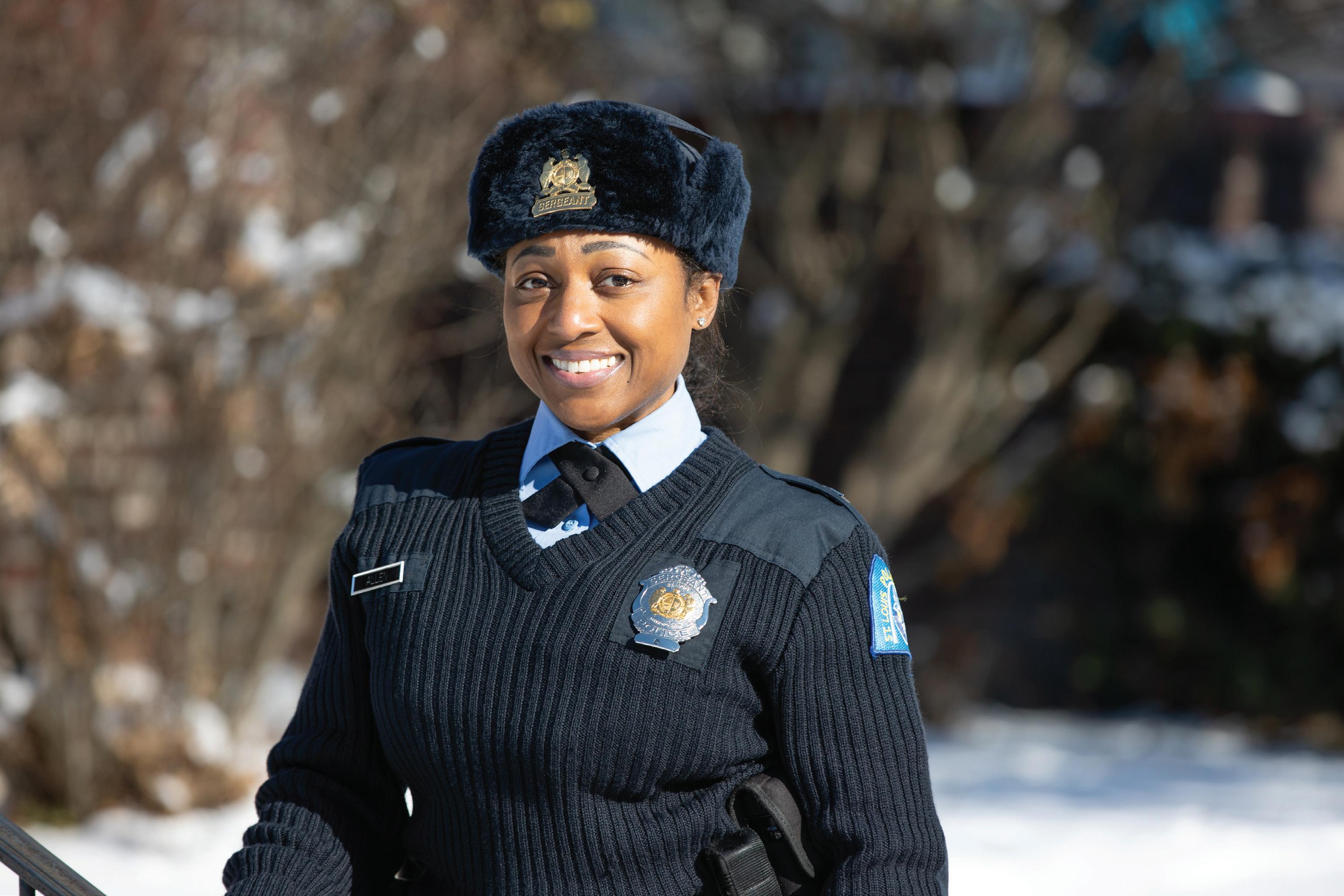

Notice To Small (SBE), Disadvantaged (DBE), Minority (MBE), Women’s (WBE), Service Disabled Veteran Owned (SDVOB) & Veteran Owned (VOB) Businesses Advertisement
River City Construction, L.L.C., 6640 American Setter Drive, Ashland, Missouri 65010, (573) 657-7380 (Phone) (573) 657-7381 (Fax) Is Seeking Qualified Small, Disadvantaged, Minority, Women’s, Service Disabled Veteran Owned & Veteran Owned Businesses For The University of Missouri SOUTH FARM – SWINE RESEARCH FACILITY, Columbia, Missouri: for subcontracting opportunities in the following areas: site work, paving, concrete, masonry, metals, rough carpentry, roofing, doors, glazing, painting, drywall, specialties, furnishings, fire protection, plumbing, HVAC, electrical, communications, electronic safety. All interested and qualified SBE, DBE, WBE, SDVOB, AND VOB businesses should contact, in writing, (certified letter, return receipt requested) Tim Pec or Joe Seymour to discuss the subcontracting opportunities. All negotiations must be completed prior to the bid opening date 3/04/2021 @ 1:30 P.M. Proposals will be evaluated in order on the basis of low responsive bid received. CERTIFICATION OF DBE/WBE/MBE/SDVOB/ VOB STATUS MUST BE SUBMITTED WITH BID. BID DOCUMENTS MAY BE OBTAINED BY:
1) Email your company name, contact name and phone number, as well as the project you are interested in to bid@rccllc.com
2) You will then receive an email invitation for that project with a link to our SmartBidNet system.
Sealed proposals will be received by the Board of Public Service in Room 208 City Hall, 1200 Market Street, St. Louis, Mo. Until 1:45 PM, CT, on March 9th, 2021 , then publicly opened and read. Plans and Specifications may be examined on the Board of Public Service website http://www.stl-bps.org/planroom.aspx (BPS On Line Plan Room) and may be purchased directly through the BPS website from INDOX Services at cost plus shipping. No refunds will be made.
A pre-bid conference for all contractors bidding on this project will be held on February 11th, 2021 at 10:00 A.M. in onsite.
Bidders shall comply with all applicable City, State and Federal laws (including MBE/WBE policies).
All bidders must regard Federal Executive Order 11246, “Notice of Requirement for Affirmative Action to Ensure Equal Employment Opportunity”, the “Equal Opportunity Clause” and the “Standard Federal Equal Employment Specifications” set forth within and referenced at www.stl-bps.org (Announcements).
St. Louis County Department of Human Services
United States Department of Treasury Emergency Rental Assistance Program Funding.
The St. Louis County Department of Human Services is seeking a qualified and experienced proposer through the Request for Proposal (RFP) to develop, implement, and administer the United States Department of Treasury Emergency Rental Assistance Program (ERAP) funding in the amount of $29,735.926. The services needed may include consulting, technical solutions, and other components necessary to develop, implement, and operate the program. ERAP funds must be used to provide assistance to eligible households that have difficulty making timely rent and utilities payments due to the COVID-19 pandemic.
Proposals are due by 11:00 a.m. on February 12, 2021. Request For Proposal details and specifications can be obtained at the St. Louis County Vendor Self Service at https://stlouisco.munisselfservice.com/ Vendors/default.aspx
BID NOTICE
Great Rivers Greenway is seeking a Greenway Operations Supervisor. Go to www.greatriversgreenway.org/ jobs-bids/ and submit.

B i d s f o r
Masa Breach
R e c a l m a t i o n
Project, Barton County, Liberal, MO, Project No. Y2102-01 will be received by FMDC, State of MO, UNTIL 1:30 PM, March 11, 2021 For specific project information and ordering plans, go to: http:// oa.mo.gov/ facilities
The St. Louis Economic Development Partnership (the “Partnership”) solicits proposals from qualified temporary staffing agencies to provide staffing services for various projects, on an as needed basis during calendar year 2021. A five percent bid preference may be available to certified MBE firms. A copy of the RFQ is available at https:// stlpartnership.com/rfp-rfq/ Submissions must be received no later than 3 PM CST on Thursday, March 4, 2021.
St. Louis Economic Development Partnership Equal Opportunity Employer

Bids for Replace Roof Professional Registration State Office Building, Project No. O2006-01 will be received by FMDC, State of MO, UNTIL 1:30 PM, March 4, 2021 For specific project information and ordering plans, go to: http://oa.mo. gov/facilities
Notice is hereby given that The Metropolitan St. Louis Sewer District (District)
PM on Friday, March 12, 2021 There is a Non-mandatory pre-bid meeting on February 23, 2021 at 2:00 PM. Registration is required to participate through a computer or tablet. To register, visit msdprojectclear.org/TulaneWilbur. Once you register,
webinar ID: 940 0966 3074 and password: 196628 Participants using the dial in option will not be able to submit questions during the meeting, however, we invite you to send questions to Steve Roberts, sroberts@stlmsd.com.
Bids will be received only from
The Missouri Lottery is accepting bids for the purpose of establishing a contract for audit services. The bid document with the specifications can be obtained by going to http://www.molottery.com/ learnaboutus/bid_opportunities. shtm or by contacting Melissa Blankenship at melissa. blankenship@molottery.com or 573-751-4050.
The Missouri Lottery is accepting bids for the purpose of establishing a contract for field services software. The bid document with the specifications can be obtained by going to http://www.molottery.com/learnaboutus/bid_opportunities.shtm or by contacting Melissa Blankenship at melissa.blankenship@ molottery.com or 573-751-4050. NOTICE
The Land Clearance for Redevelopment Authority of the County of St. Louis (the “LCRA”) requests proposals from qualified contractors to perform certain lawn-care, landscaping, property-maintenance, and debrisremoval services for various real property parcels located in St. Louis County. The requested services shall be for a one-year period with two successive options for the LCRA to renew for terms of one year each. A five percent bid preference may be available to certified MBE firms. A copy of the RFP is available at https://stlpartnership.com/rfp-rfq/ Proposals must be received no later than 3:00 PM CST on Friday, March 5, 2021.
St. Louis Economic Development Partnership Equal Opportunity Employer
City of Crestwood, 1 Detjen Drive, Crestwood, MO 63126 is seeking bids for The Historic Thomas Sappington House gutter and downspout project. Bids due 2/25/2021 by 3:30 p.m. by email to jgillam@cityofcrestwood.org An optional pre-bid site meeting will be held on 2/22/21 by appointment at 1015 South Sappington Road, Crestwood, Missouri, 63126. Complete sets of procurement document may be obtained from Cross Rhodes Print & Technology, 2731 S. Jefferson Ave., St. Louis, MO 63118. For project questions and on-site appointment, contact Juliana Schafer at jschafer@bondarchitectsinc.com
The Primettes visited the Hits-
ville USA recording studio daily after school hoping to leave enough of an impression on Motown founder and president Berry Gordy to join his artists on the label everyone felt was destined for stardom. Their resolve was strengthened when Paul Williams and Eddie Kendricks of The Primes teamed with Otis Williams & the Distants and formed The Temptations.
Gordy agreed to sign The Primettes under two conditions: They had to graduate high school and the group’s name had to go. On Jan. 15, 1961, they were christened The Supremes, and within a week inked a deal. Shortly after, the quartet became a trio that was among Motown’s greatest musical attractions, contributing immeasurably both to music and popular culture.
“The Supremes were always known as the ‘sweethearts of Motown,’” Motown founder Berry Gordy Jr. said in a statement on Wilson’s death.
A trailblazer and diva
“After an unprecedented string of No. 1 hits, television and nightclub bookings, they opened doors for themselves, the other Motown acts, and many others. Mary Wilson was extremely special to me. She
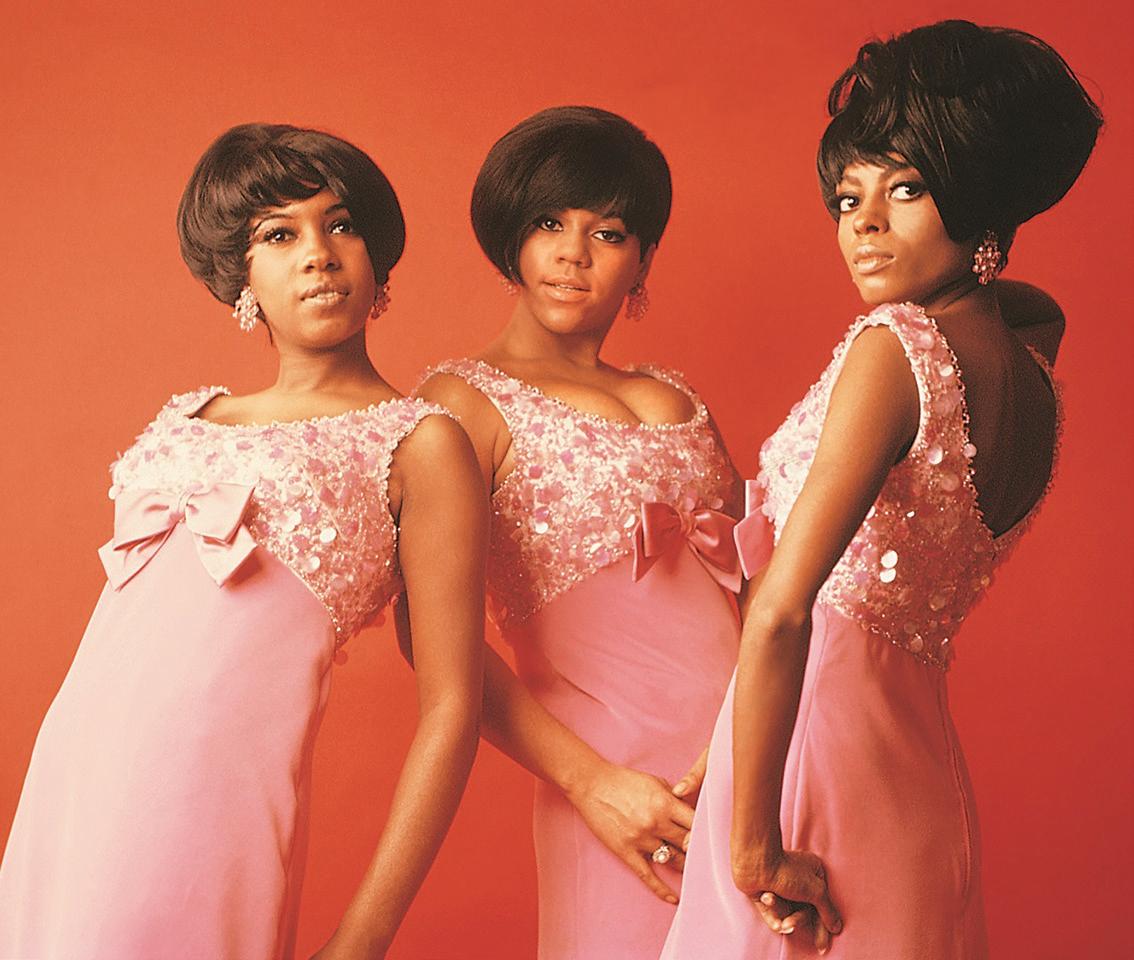
was a trailblazer, a diva and will be deeply missed,” Gordy said.
Songwriter Brian Dozier, who wrote hits for Motown as part of the iconic Holland-Dozier-Holland, referred to Wilson as the anchor of the group.
“She was the glue that kept the Supremes together when we had problems in the studio,” Dozier told Rolling Stone. “We had times we used to argue about the songs or whatever parts we should sing. She would always look at the big picture and try to get everyone to settle down and do the job.”
Wilson had the distinction of being the only Supreme who
was there from the beginning until the end. The Supremes disbanded in 1977.
She went on to embark on a solo career, raise three children, write four books and use her celebrity to promote humanitarian causes. In 2019, Wilson appeared on the 28th season of the ABC Network hit “Dancing With the Stars.”
“Singing was a hobby,” Wilson said. “My two friends and I never could have imagined that 50-some years later that we would be known all over the world because of a gift from God.”

Those familiar with Black history know how Hampton’s story ends. But an element of surprise is successfully pulled off by telling the story through the eyes of Ron O’Neal, an FBI informant, who set the wheels in motion for the culminating tragedy of the story.
“A badge is scarier than a gun,” O’Neal says to his FBI handler, driving home the intention of the film from the very beginning. “Any [n-word expletive] on the street can get a gun. You got a badge, it’s like you got a whole army behind you.”
Since O’Neal is front and center for “Judas and the Black Messiah,” audiences will not be granted a back story on the root of Hampton’s interest in activism. And unfortunately, O’Neal is underdeveloped as a character to have such a critical presence within the story.
The fear and anxiety of being a double agent are front and center as O’Neal is put in positions that make him afraid for his life. However, the guilt and shame of betraying his people and a movement are noticeably absent.
In all fairness to the film, O’Neal didn’t express those feelings in the rare interviews he granted. But based on his own postscript, it is clear that he was haunted by his choices.
Considering the other liberties taken within the film, sprinkling in a bit of humanity within O’Neal’s narrative would have fleshed out the character arc — as well as offset some of the gratuitous violence.
The shortcomings of the “Judas and the Black Messiah” story are offset by immaculate production value and stellar performances.
Cinematographer Sean Bobbit and editor Kristan Sprague borrow from the best
group of participants from around the region can present their work to the public and collaborate directly with the artist to create new works to share.
For Fowler, N2EXISTENCE is “a movement to create cultural change, inspiring people to use their passions to manifest new realities of freedom.”
Foundational to Fowler and The Luminary’s vision is the belief that art is not just a voice of its time, but also a means of building new futures. This project reflects the ambitions of the STLMade movement to deepen conversations on the St. Louis region’s collective future and collaboration as a key theme in moving the region forward.

of the Blaxploitation era to create scenic experience and film pace that is true to the era it represents.
The music (which earned a “Best Original Song” Golden Globe nomination for “Fight for You” by D’Mile, H.E.R. and Tiara Thomas) captivates in the vein of the Black films of the late 1960s and early 1970s — to the point where the score and soundtrack were as essential to telling the story as a featured character. St. Louis’ own rapper/singer producer Smino joins the likes of Nas, Nipsey Hussle, Jay-Z, Black Thought, BJ The Chicago Kid, A$AP Rocky and more as featured artists on the film’s soundtrack.
The audience is further transported by the stunning portrayals of the ensemble of actors. Led by LaKeith Stanfield as Ron O’Neal and Daniel Kaluuya as Fred Hampton and Dominique Fishback as Hampton’s girlfriend, each player makes the most of every moment he or she spends on camera.
Kaluuya’s passion and intensity pick up the slack for
a less than convincing accent in comparison to his castmates organic delivery — so much so that the performance earned him a Golden Globe nomination for “Best Supporting Actor.” Stanfield should have also been a contender for the award. Perhaps it would have been so if his character had a love interest with the type of chemistry between Kaluuya and Fishback that is impossible to ignore during awards season. Jesse Plemons is once again effective in his lane of understated but essential supporting character as O’Neal’s FBI handler Roy Mitchell. Martin Sheen’s J. Edgar Hoover is the lone exception in solid performances from Ashton Sanders, Darrell Britt-Gibson, Algee Smith and Lil Rel Howery — who steals the one scene he’s in. Thanks to prosthetics and makeup Martin Sheen is as unrecognizable as his performance is unmemorable.
‘Judas and The Black Messiah’ opens in theatres and on HBO Max Friday, Feb. 12. The film is rated R with a running time of 126 minutes.
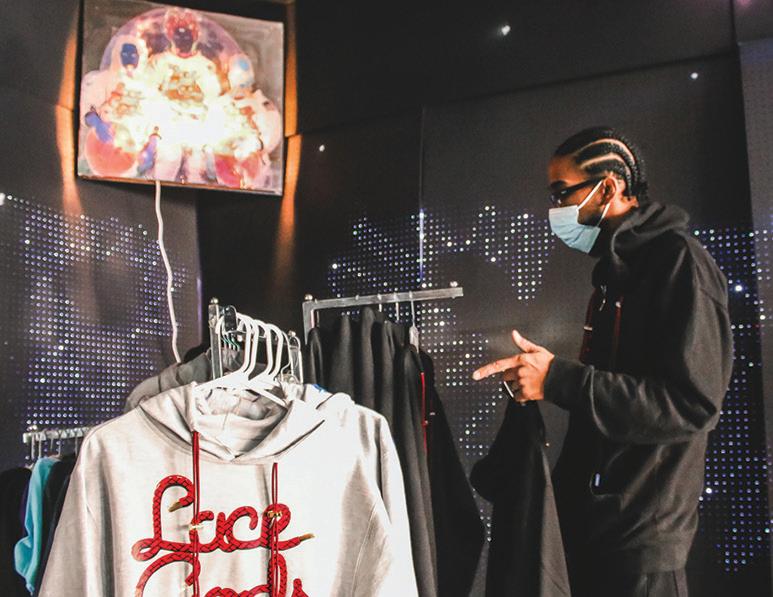
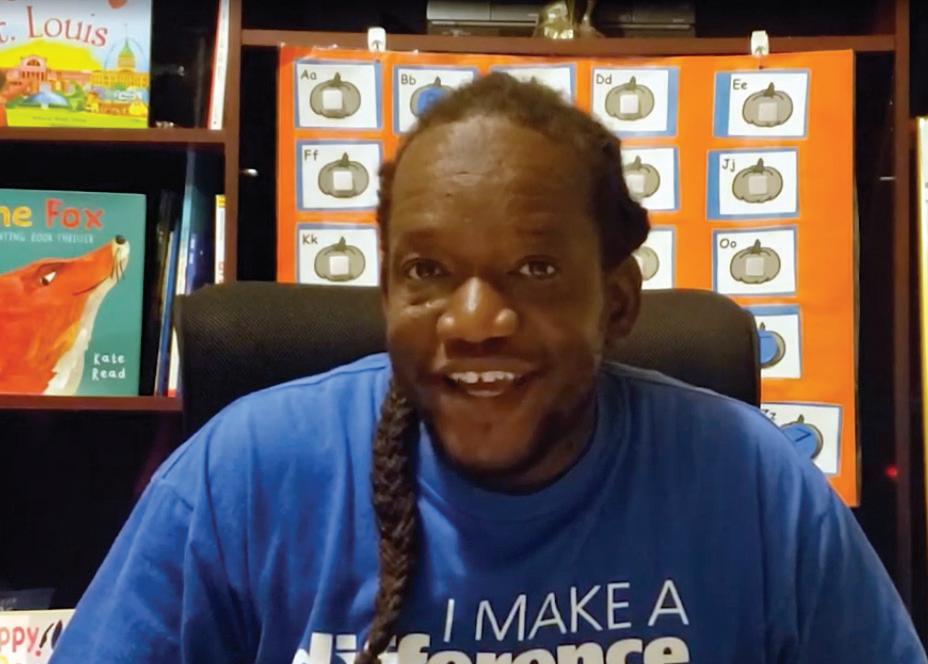

“Aaron Fowler’s new project, N2EXISTENCE, is a haven, and a heaven, in the heart of St. Louis. N2EXISTENCE is a portal: a world in which dreams are made manifest and everything glows, despite the darkness,” said Monique Mitchell, Fowler’s friend and collaborator. Lace Gods is open from 11
a.m. to 7 p.m. daily through Feb. 22 at 2834 Cherokee St in the N2EXISTENCE storefront. The final project at N2EXTISTENCE will open with Tyrell
